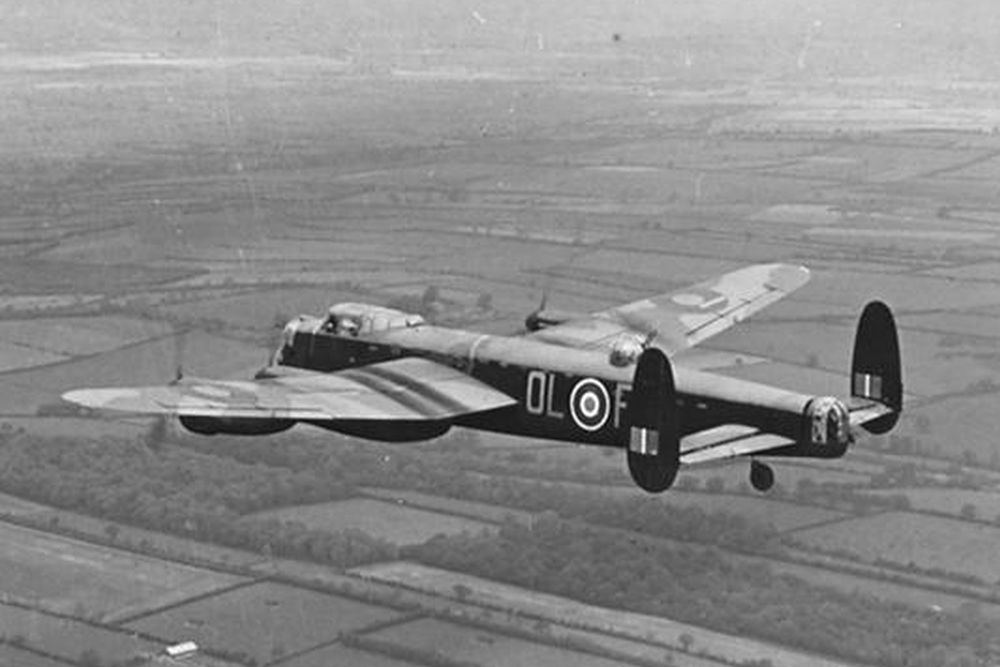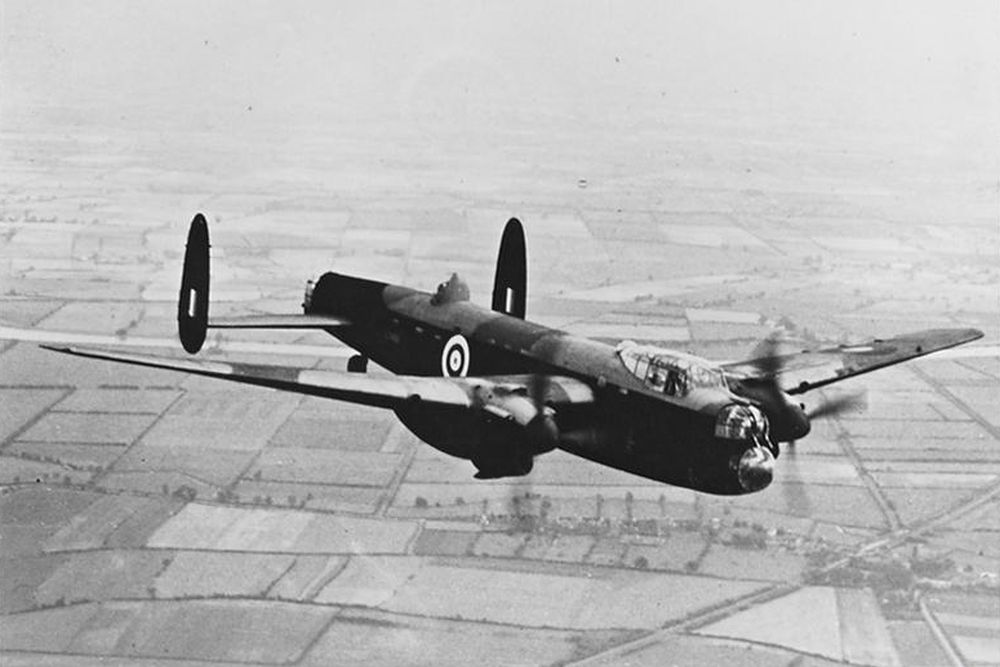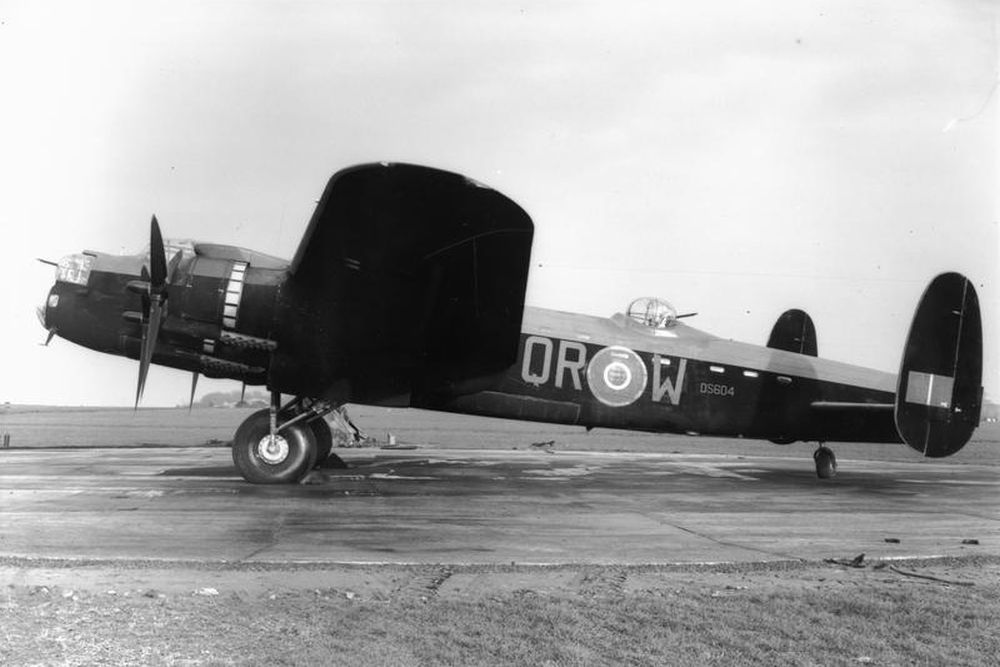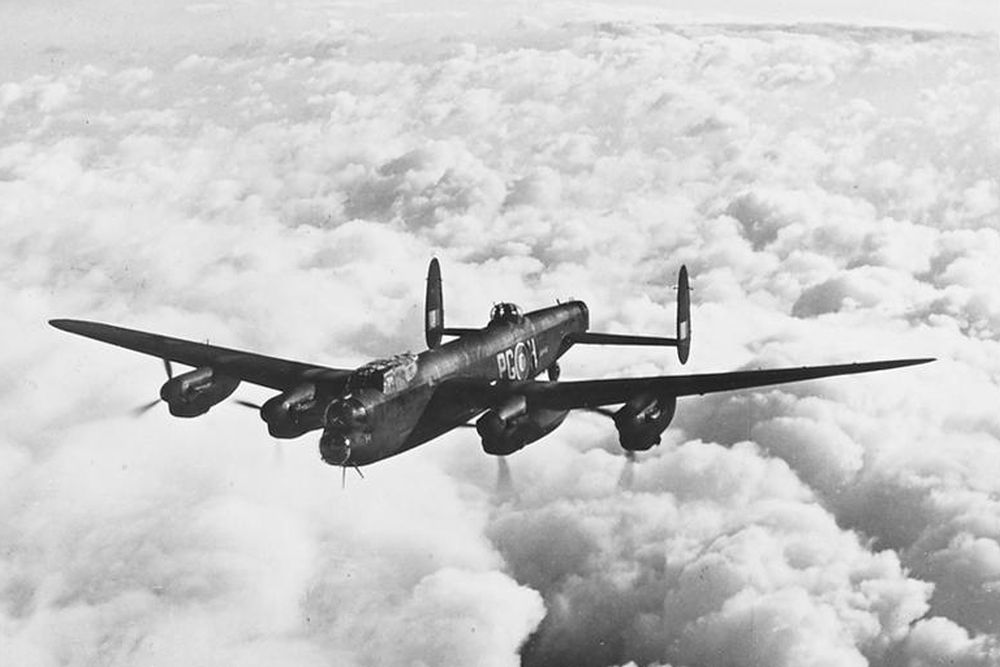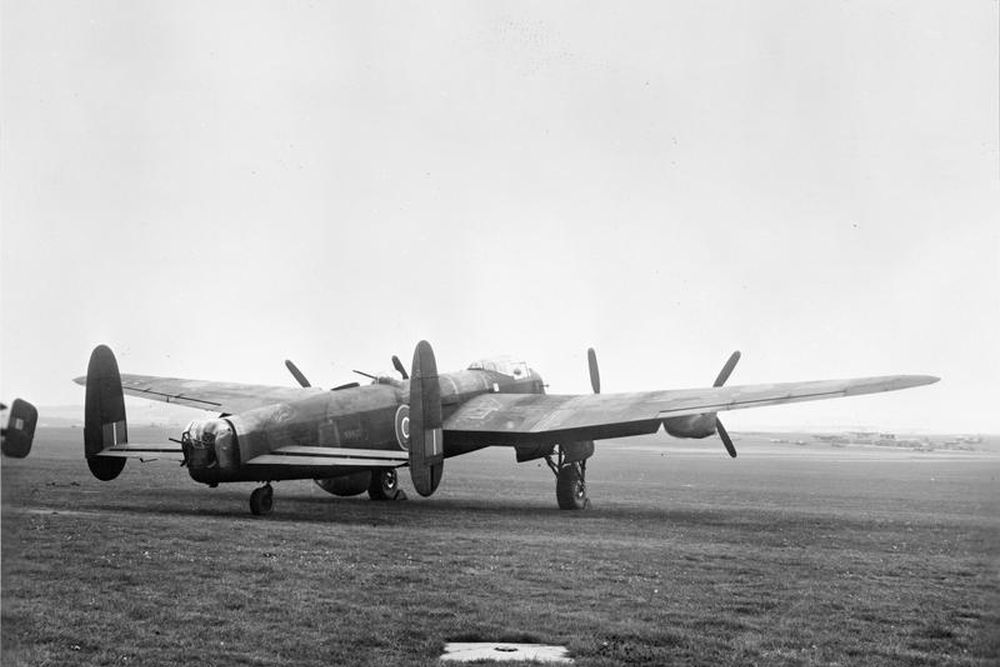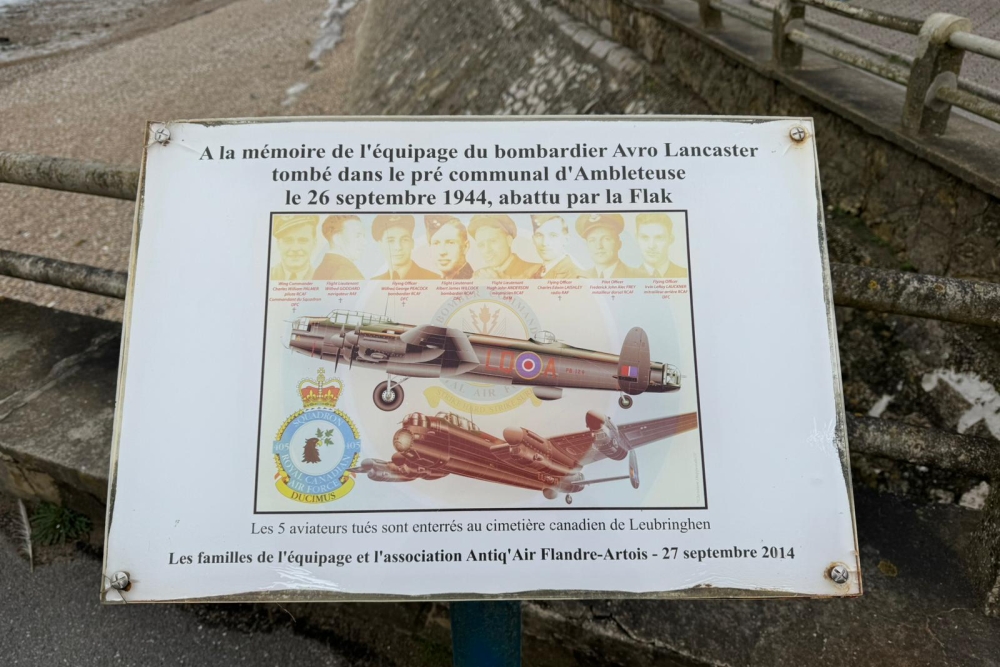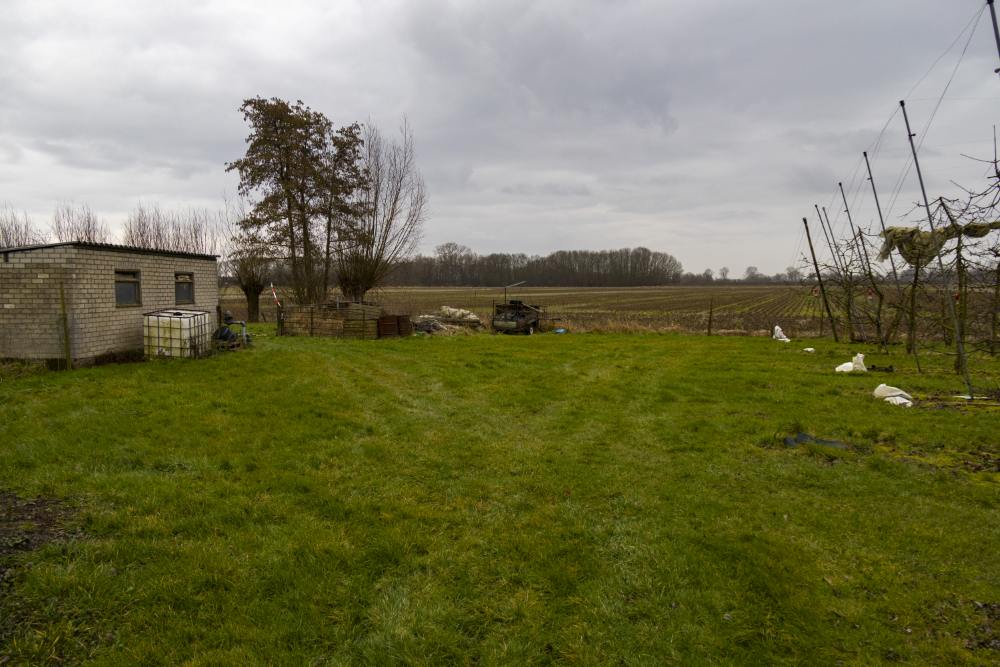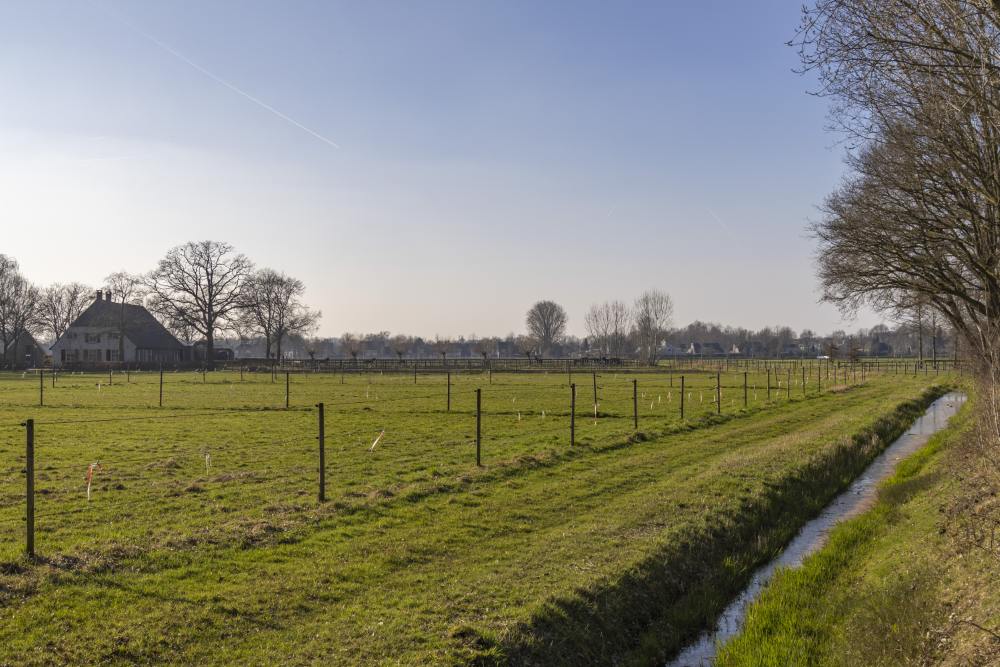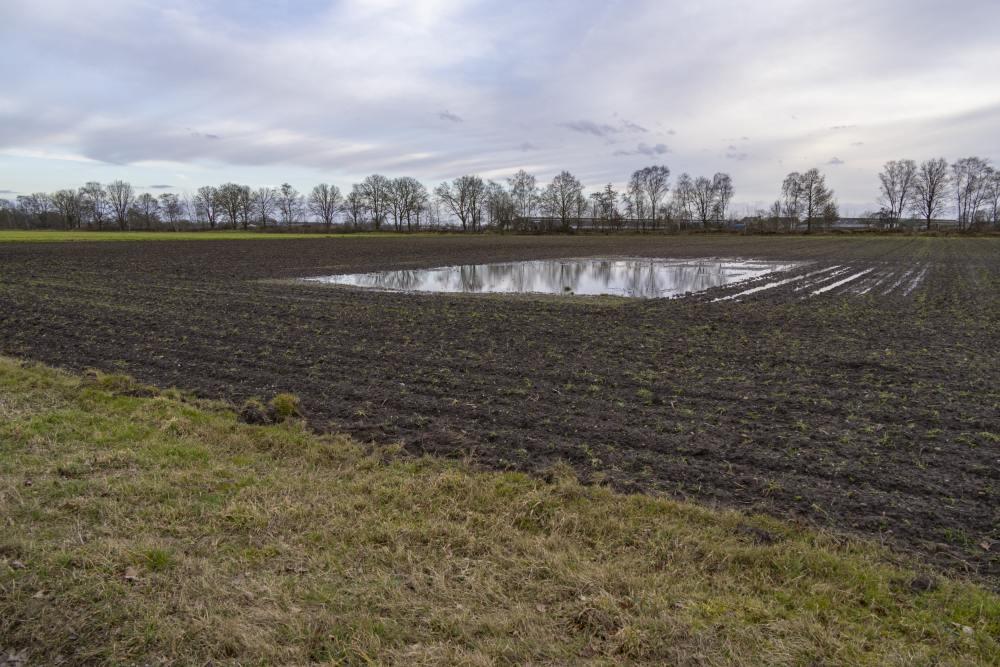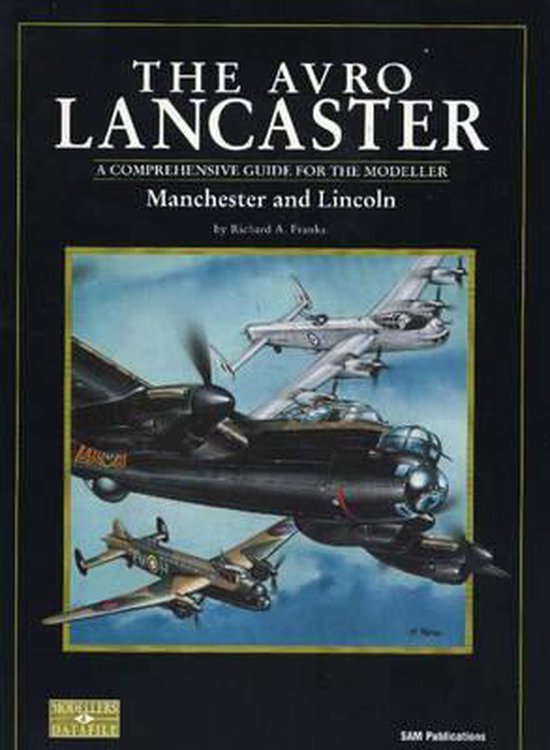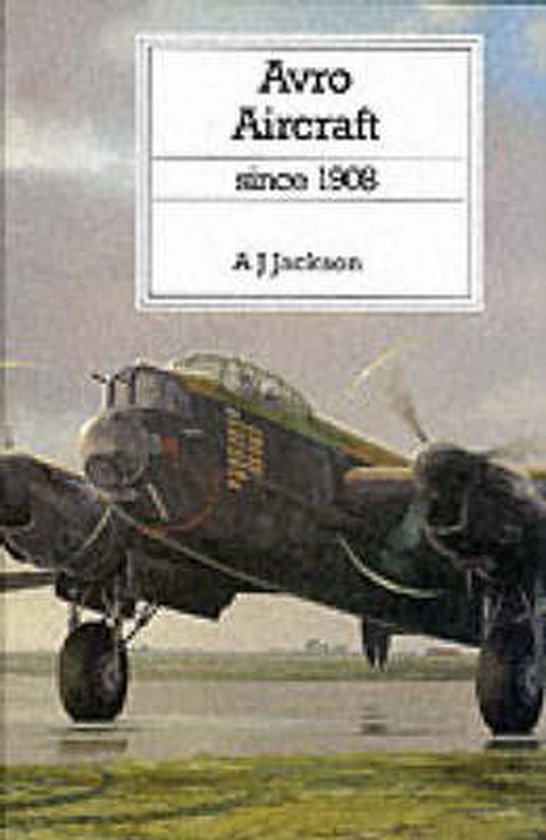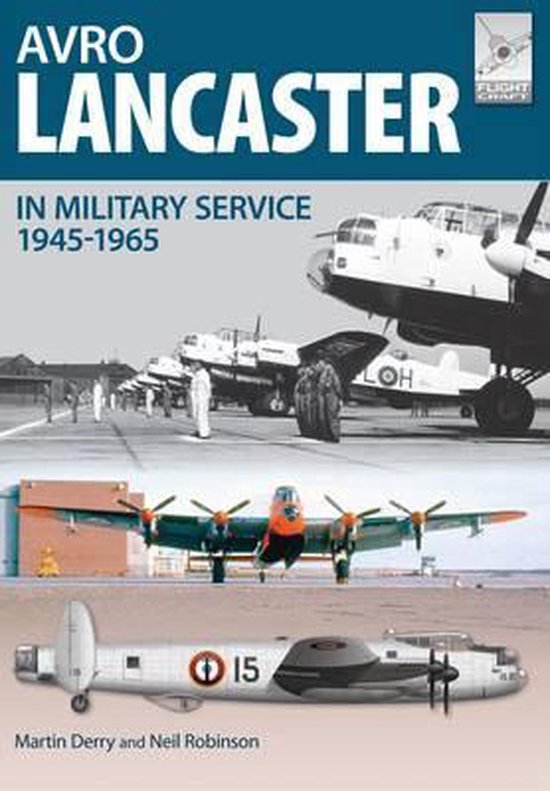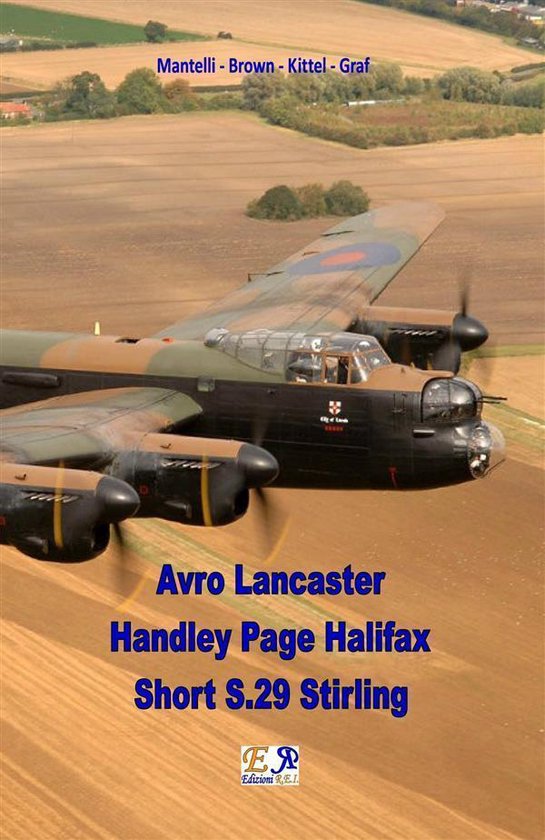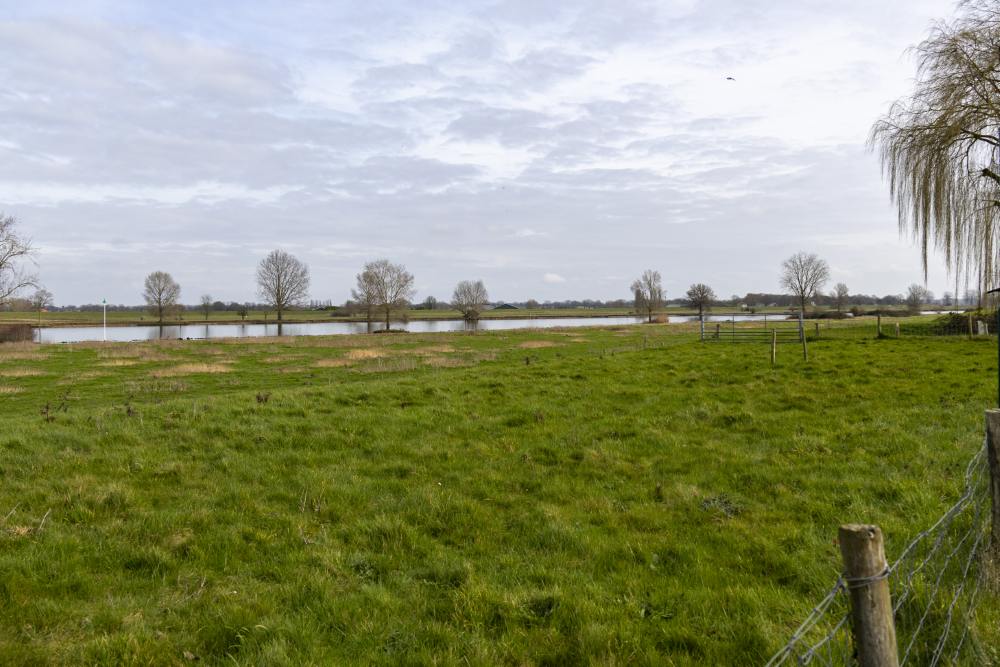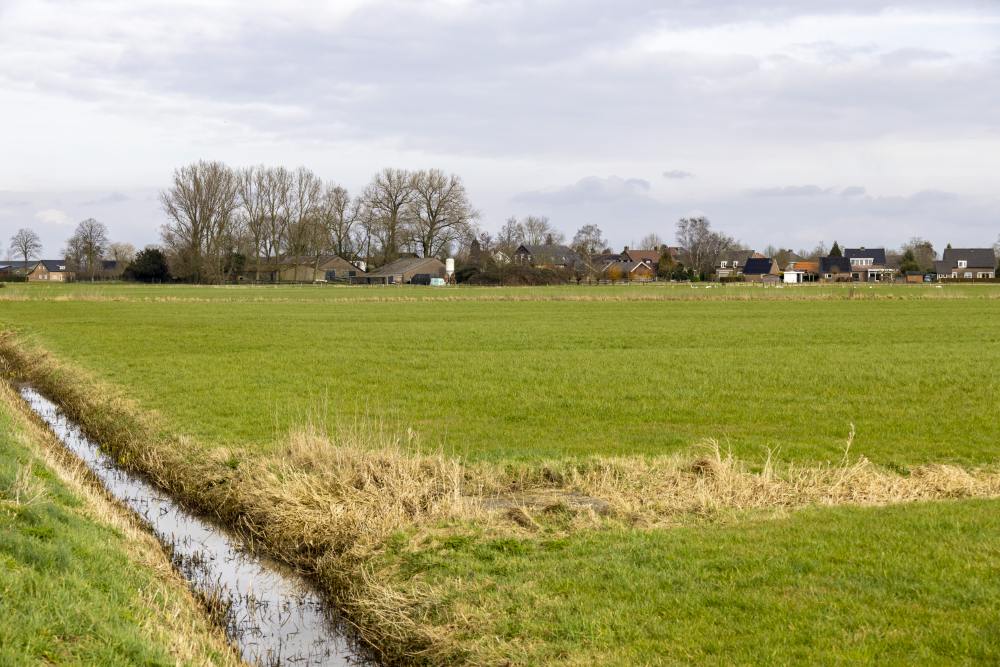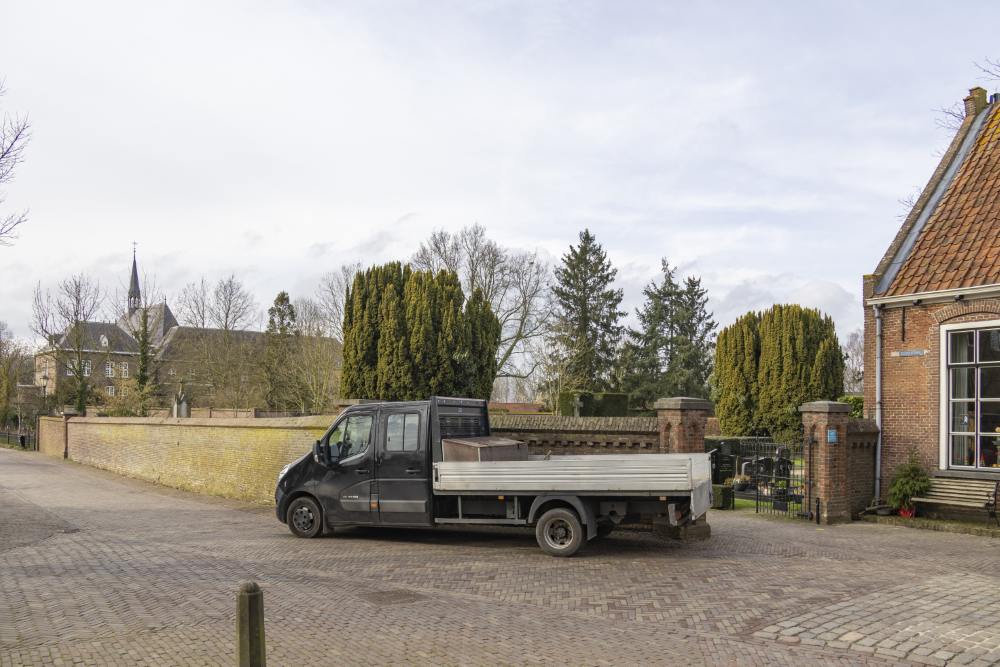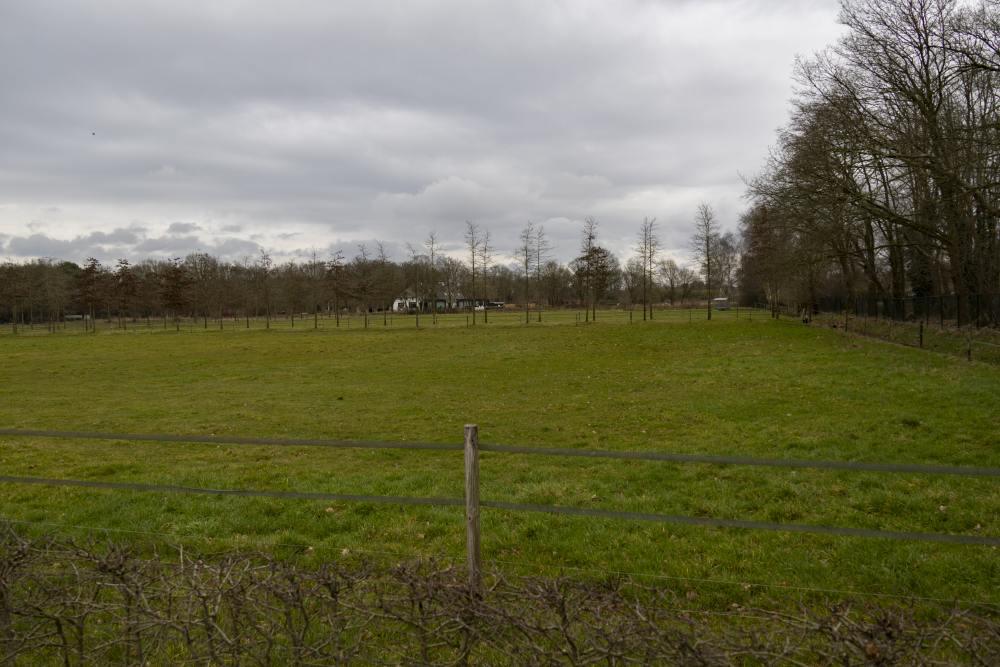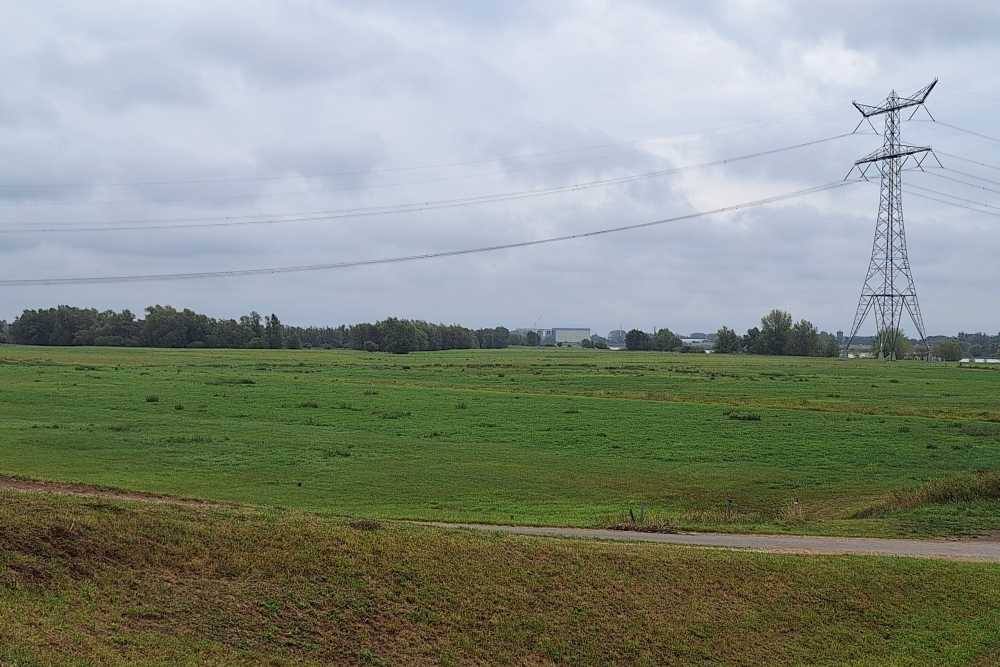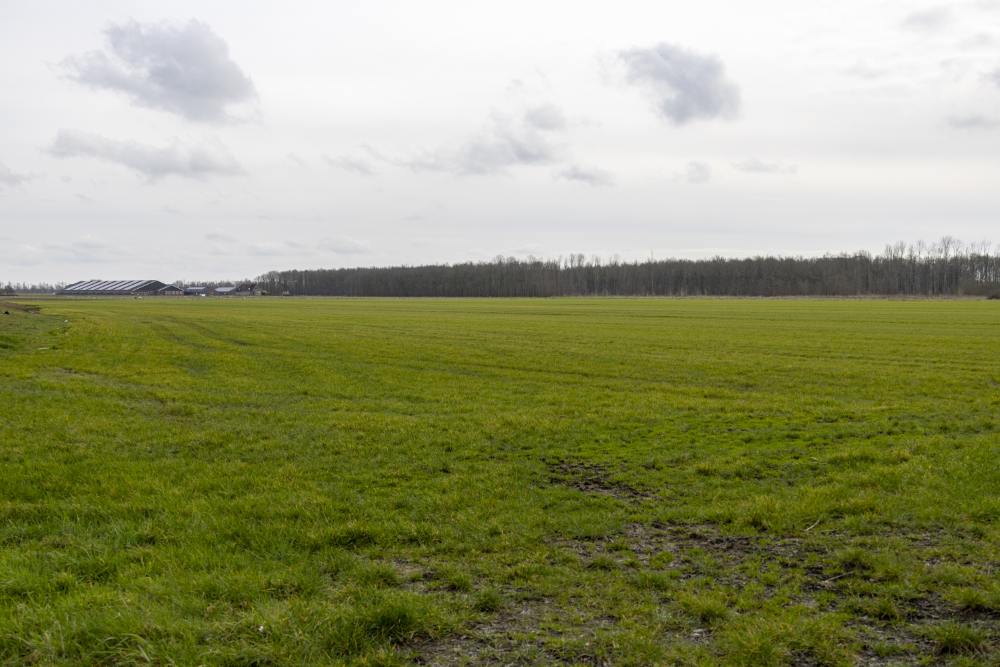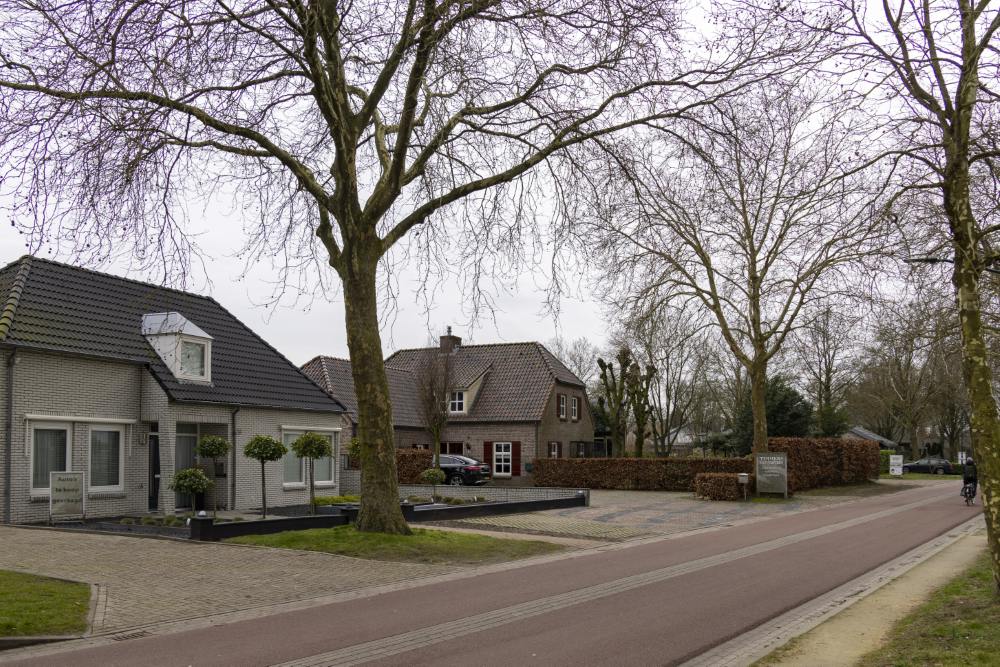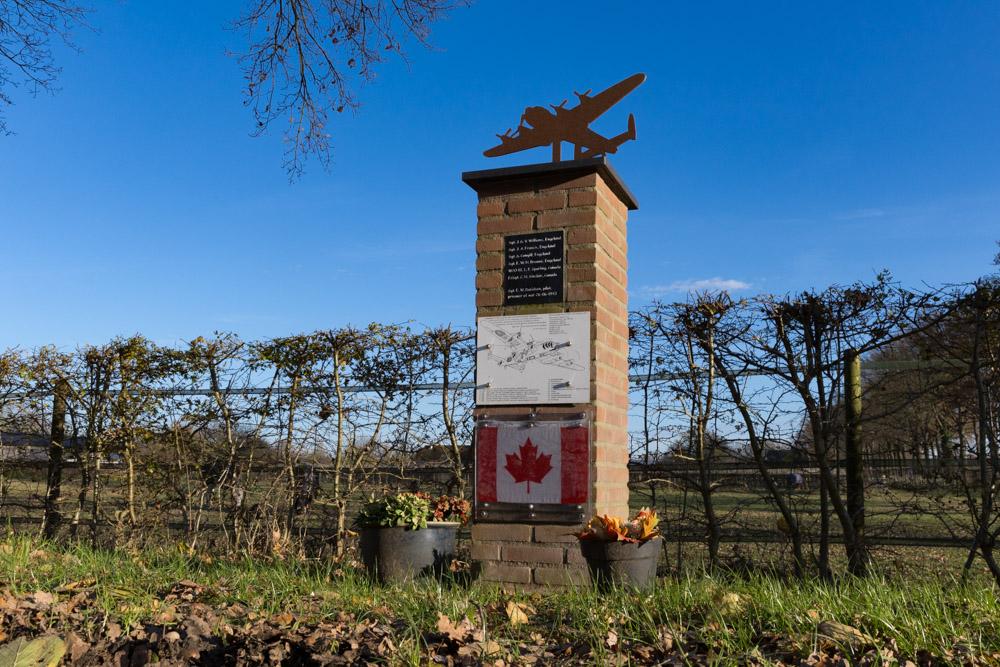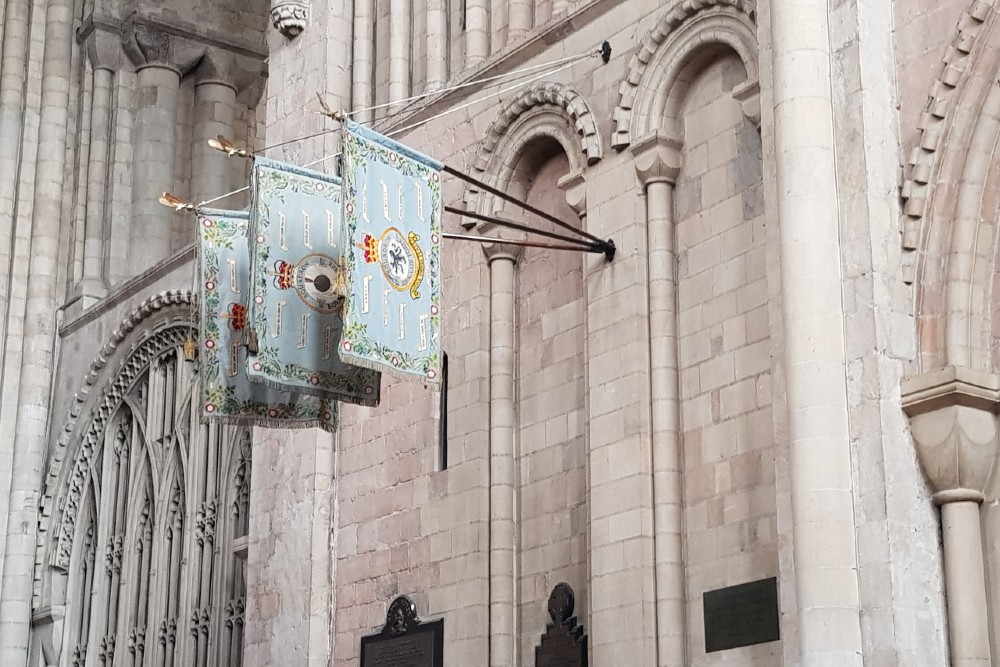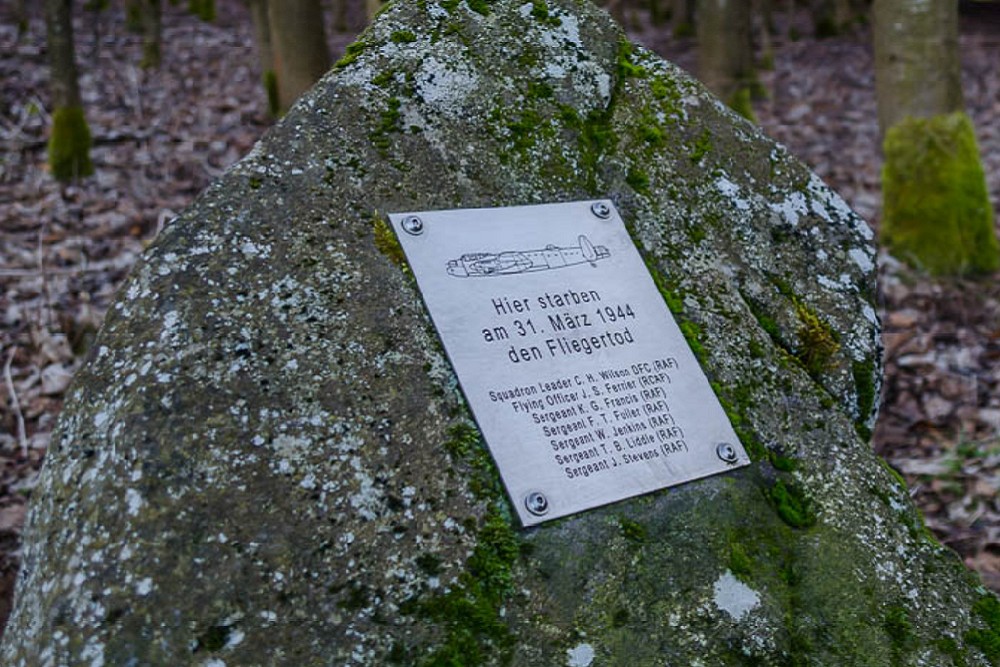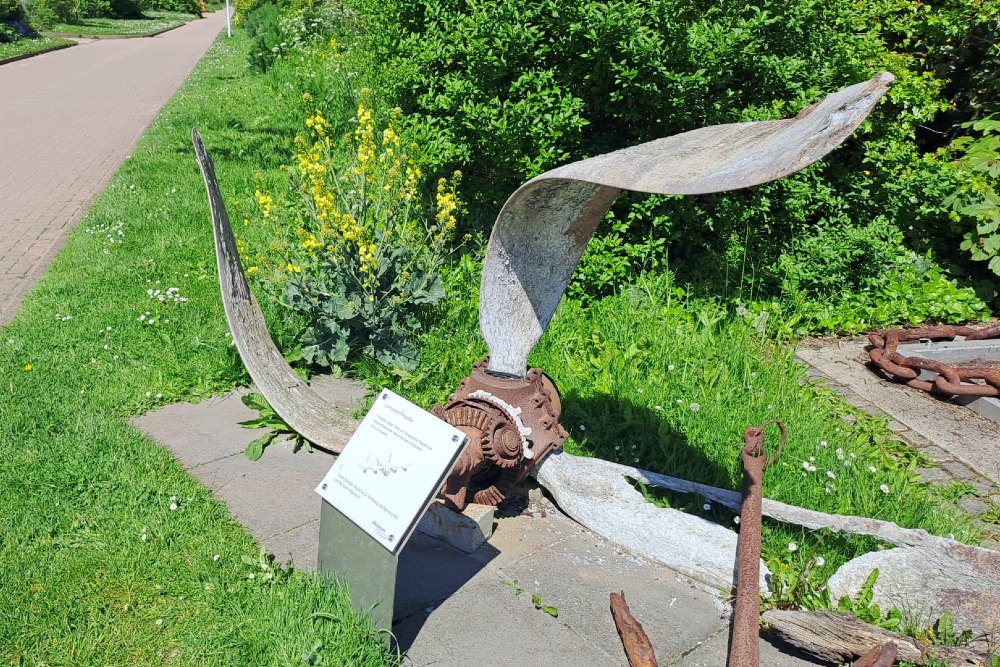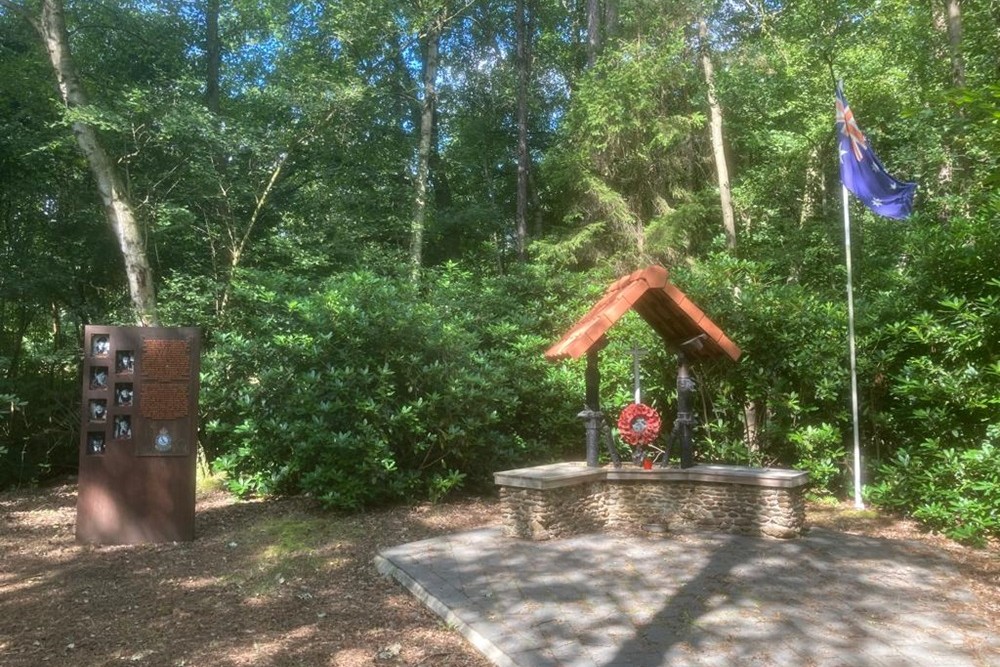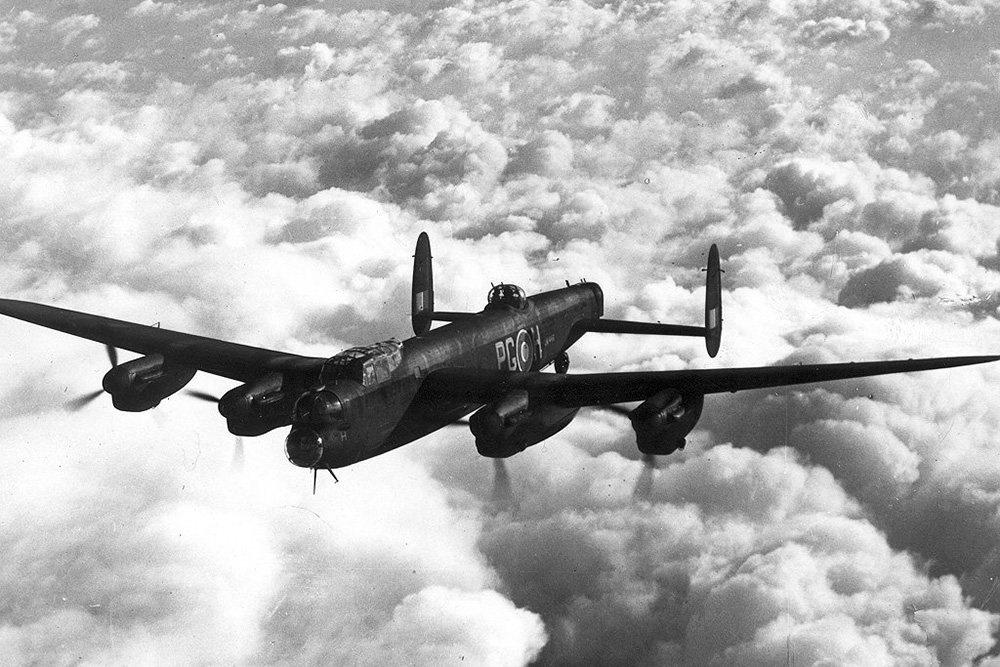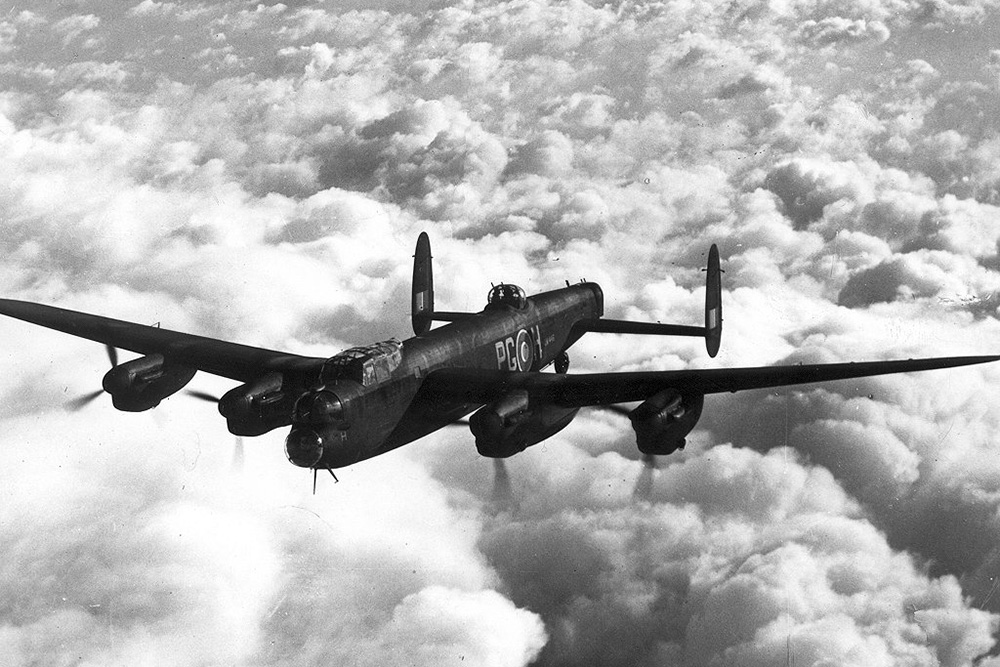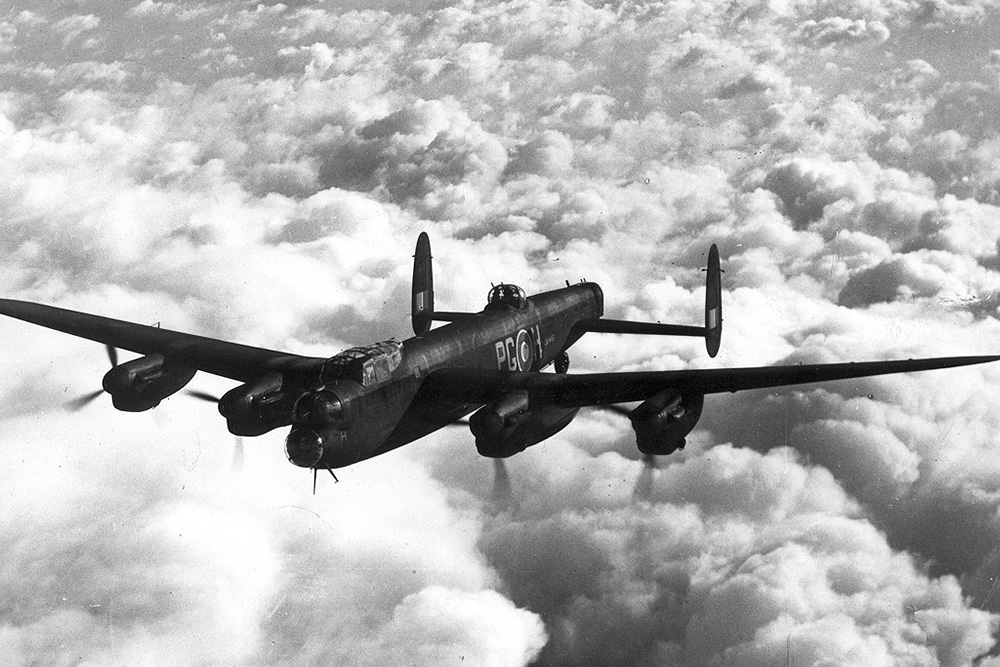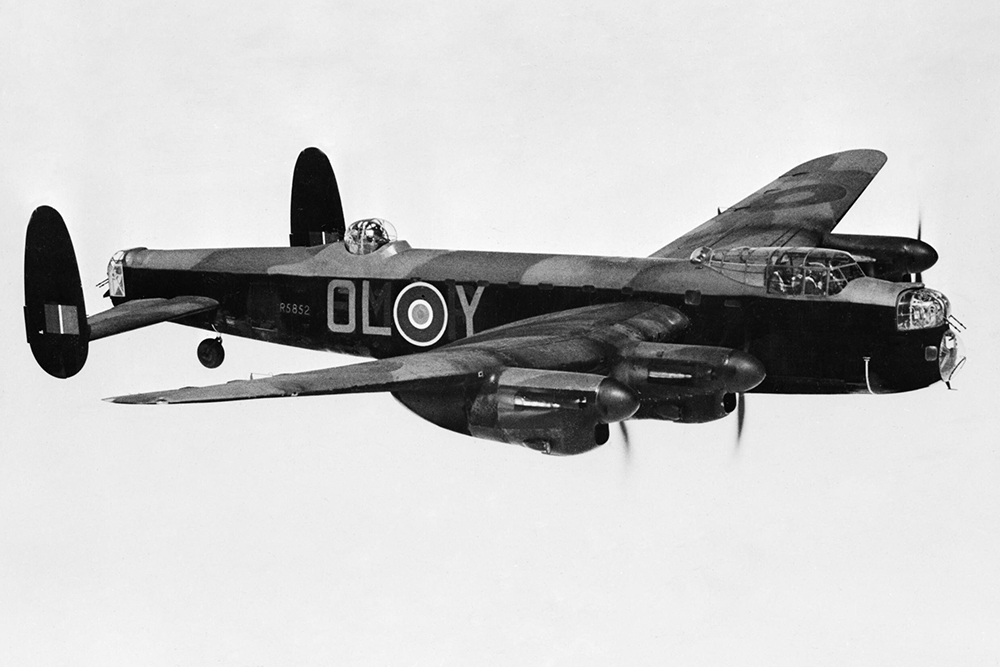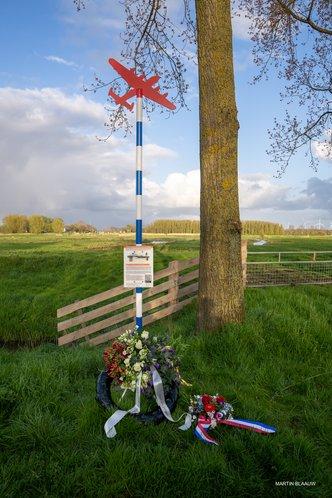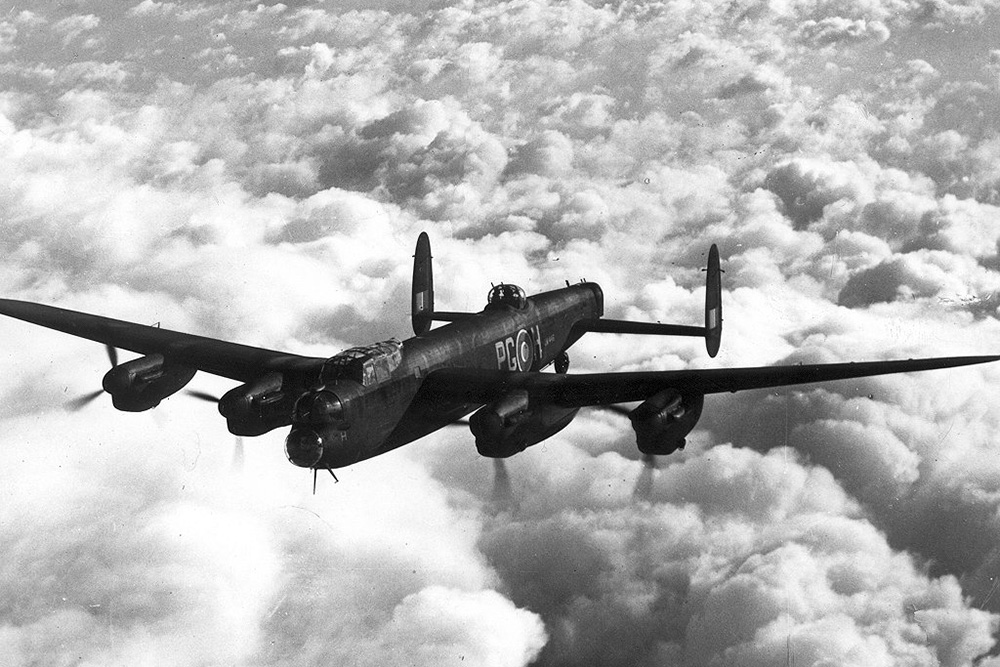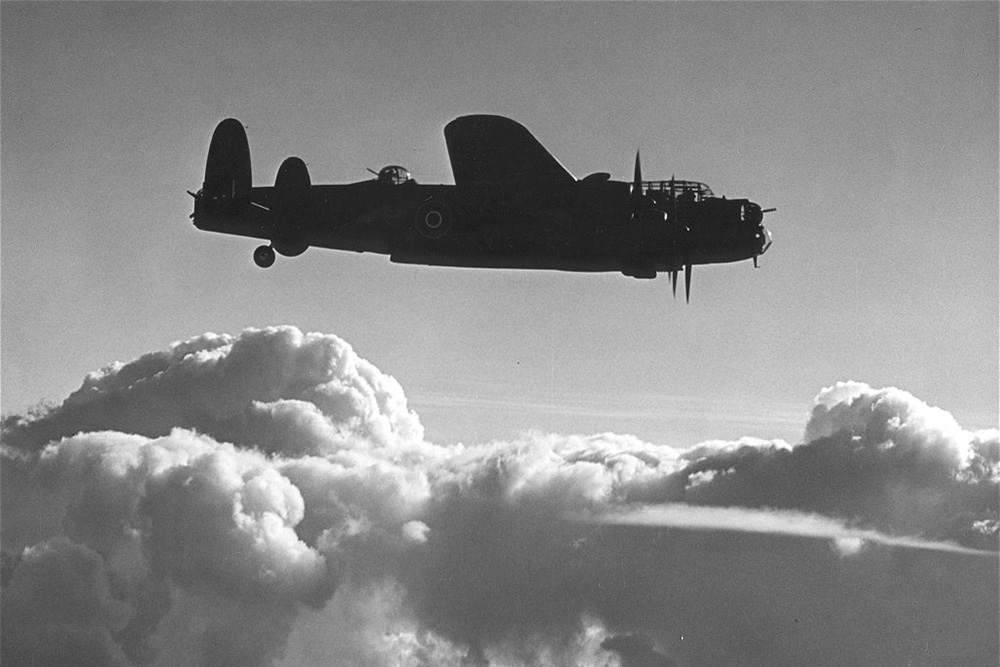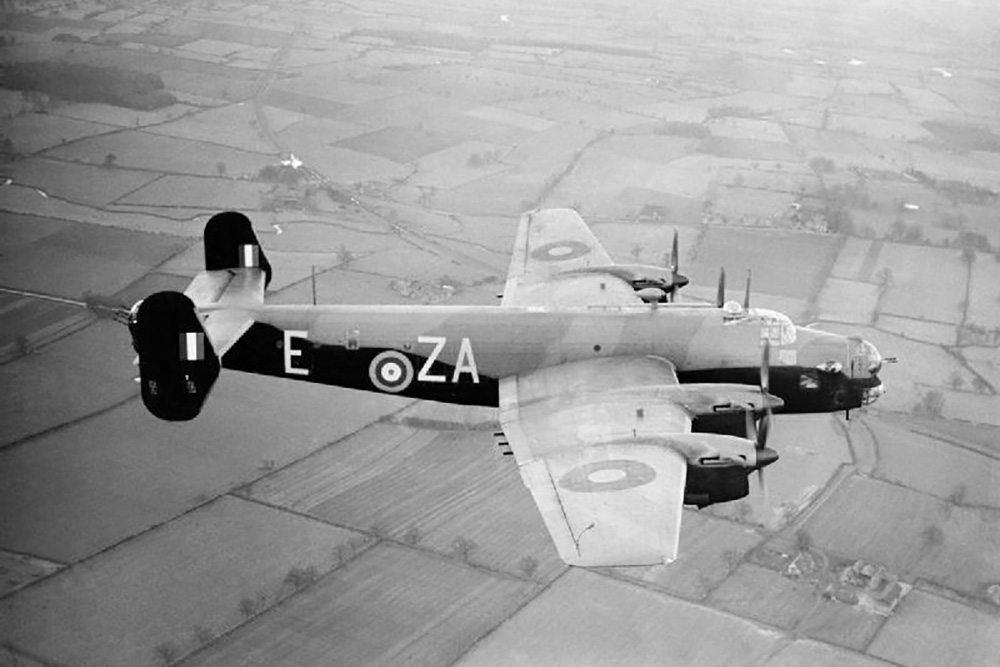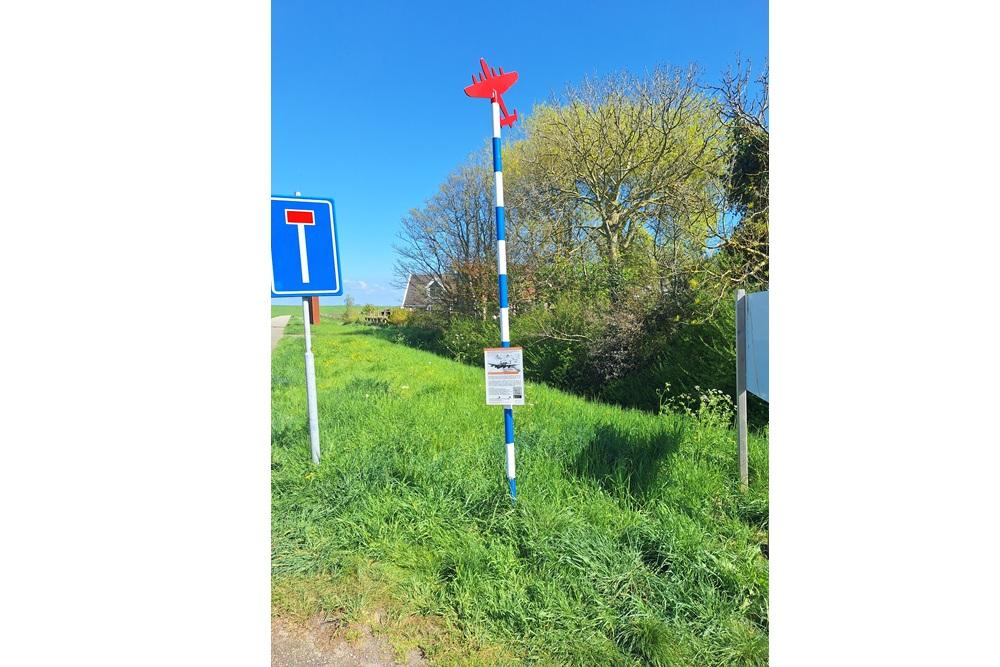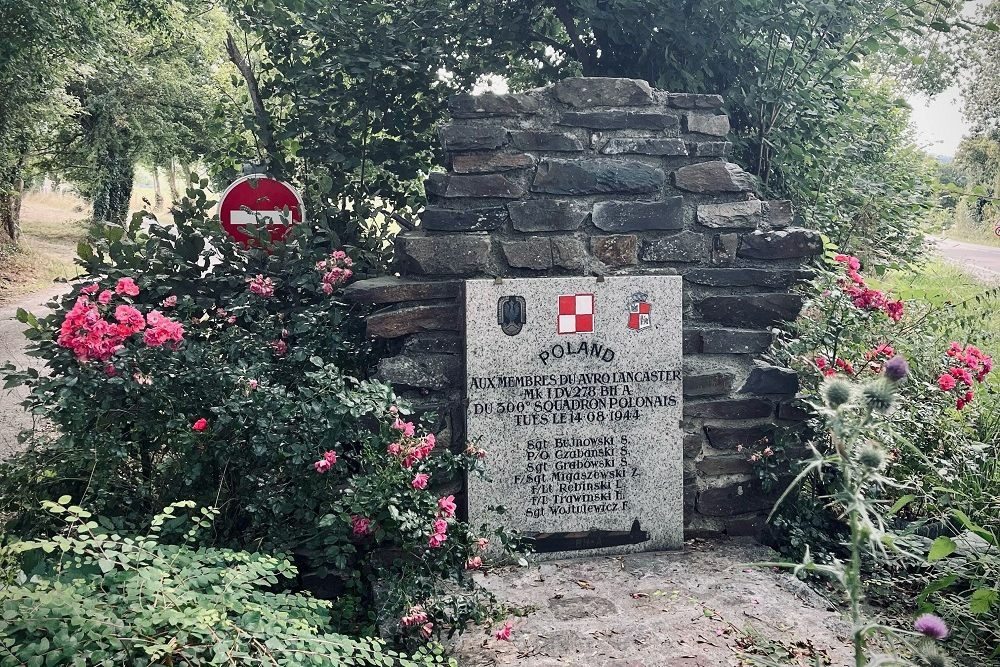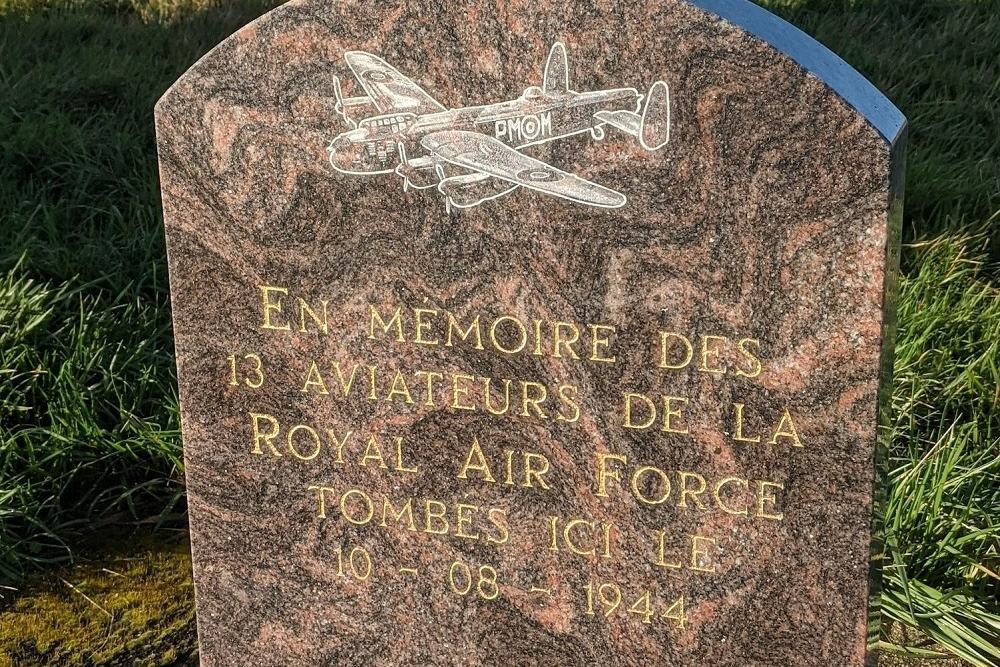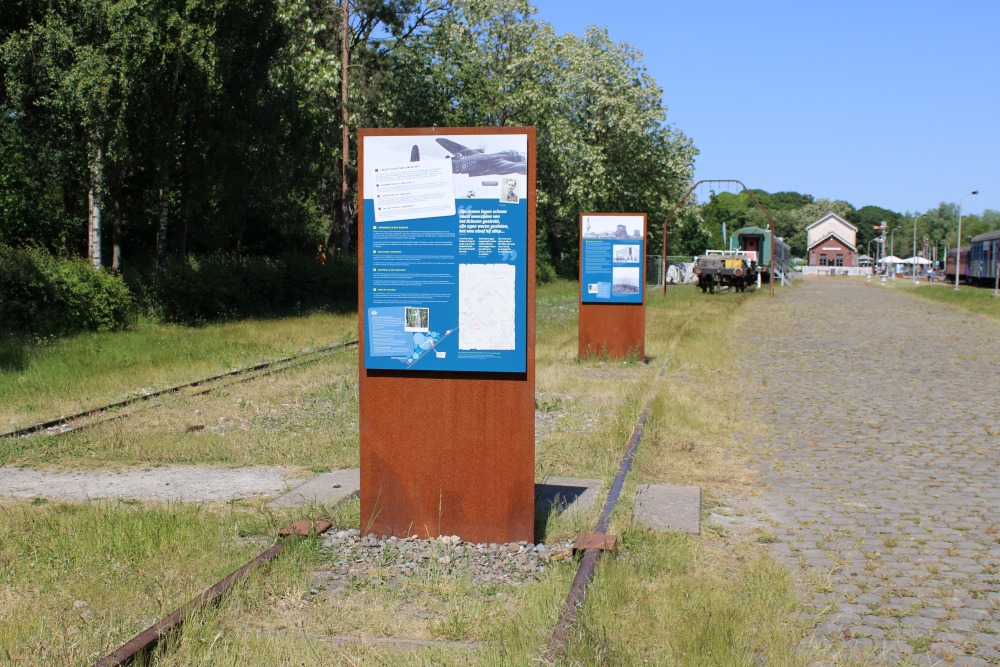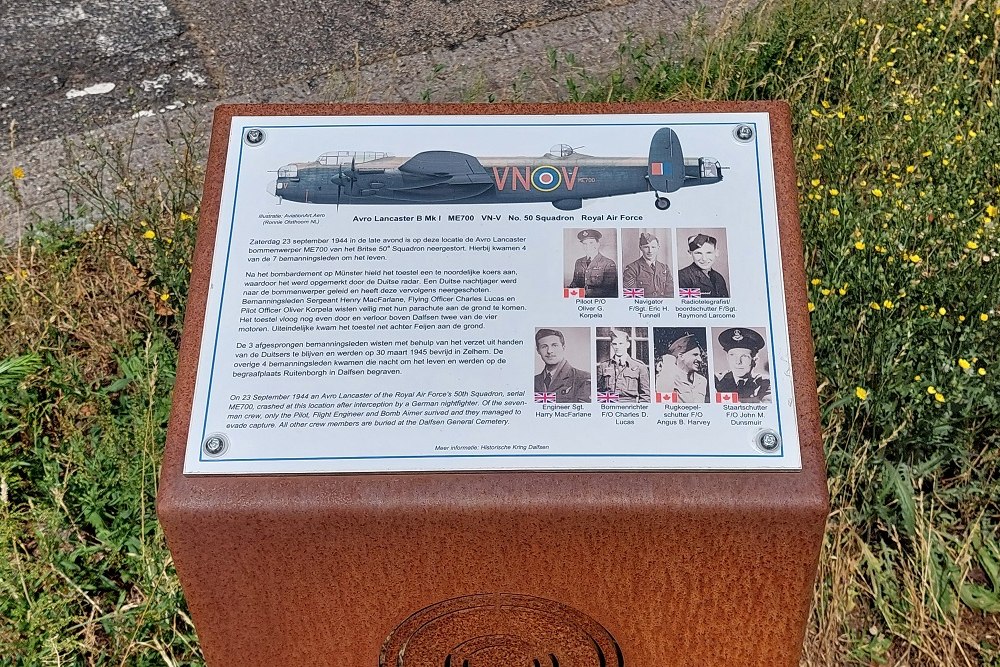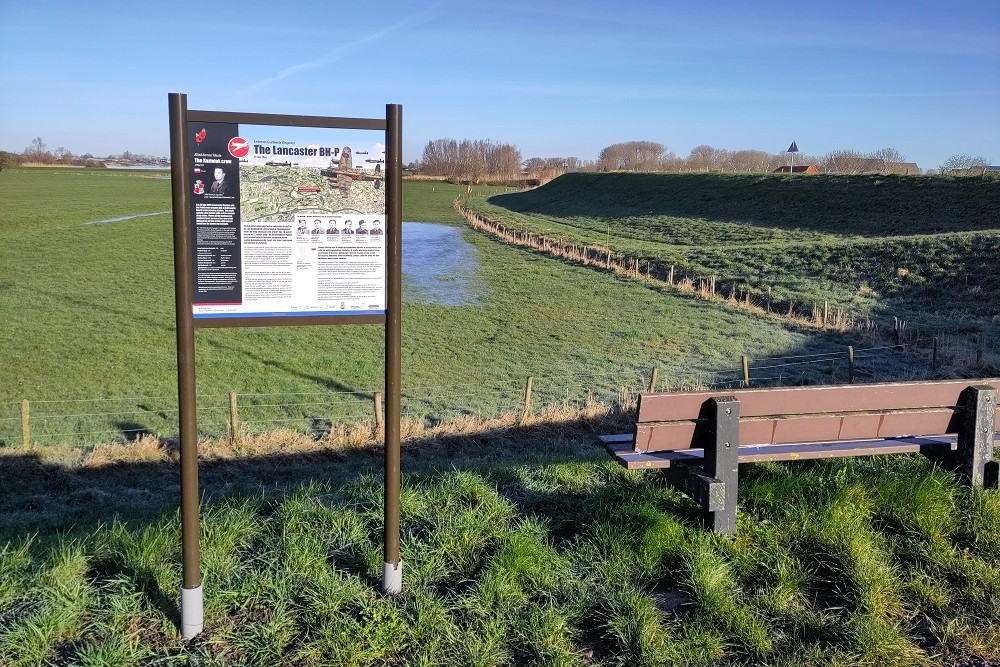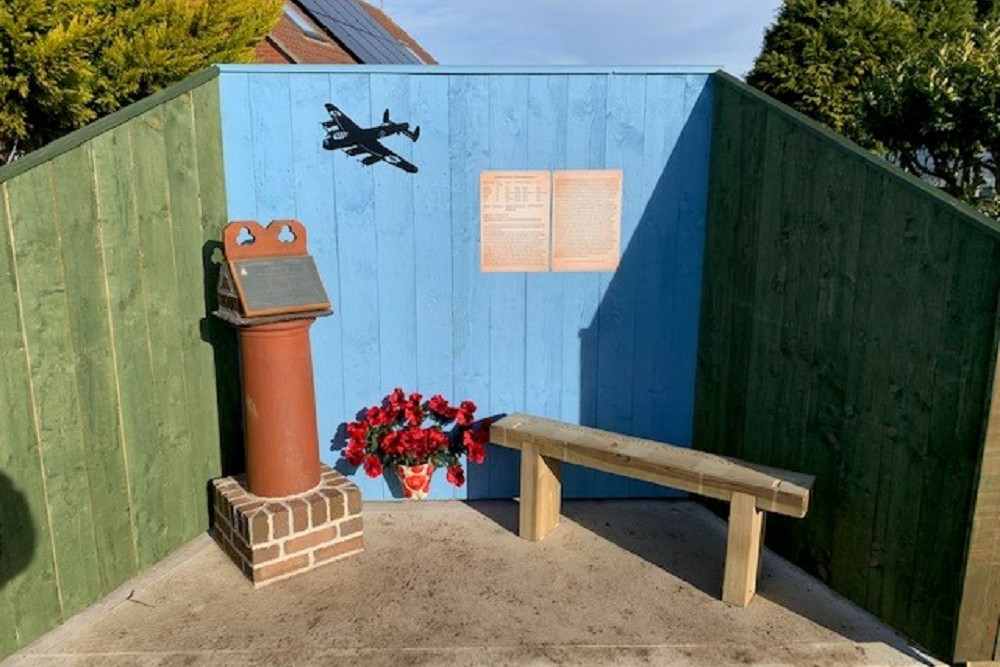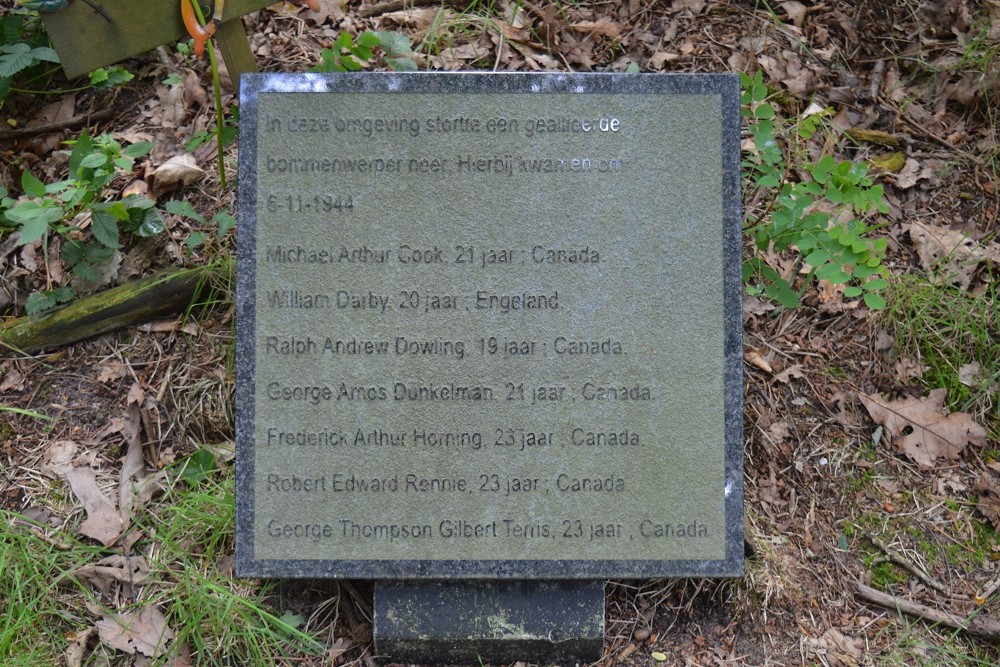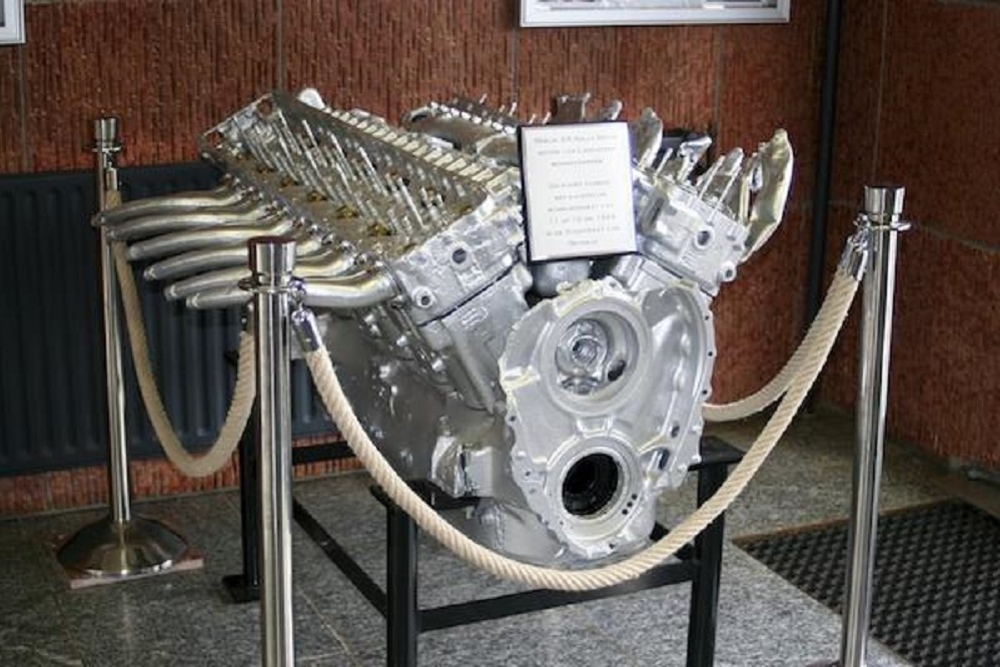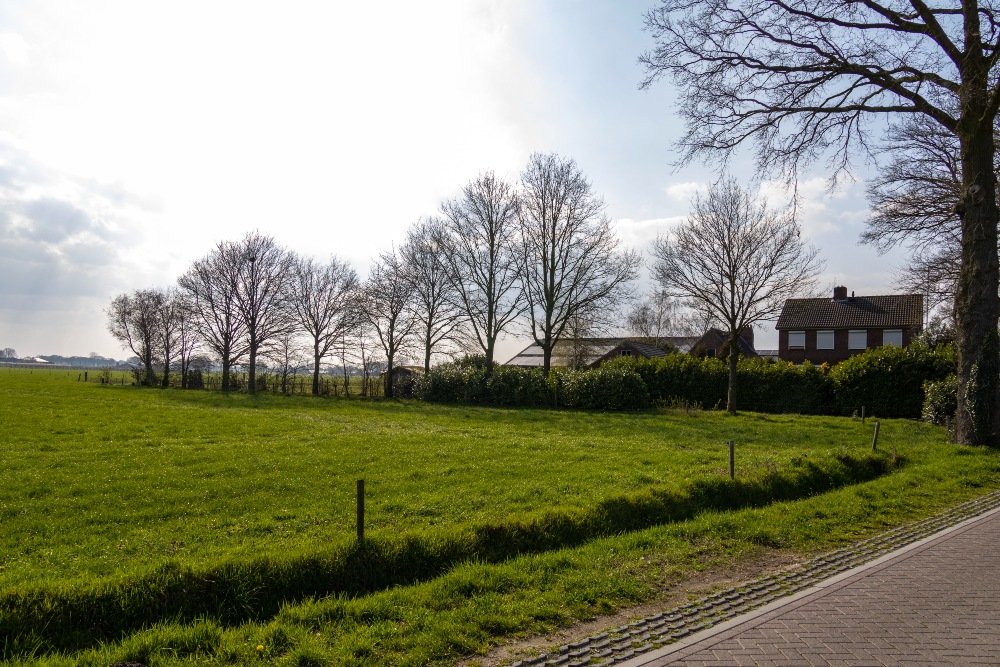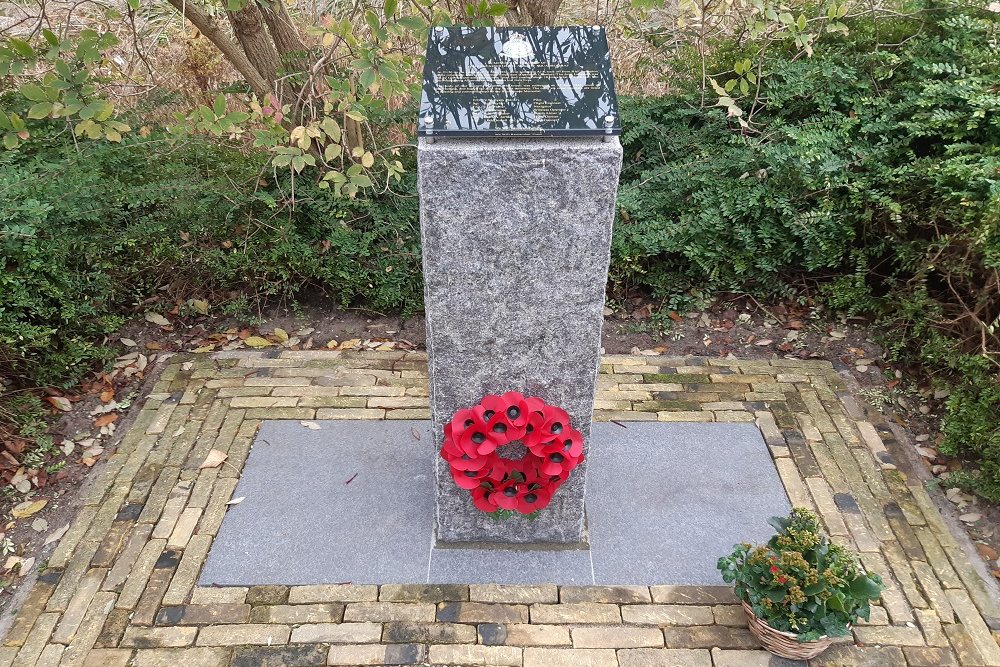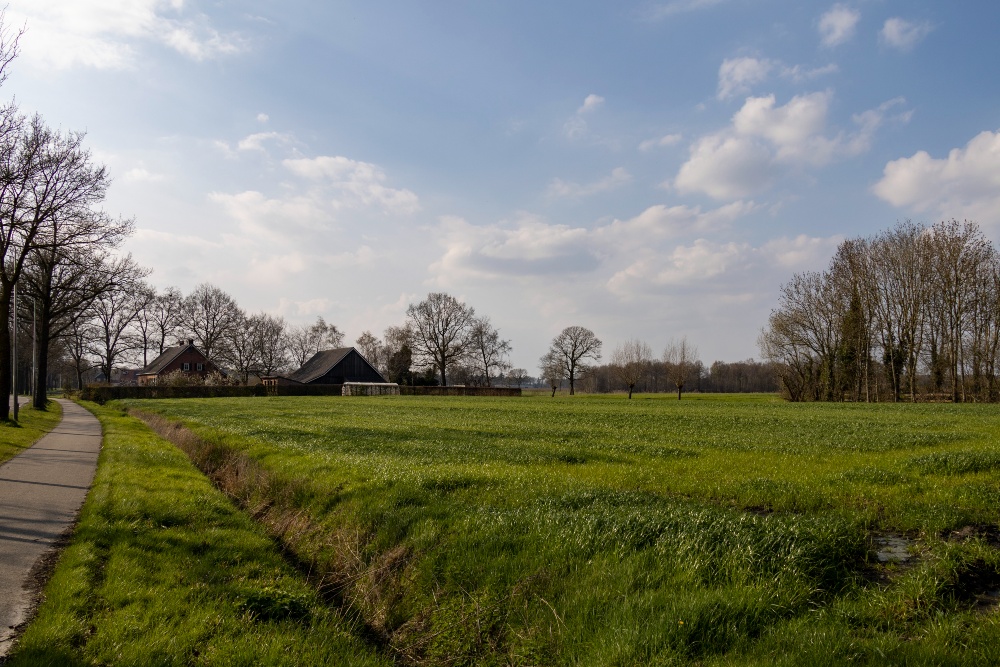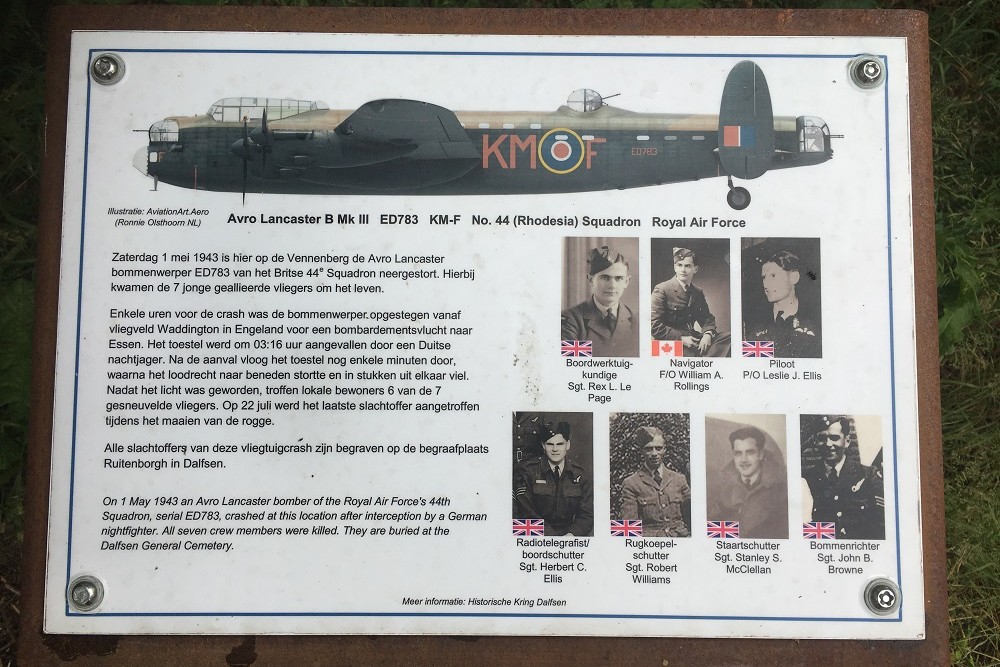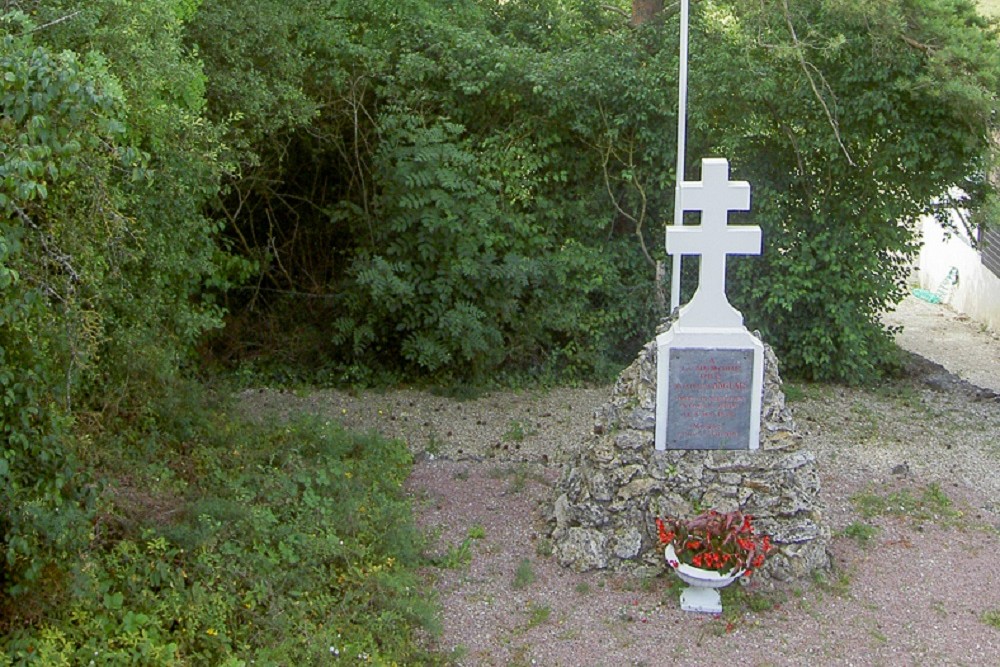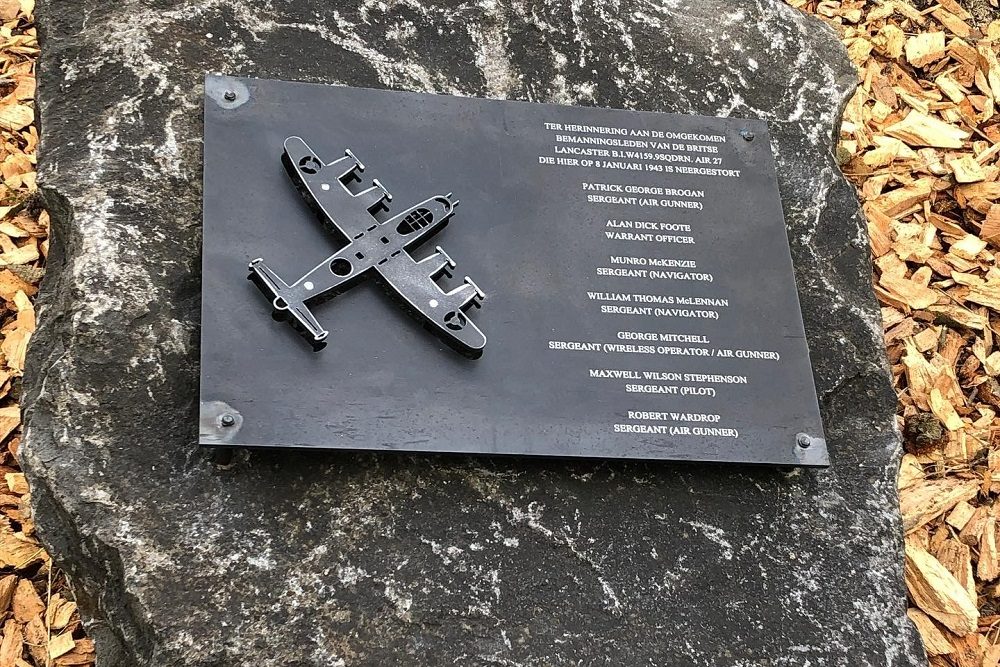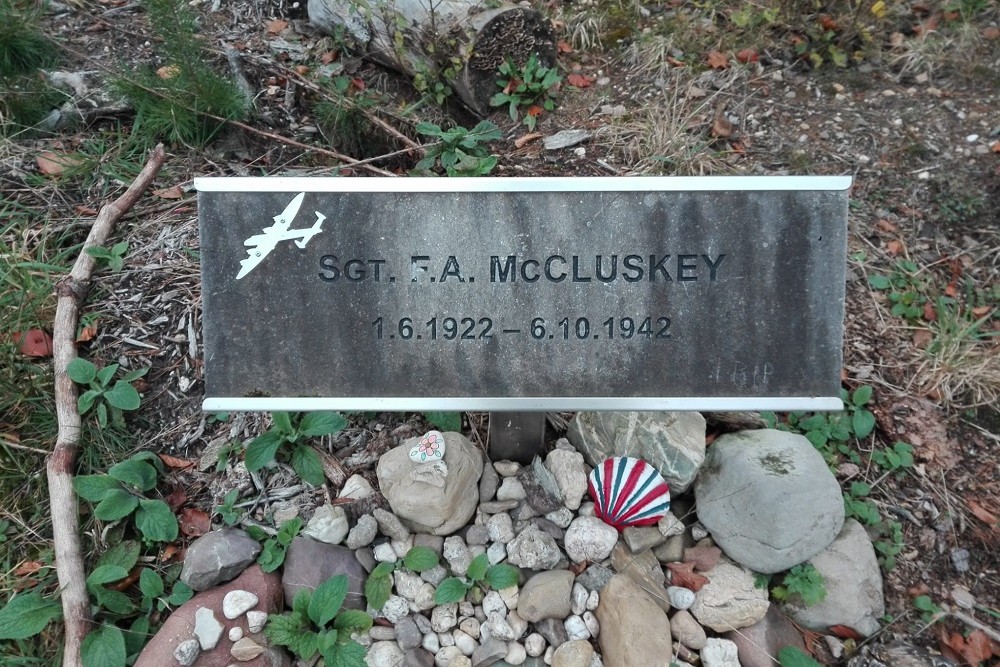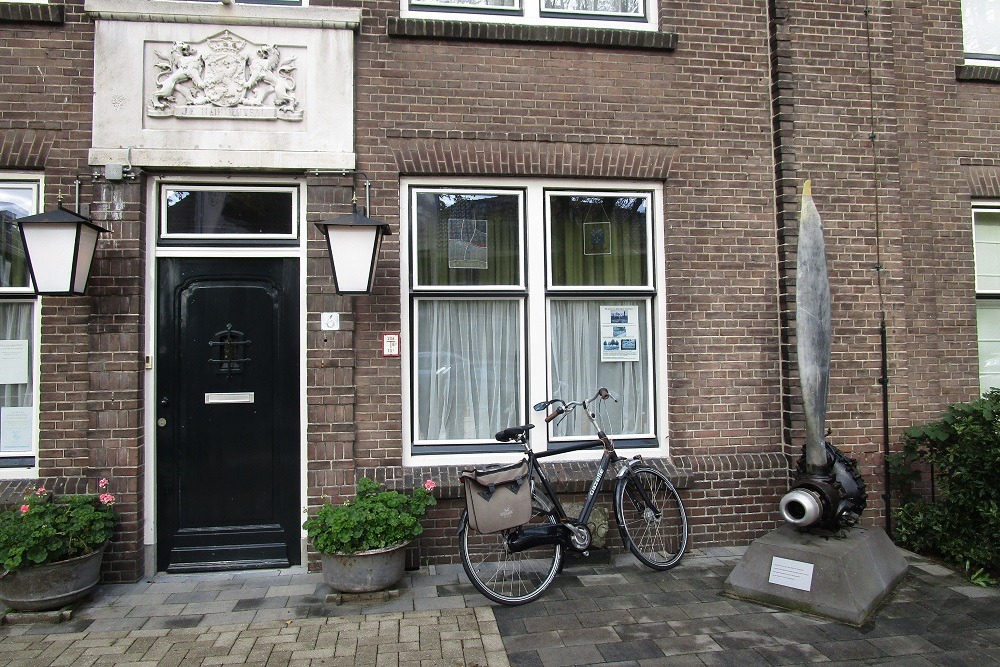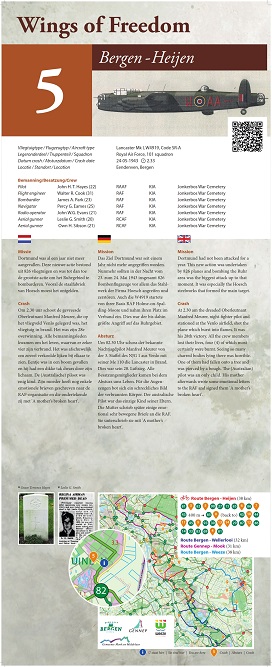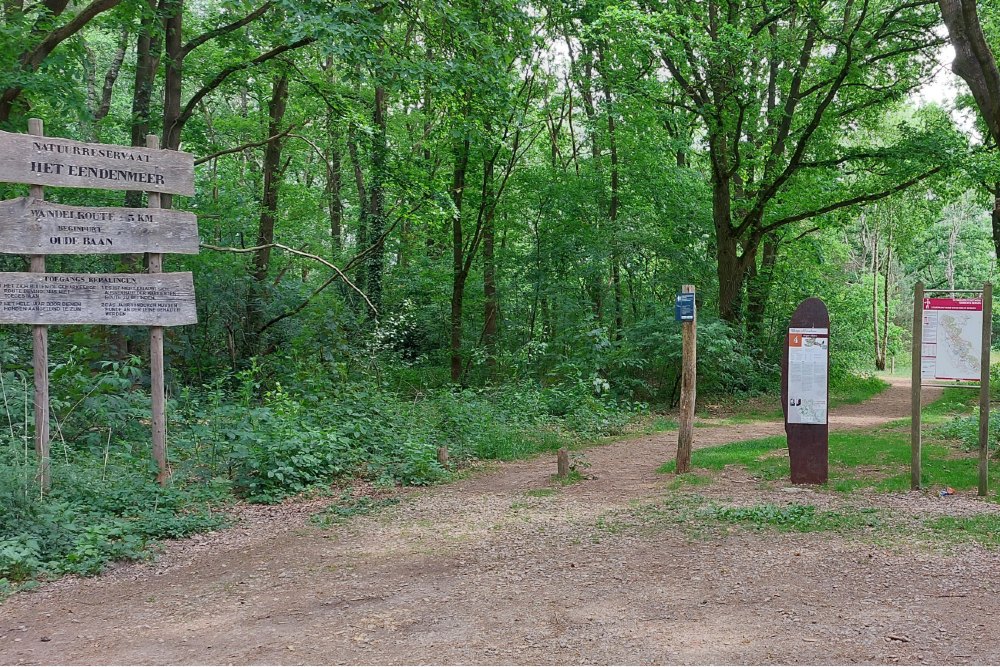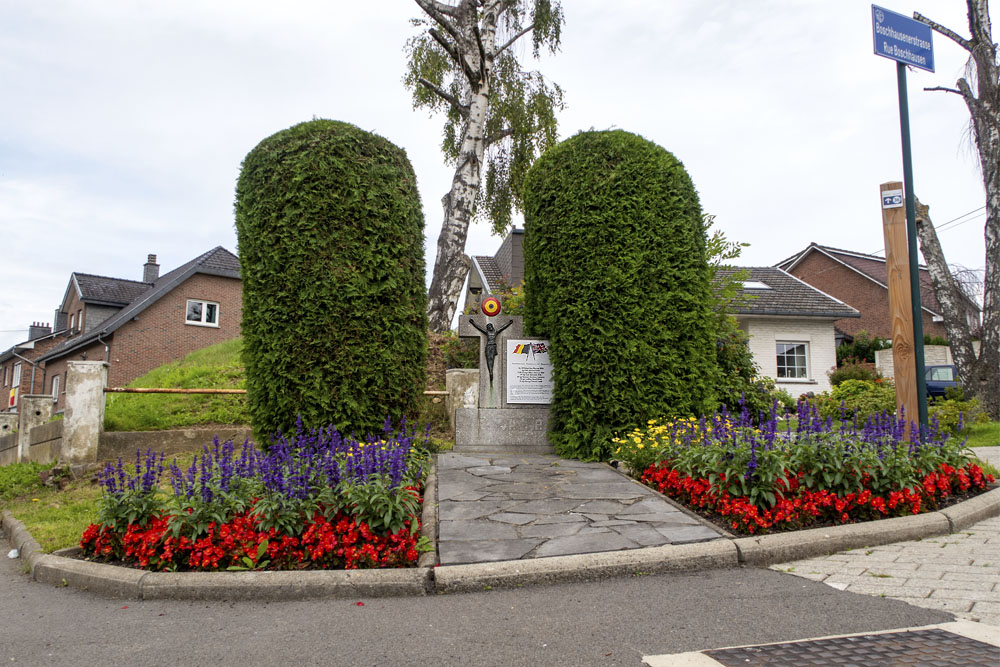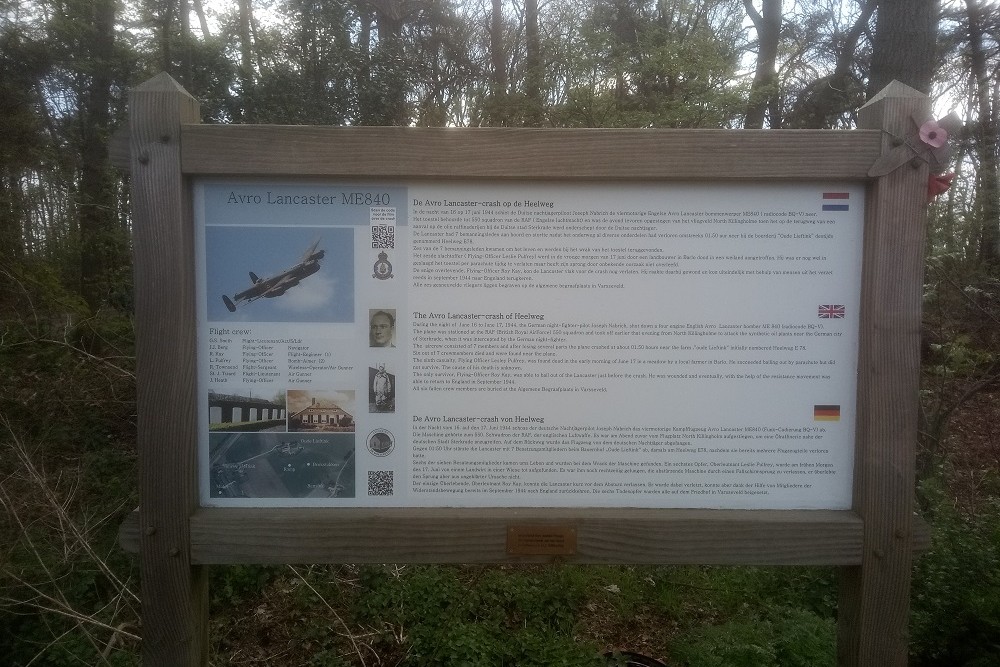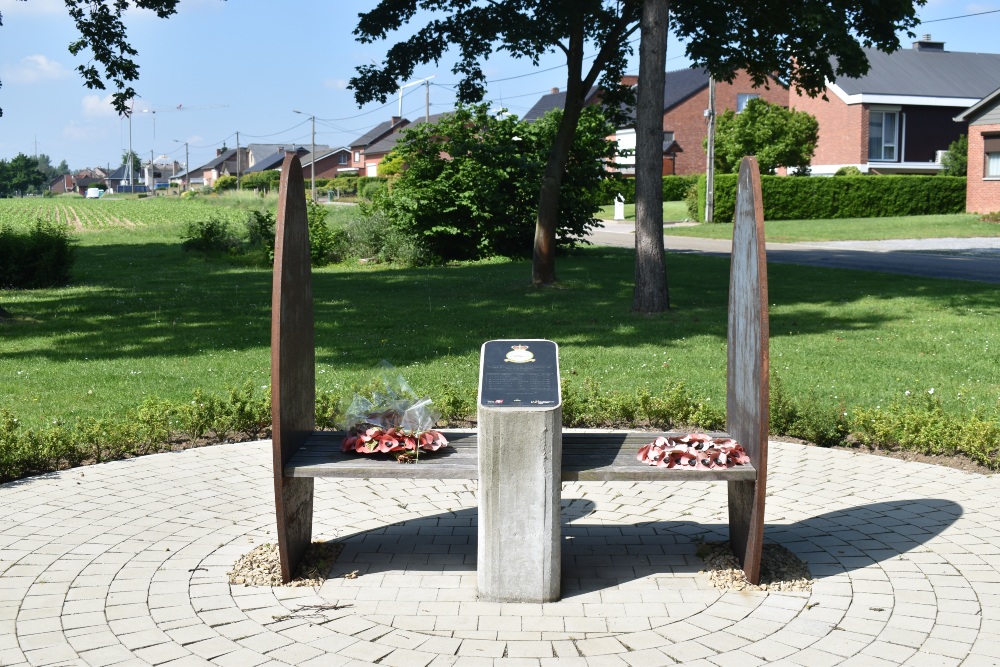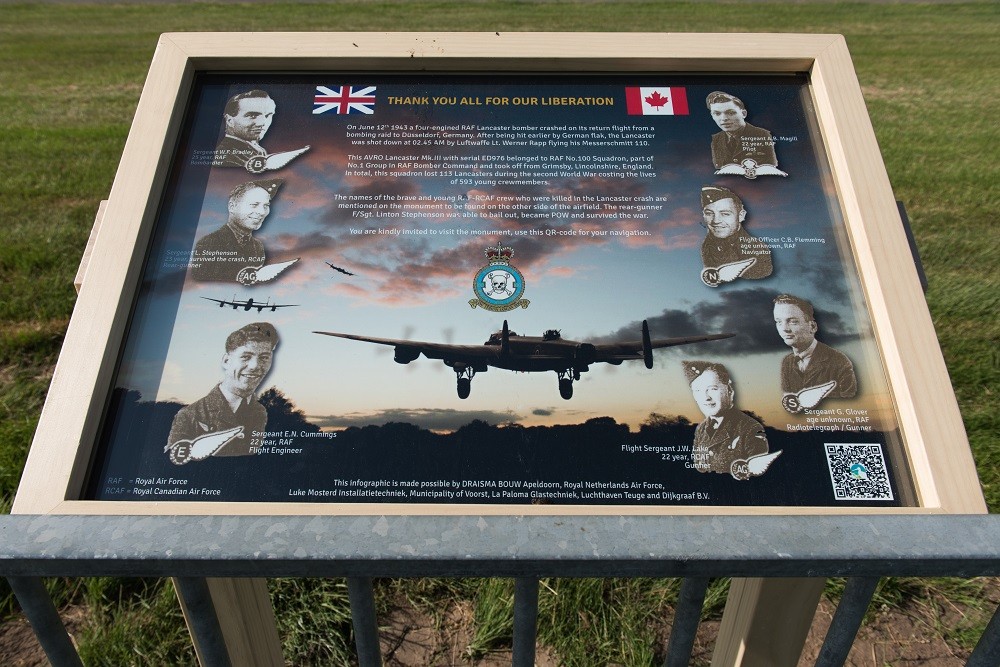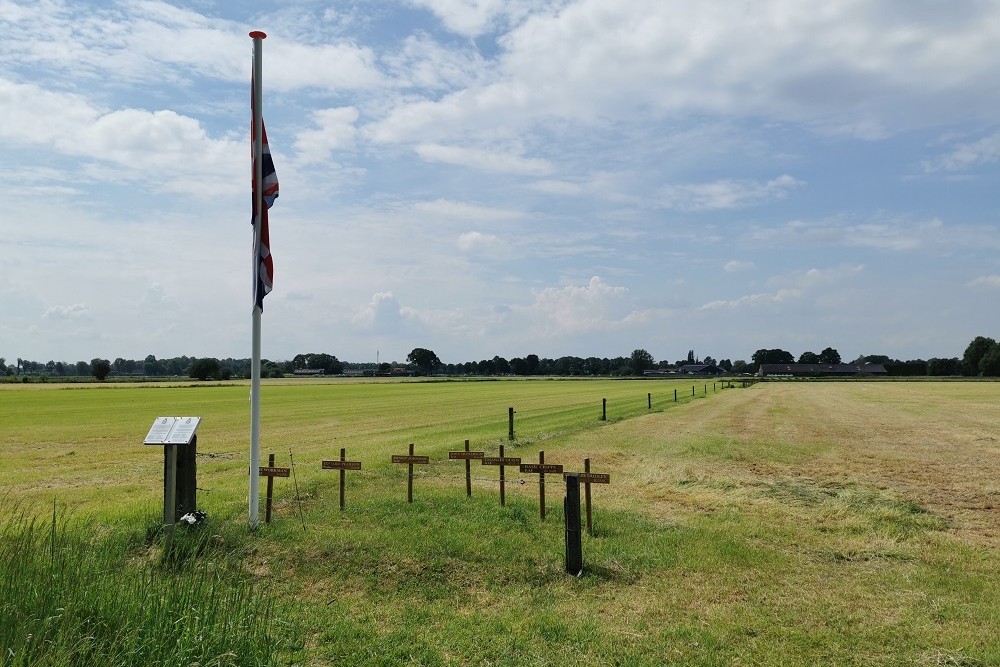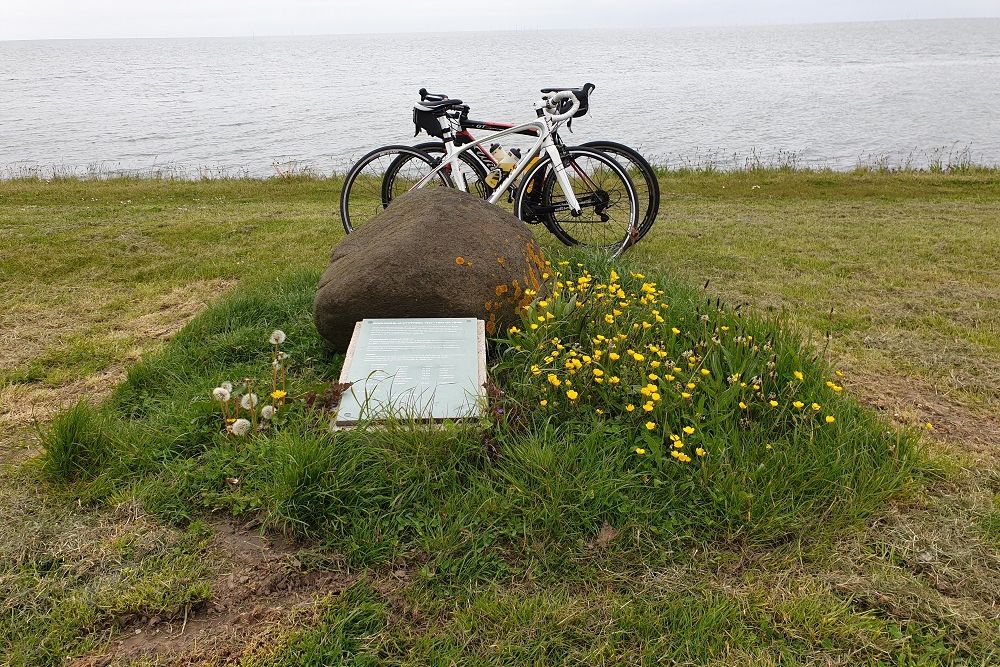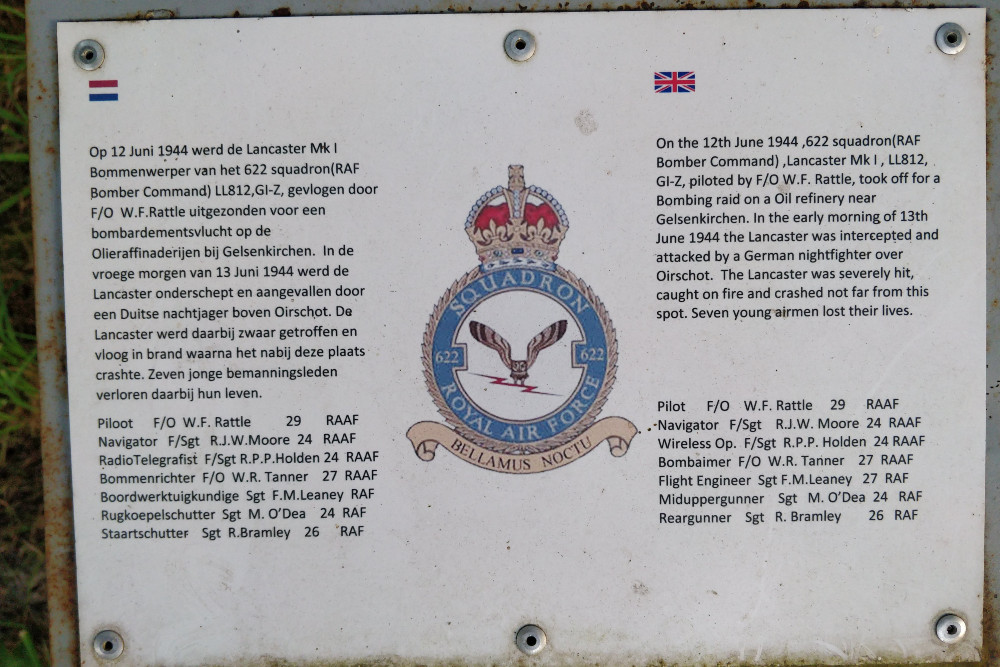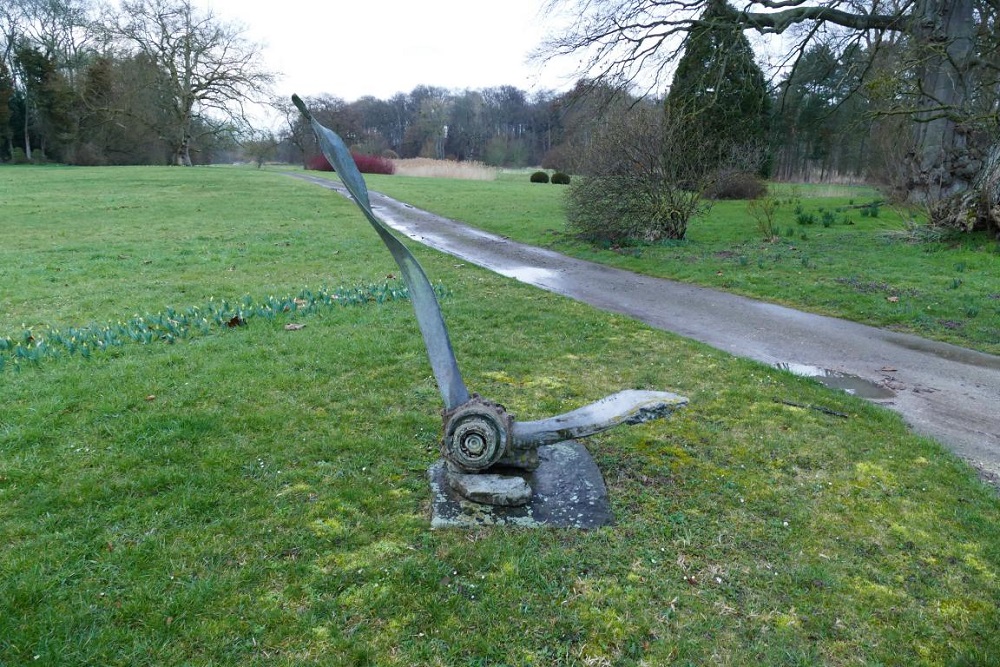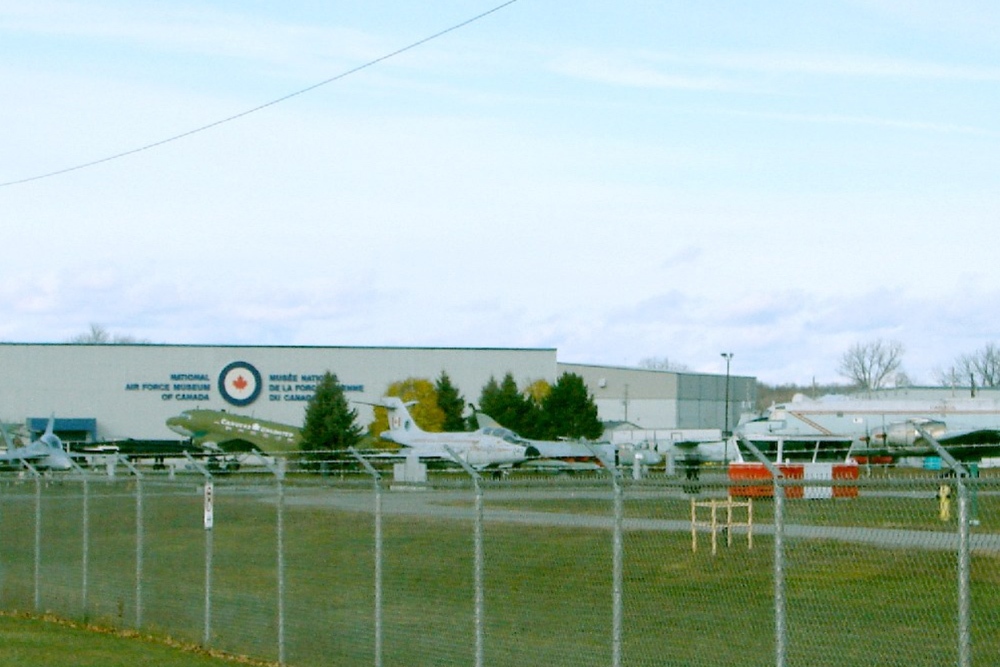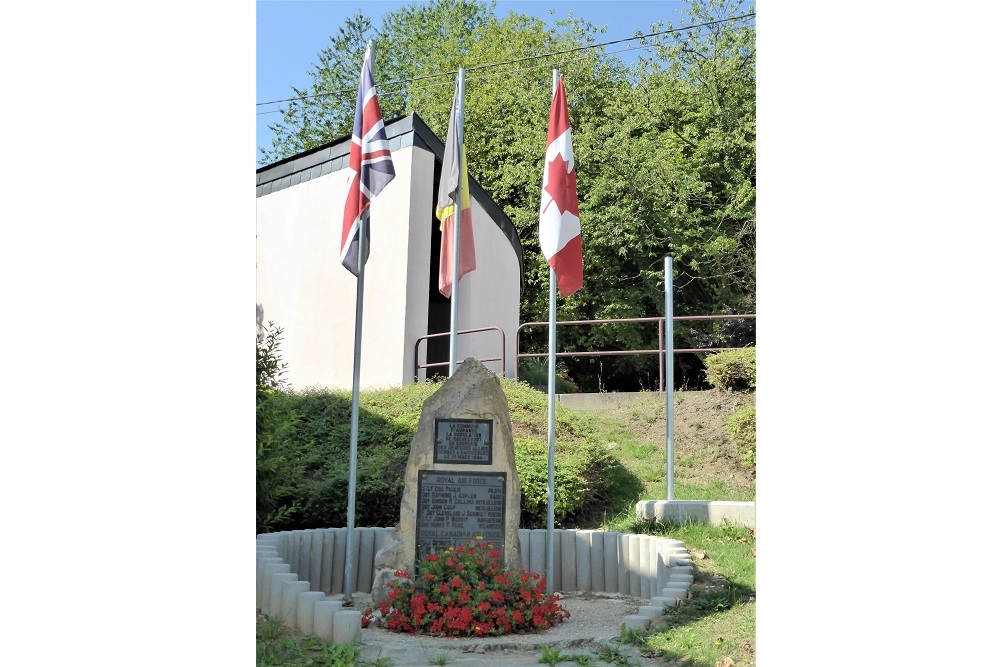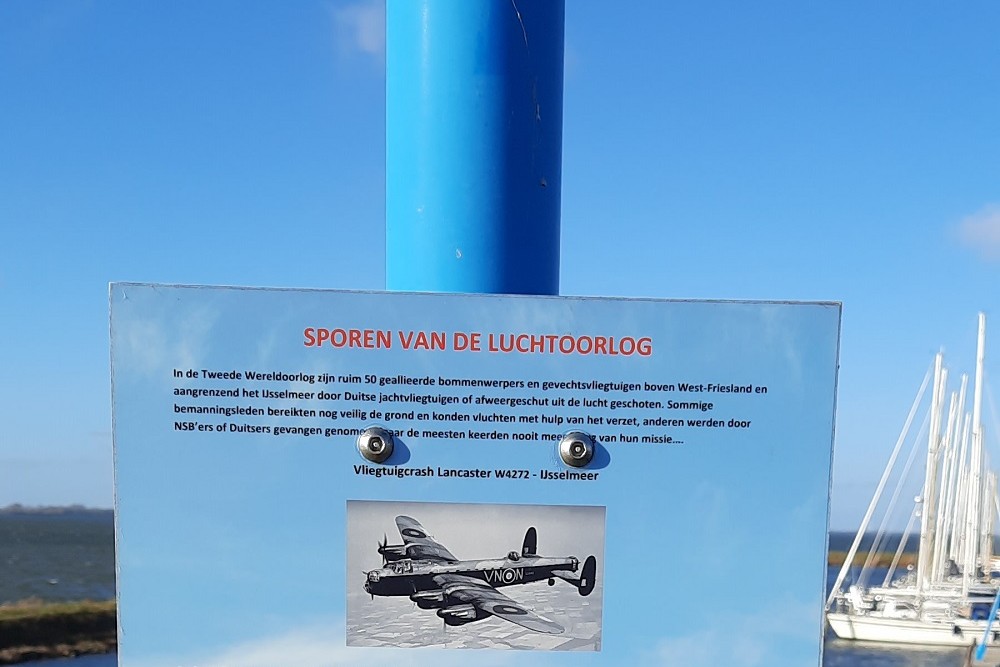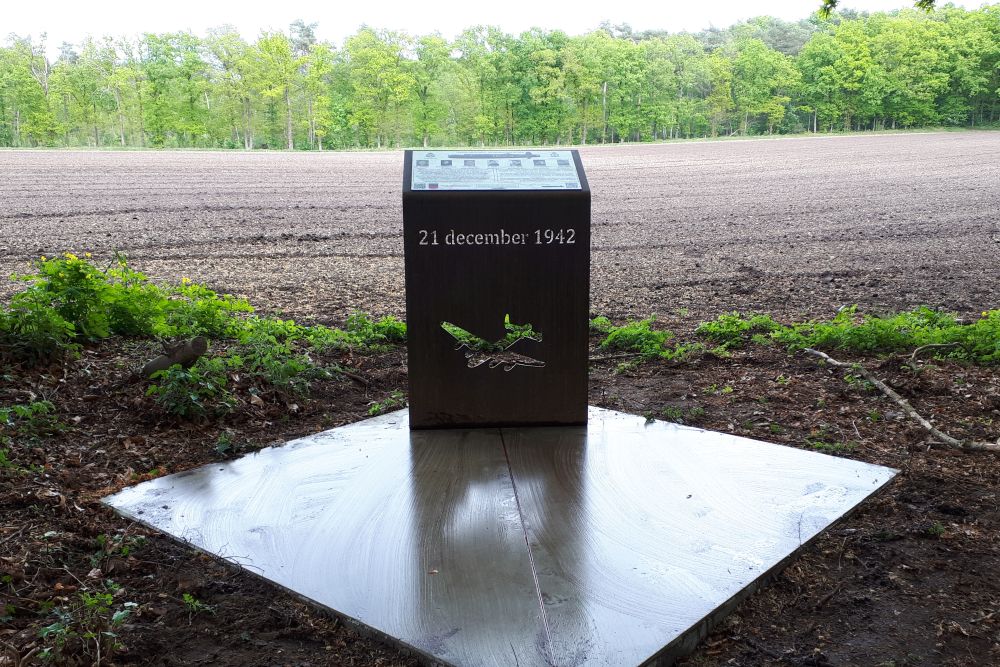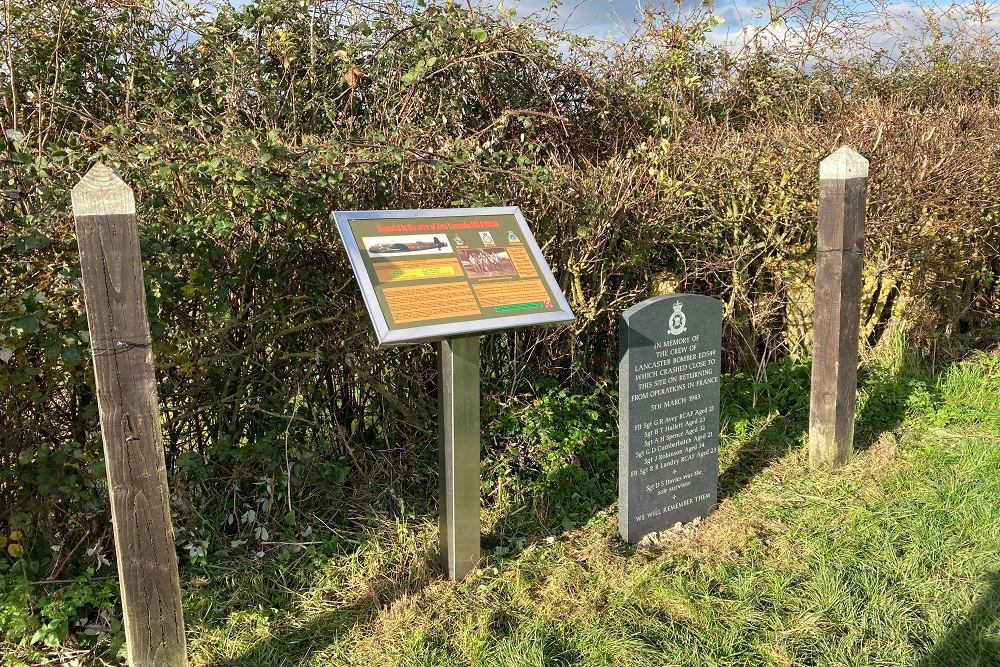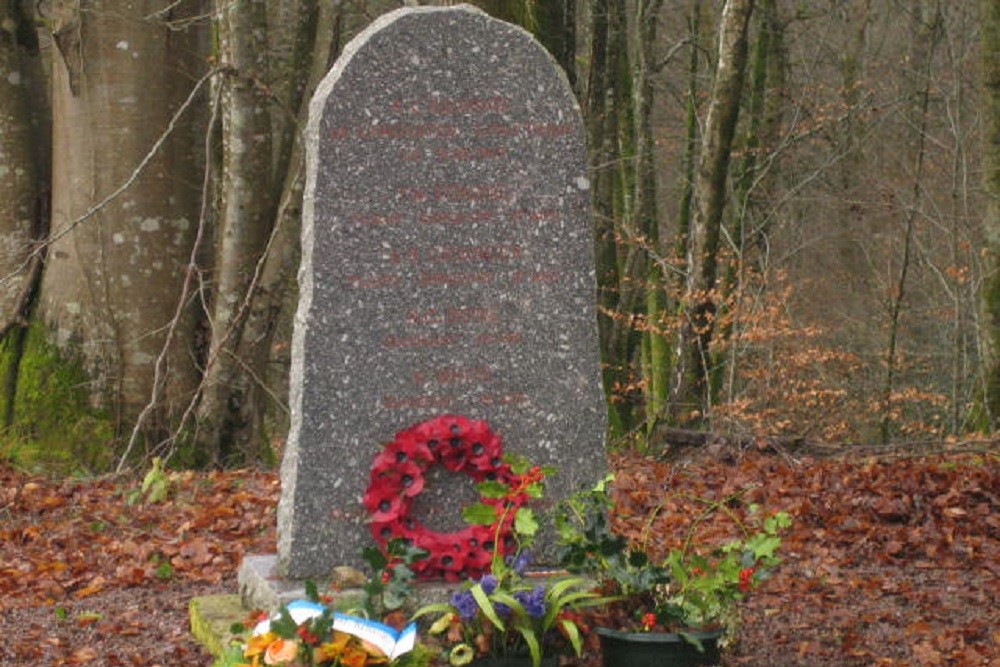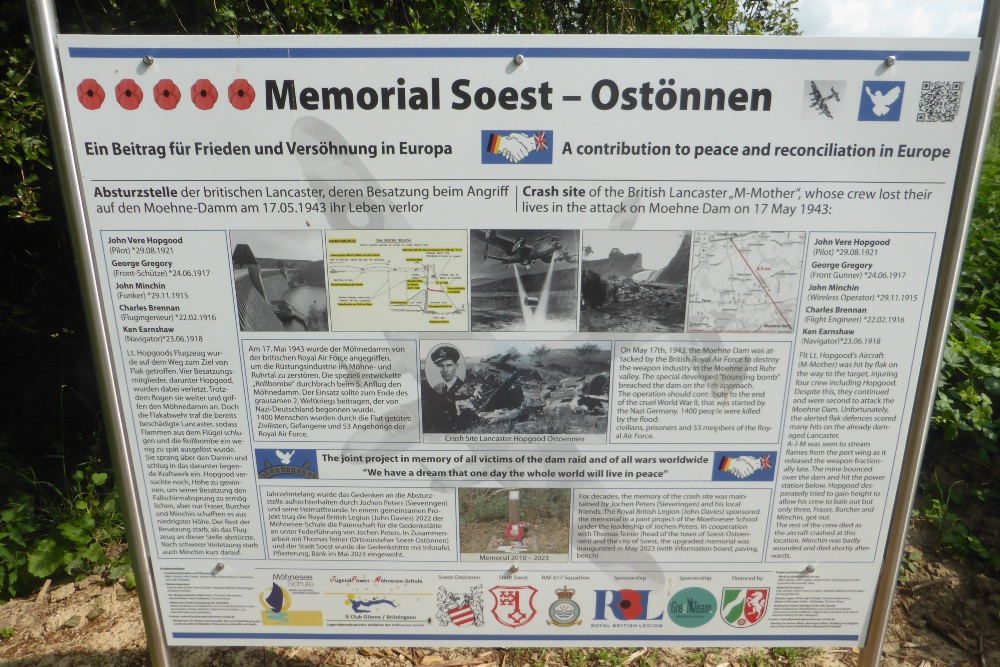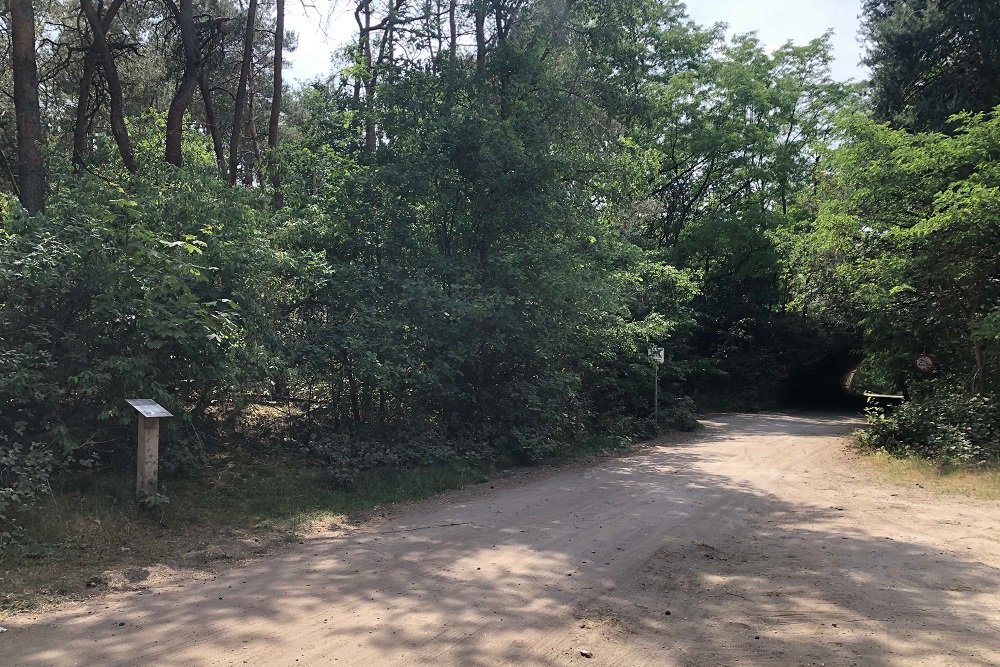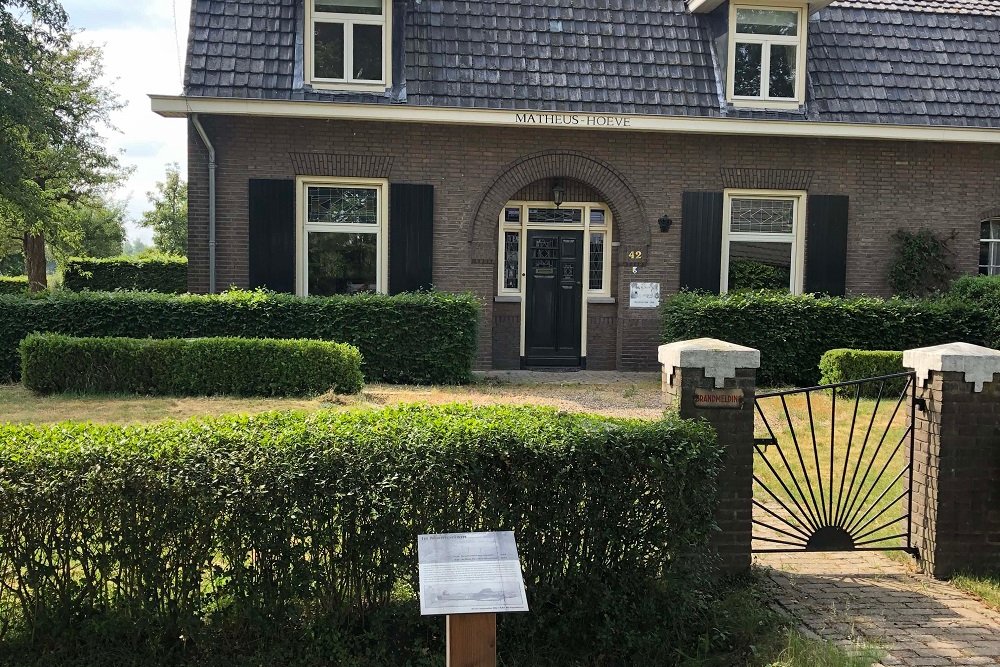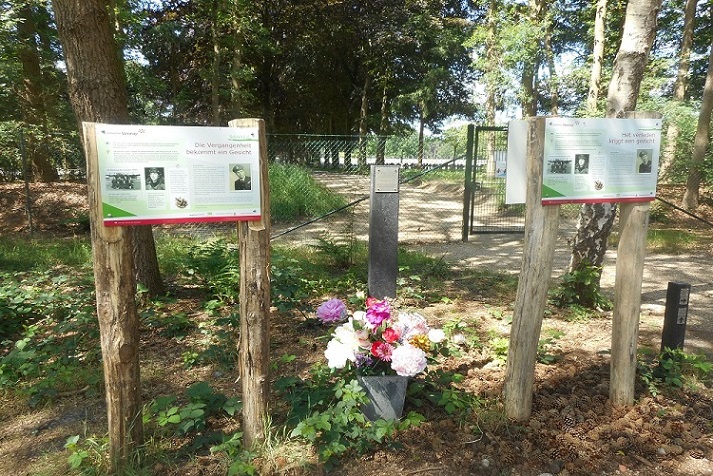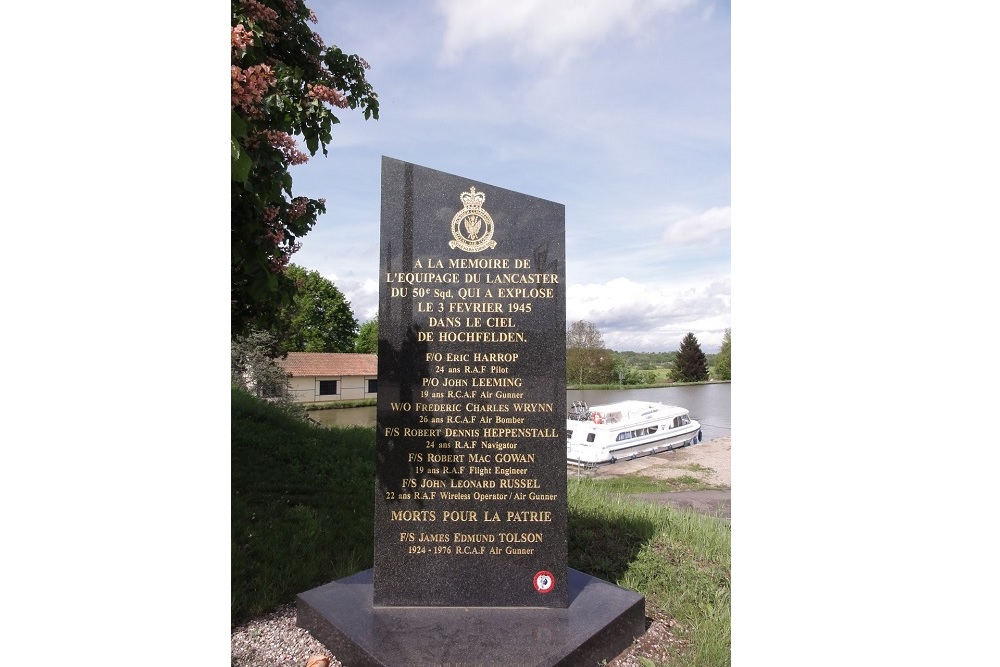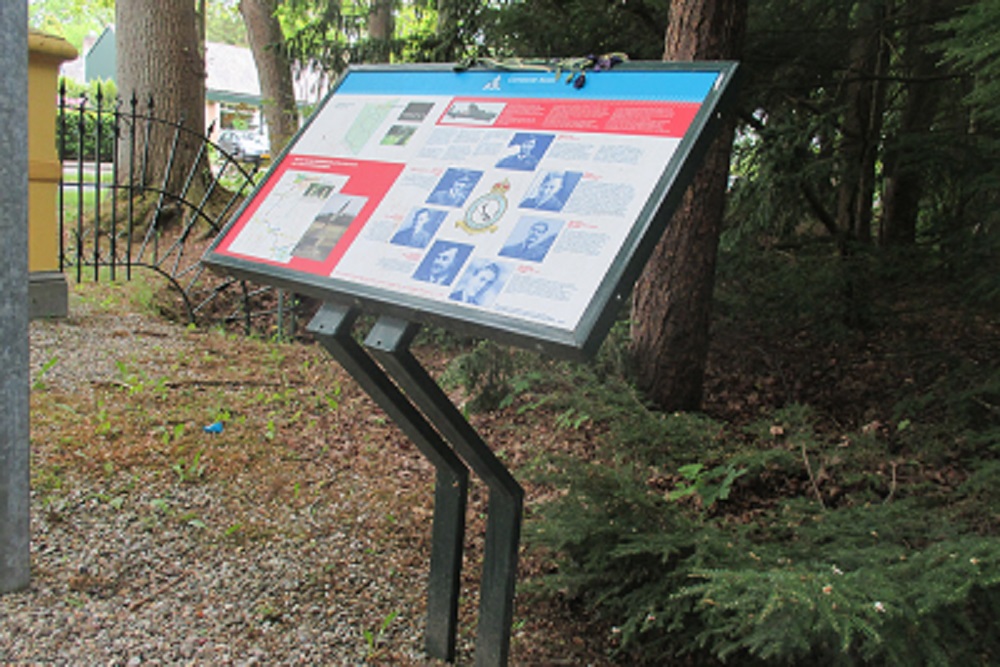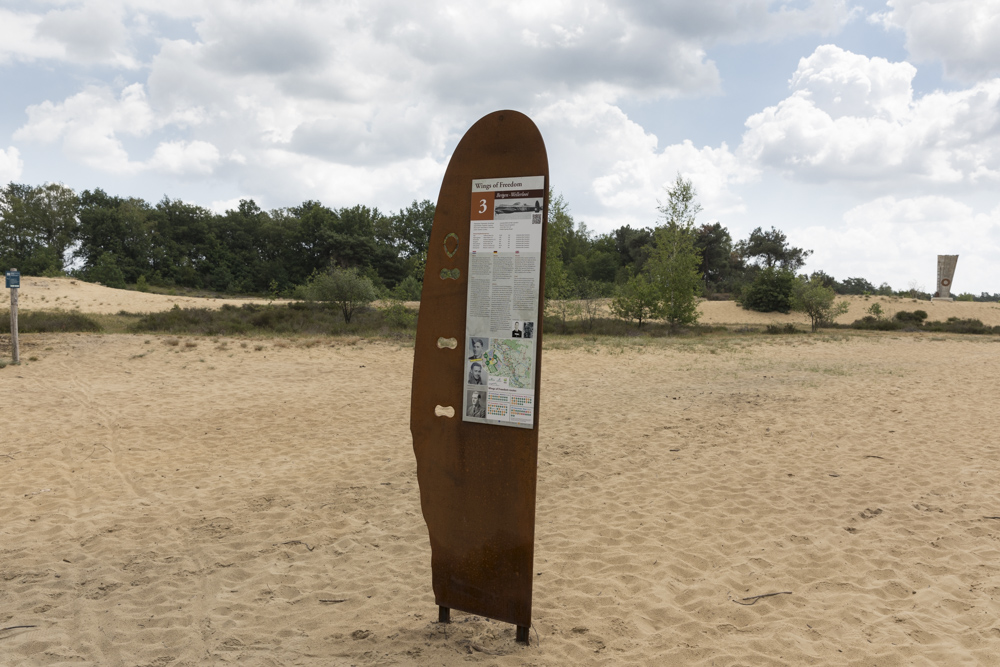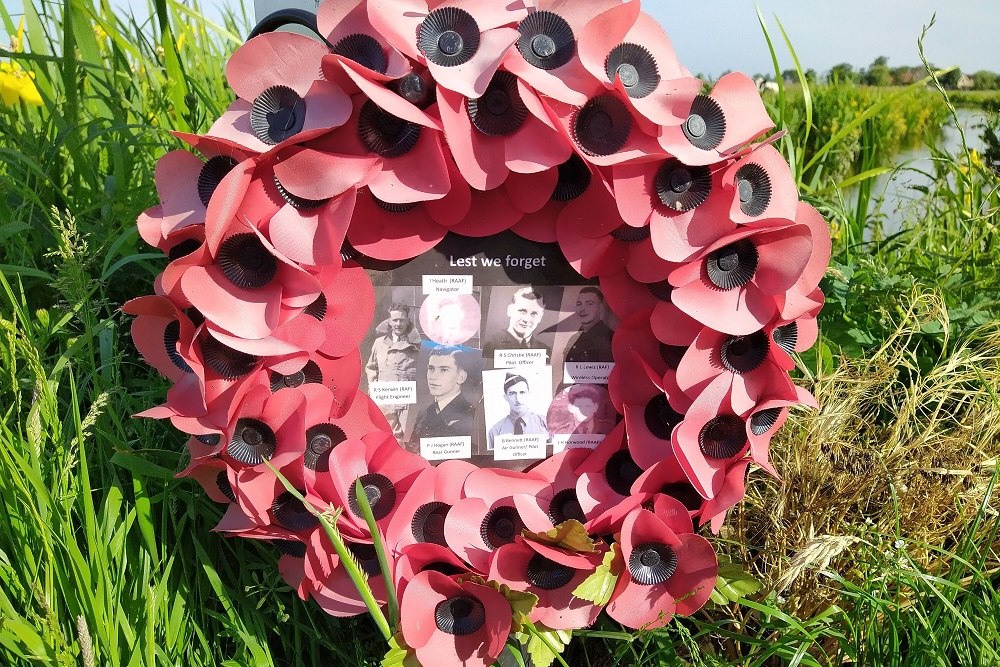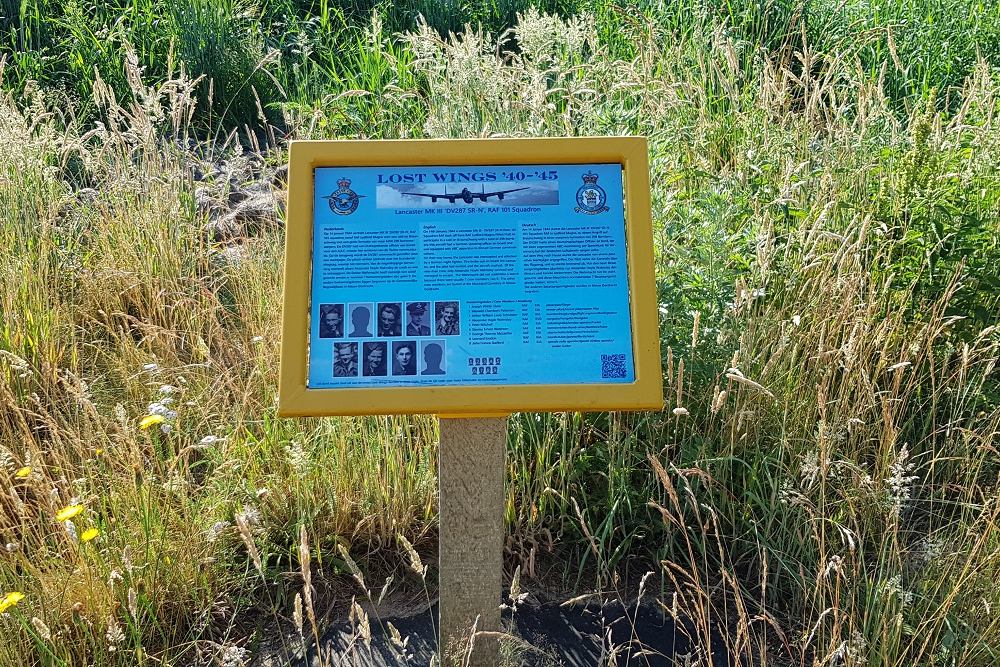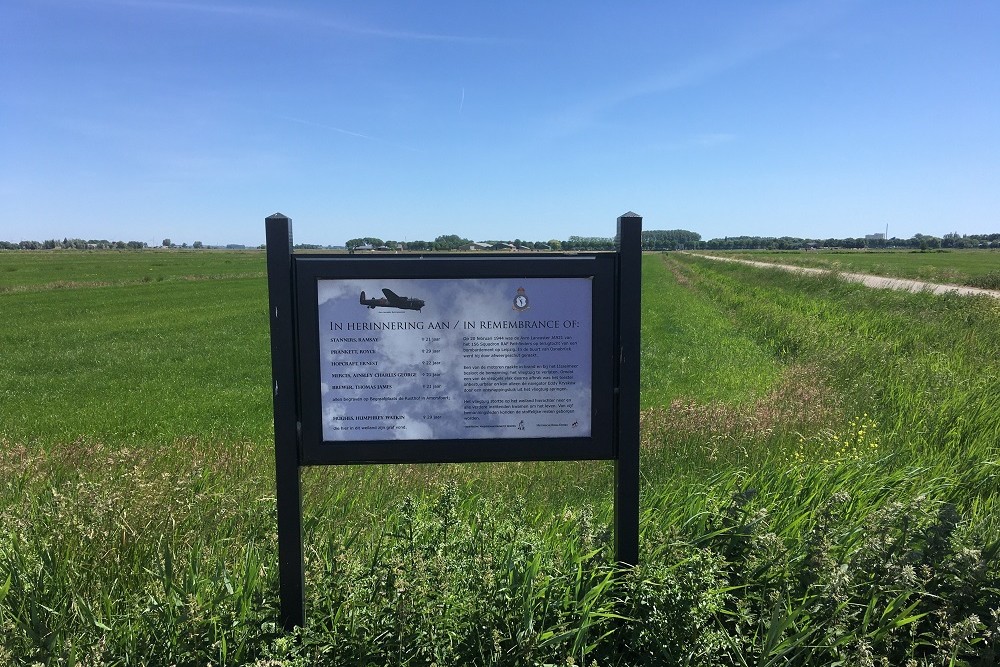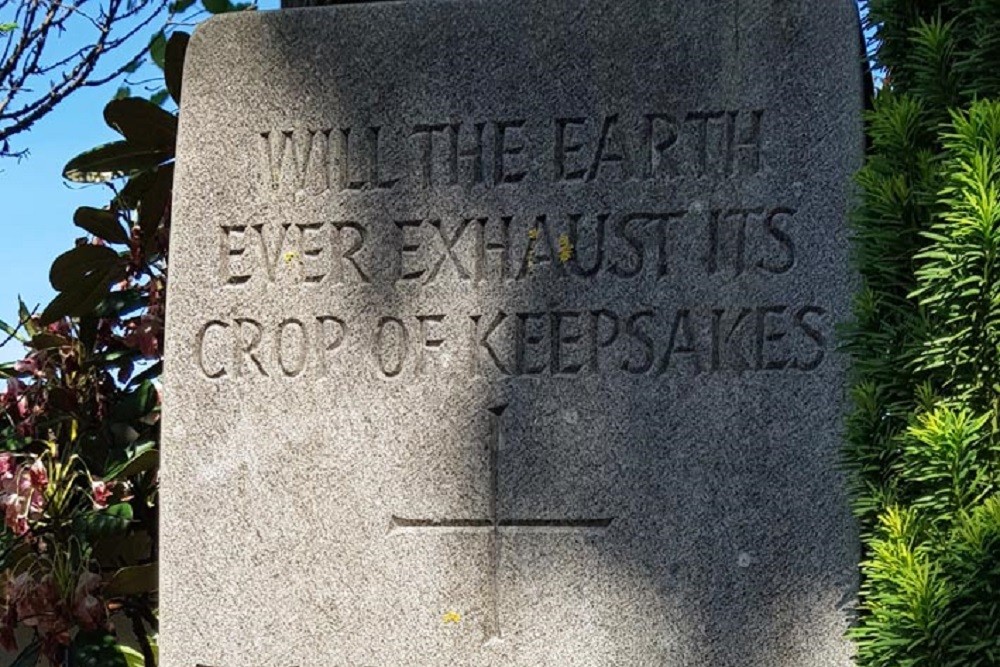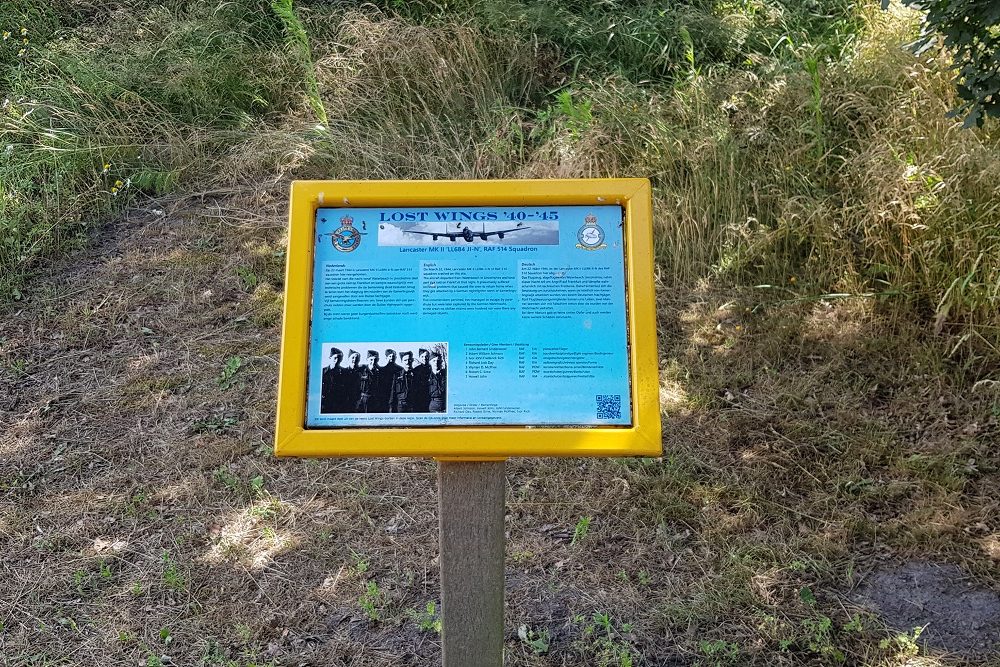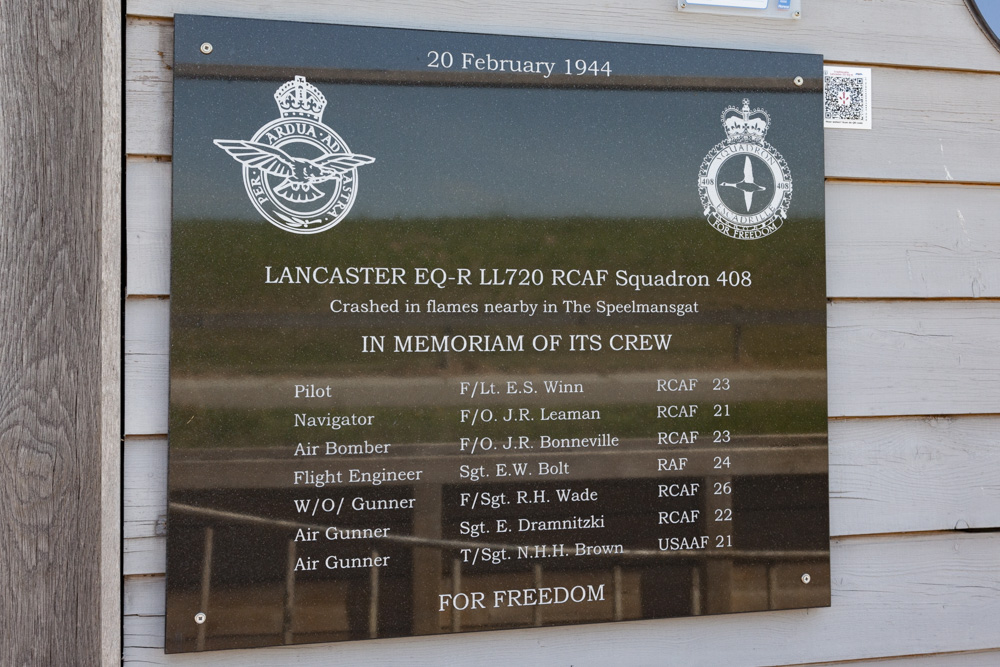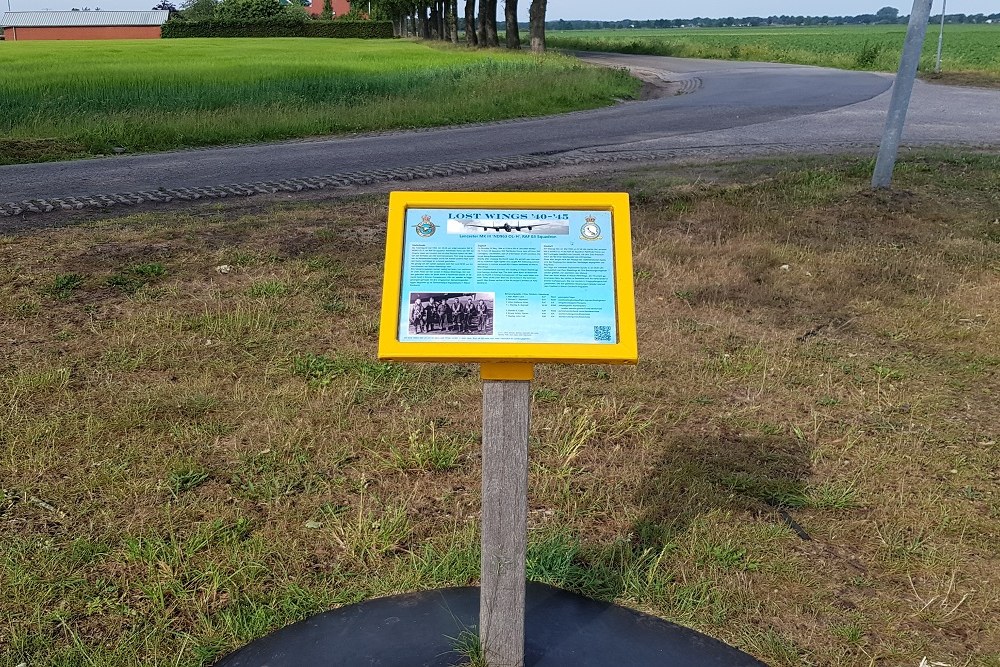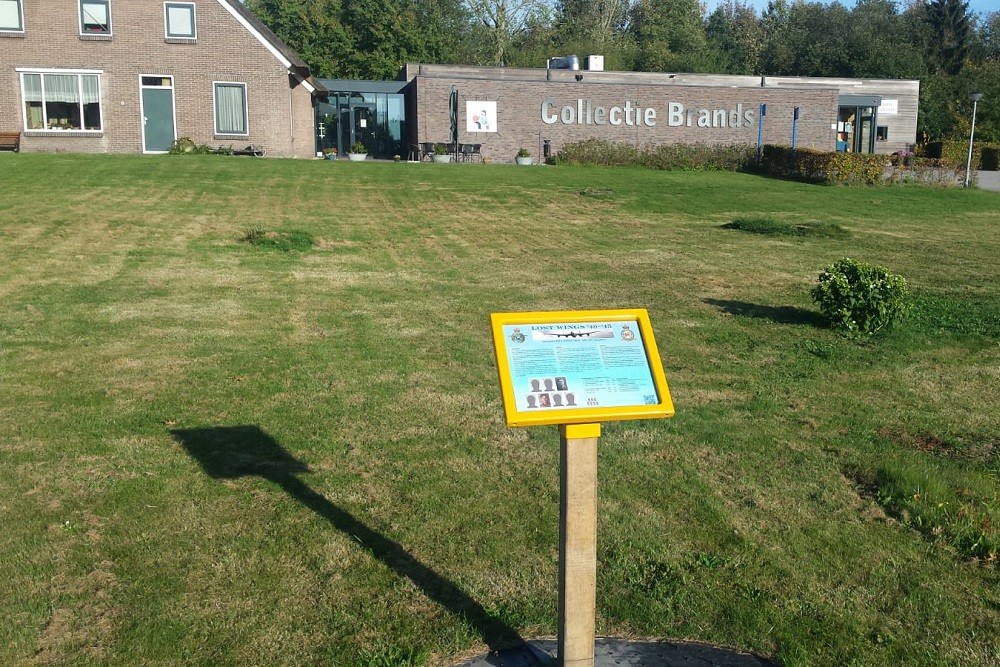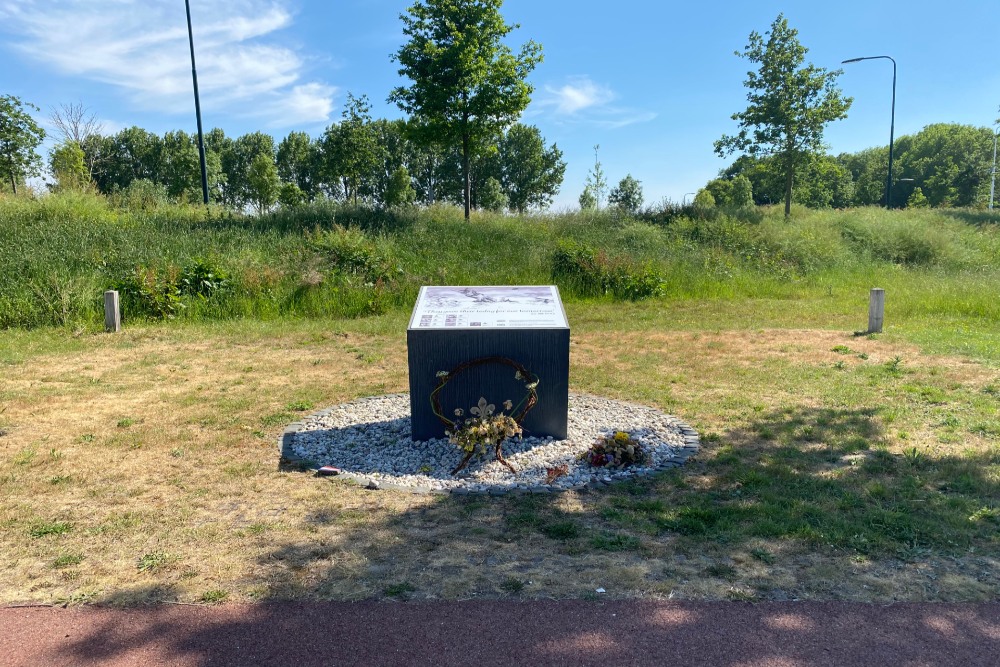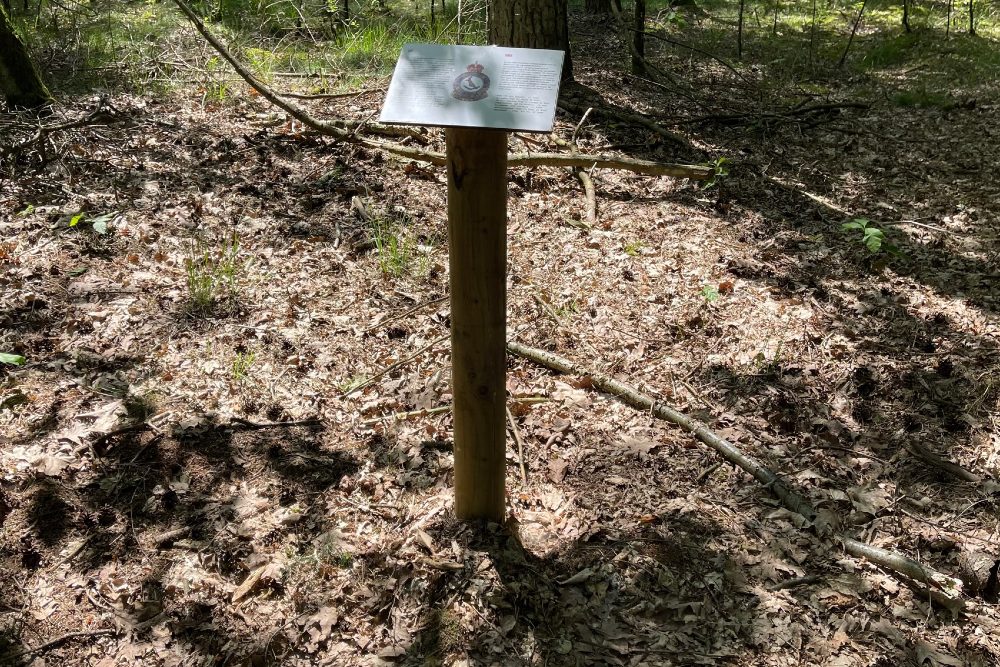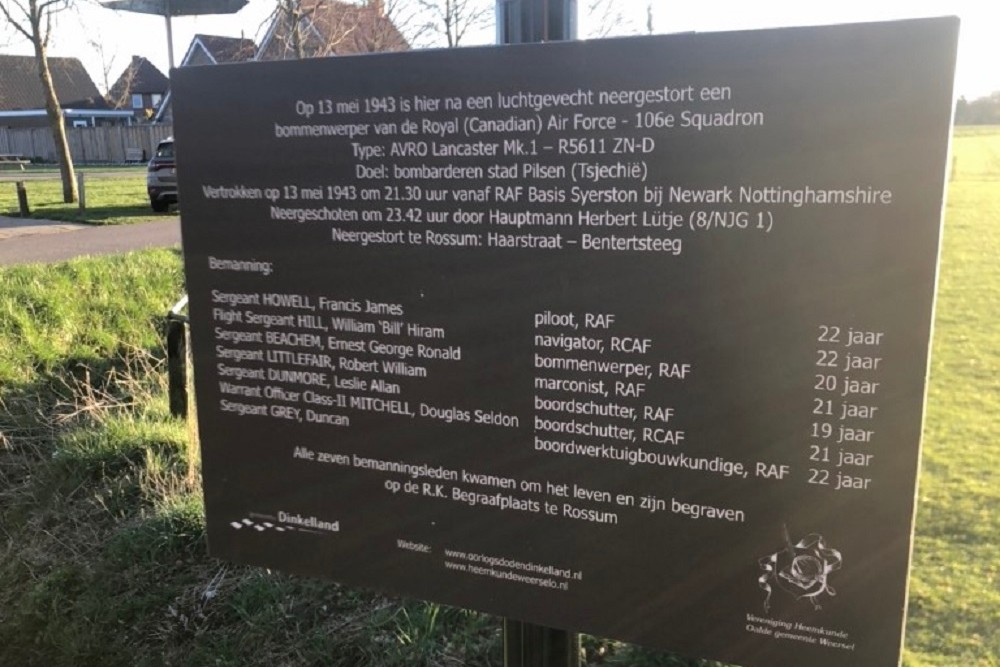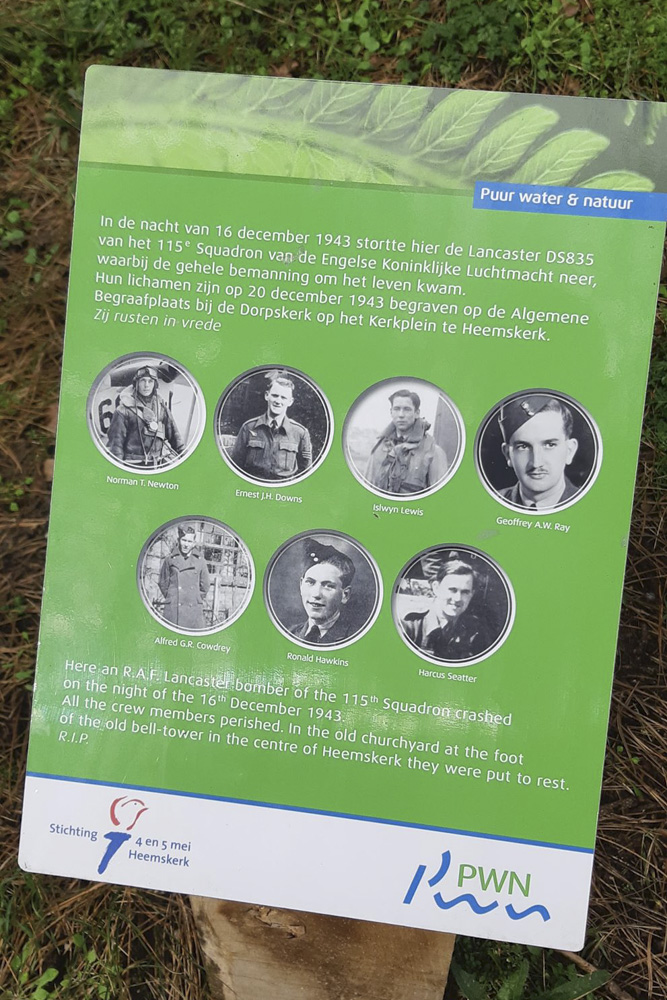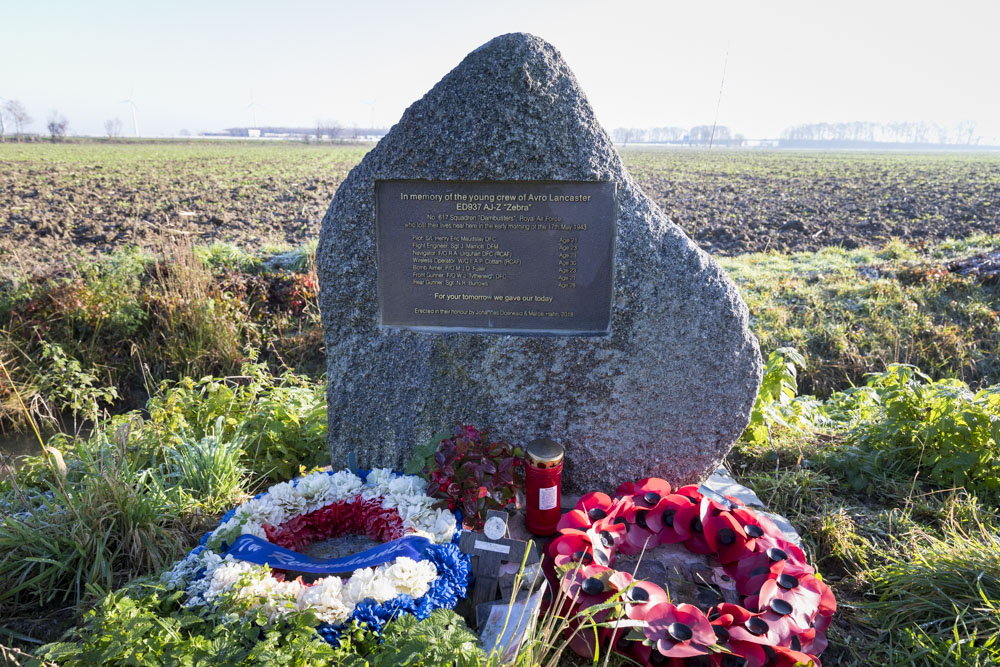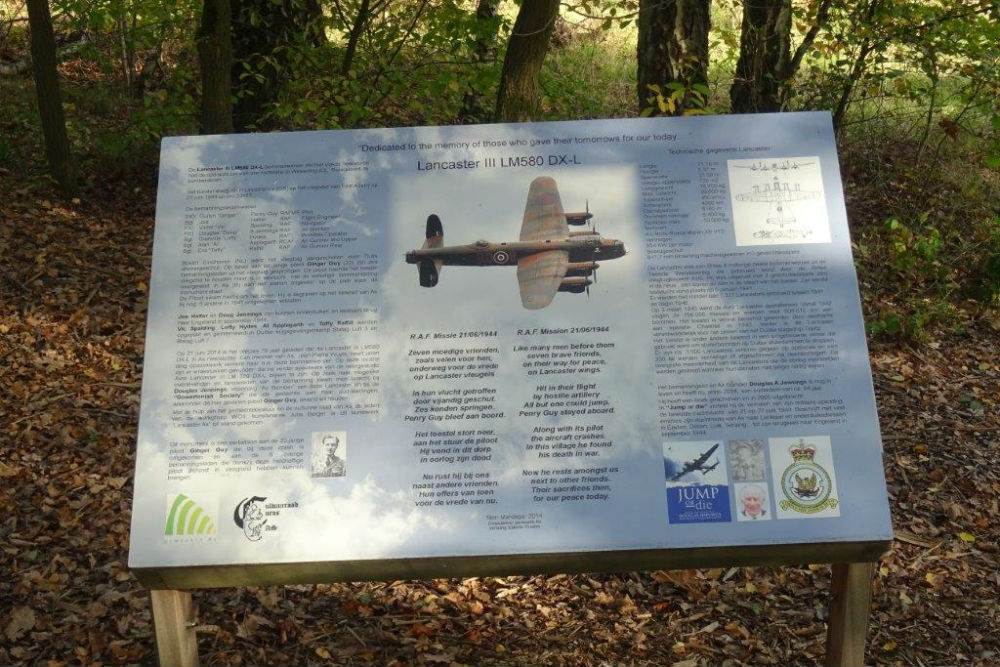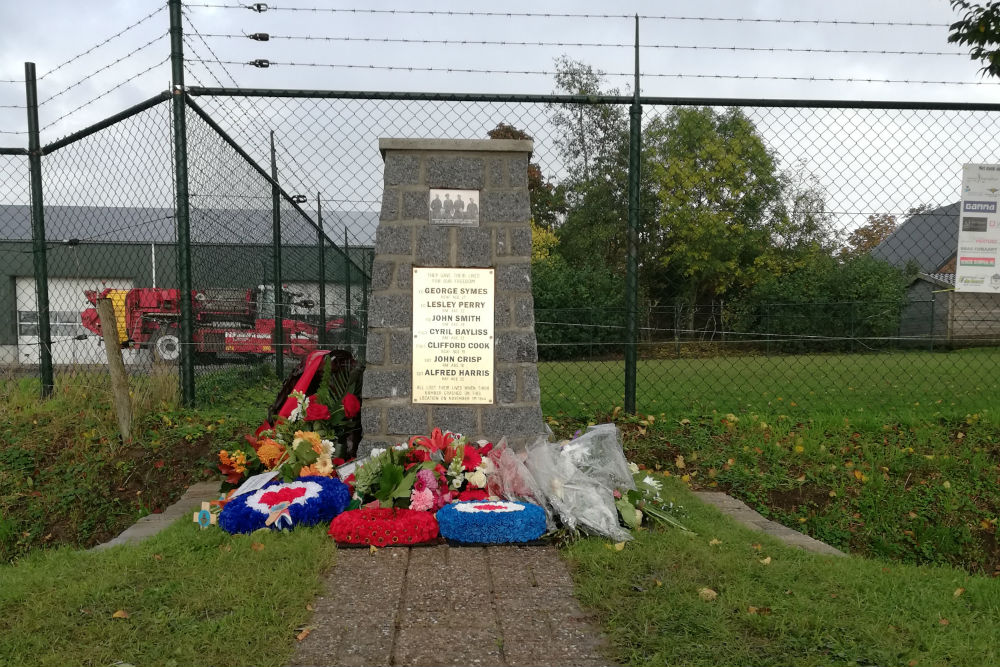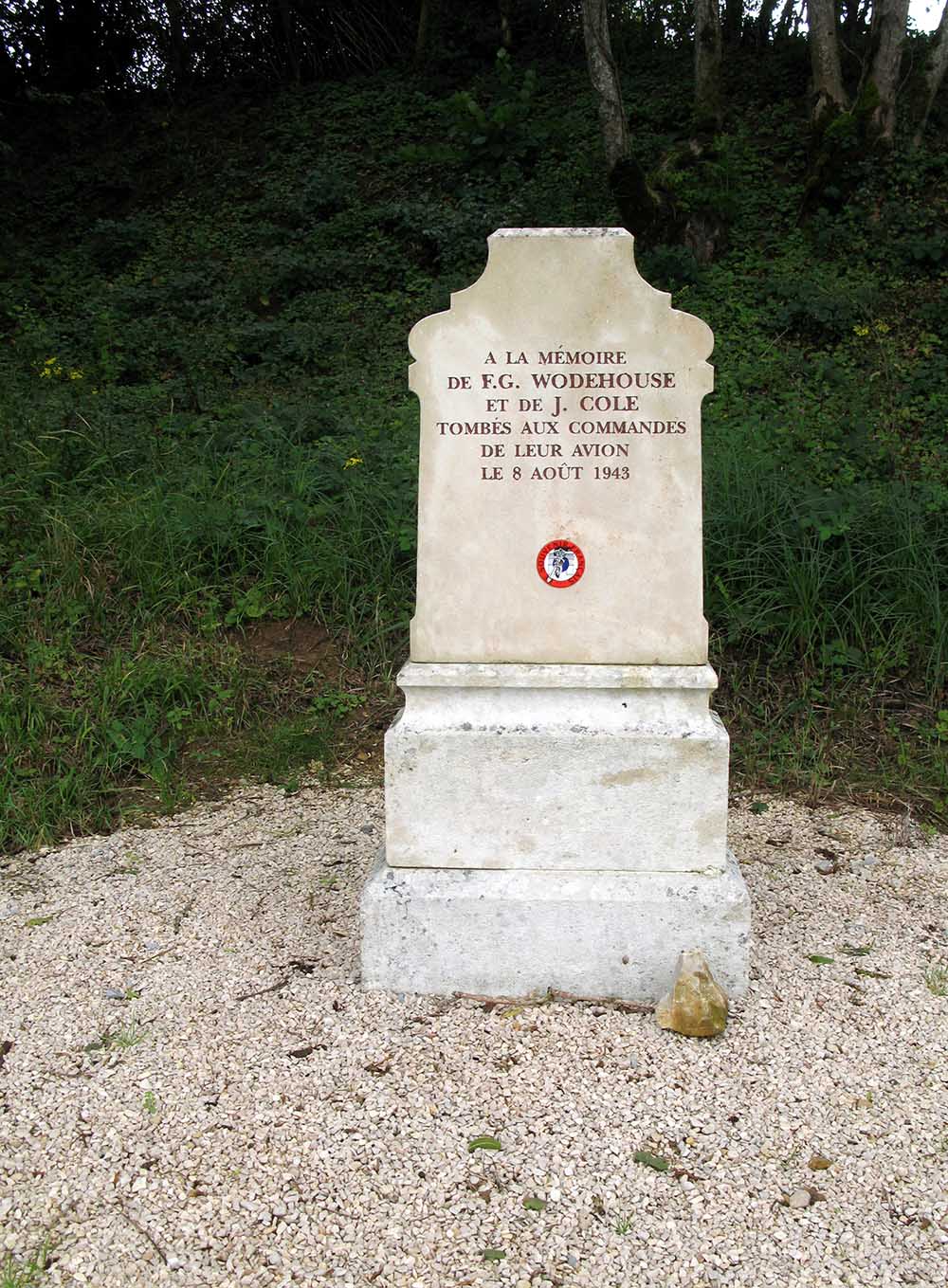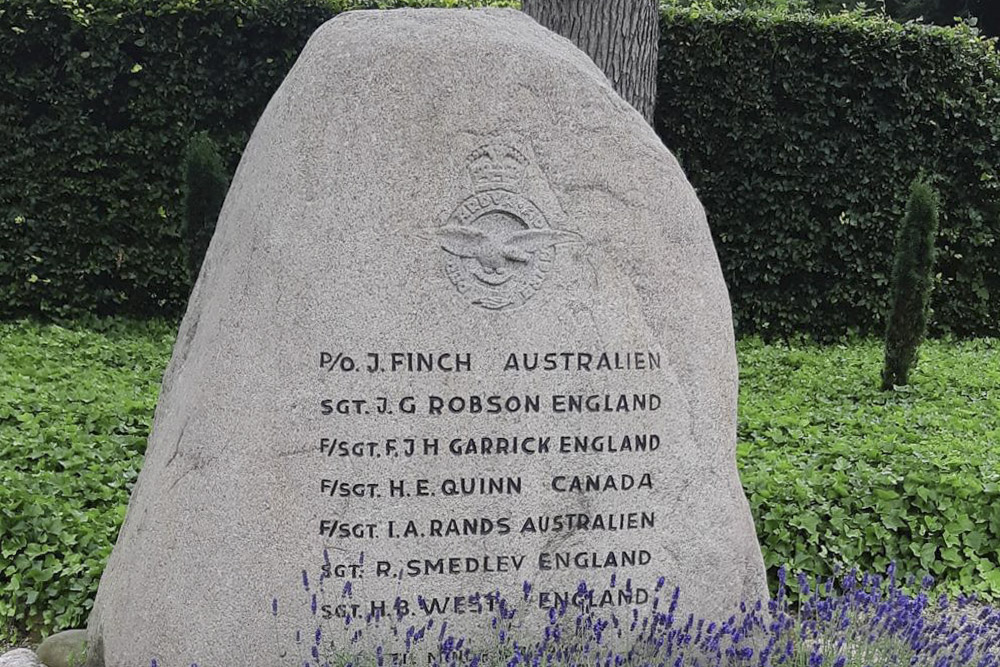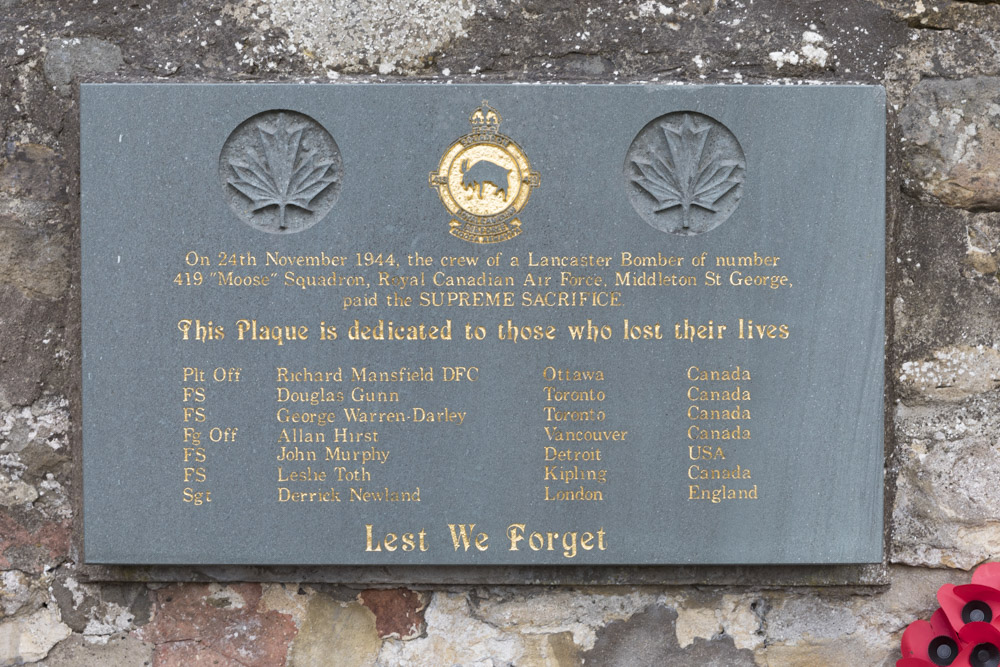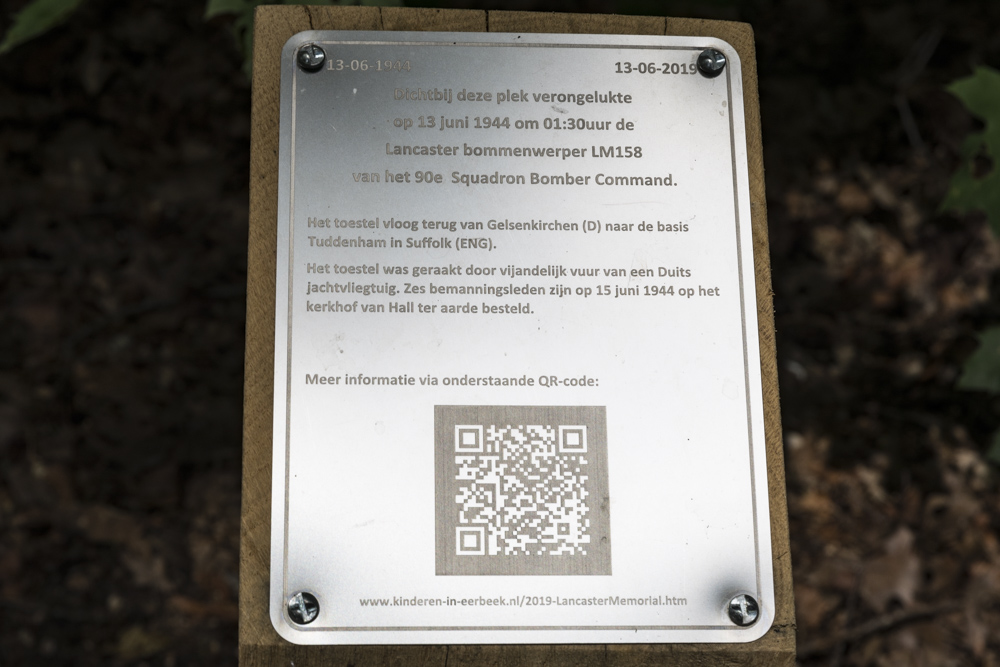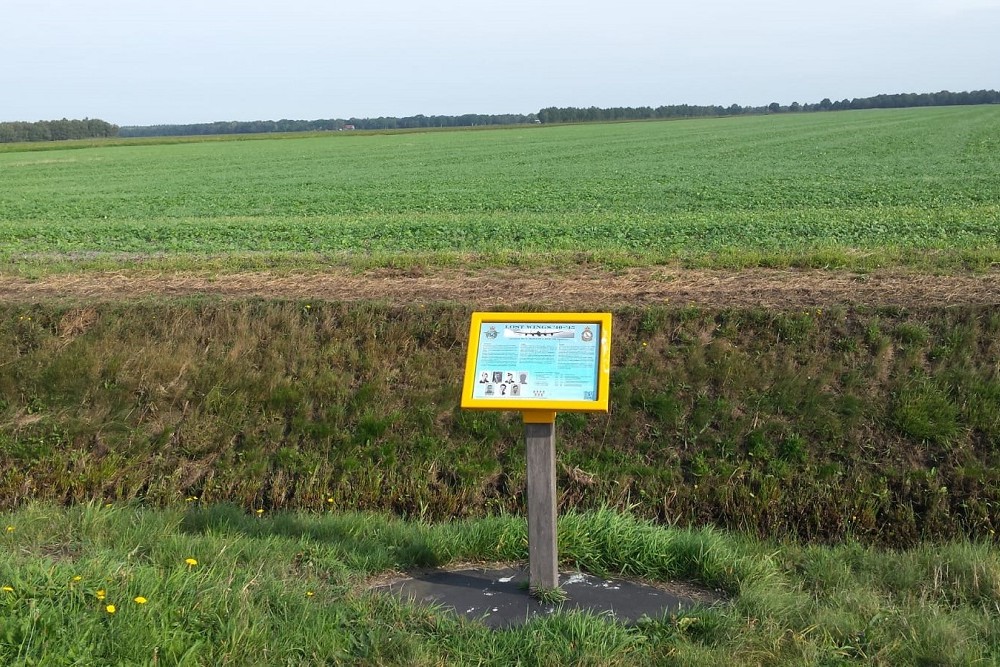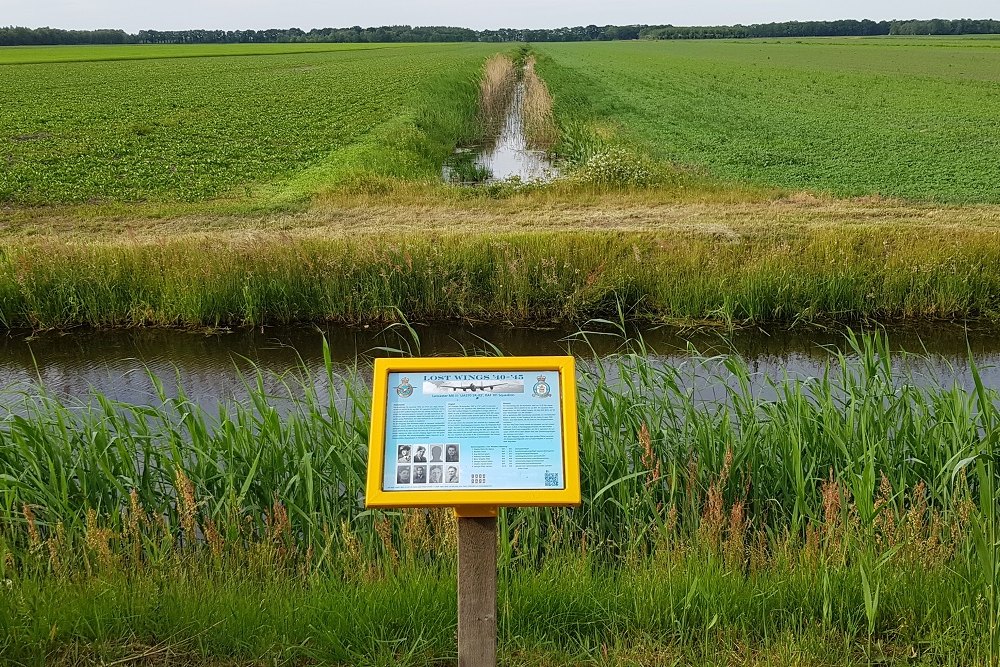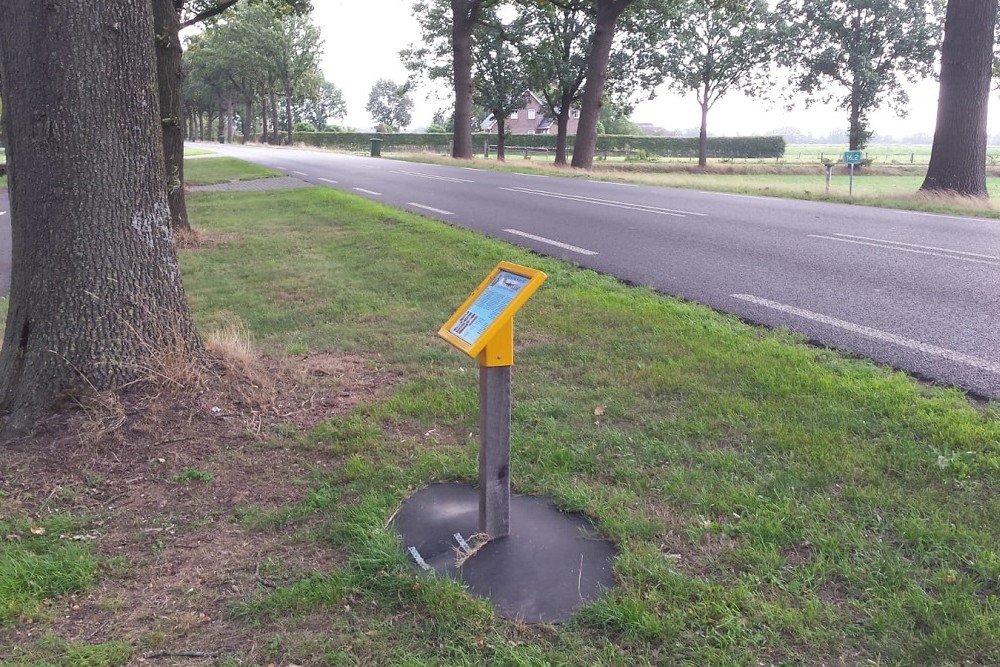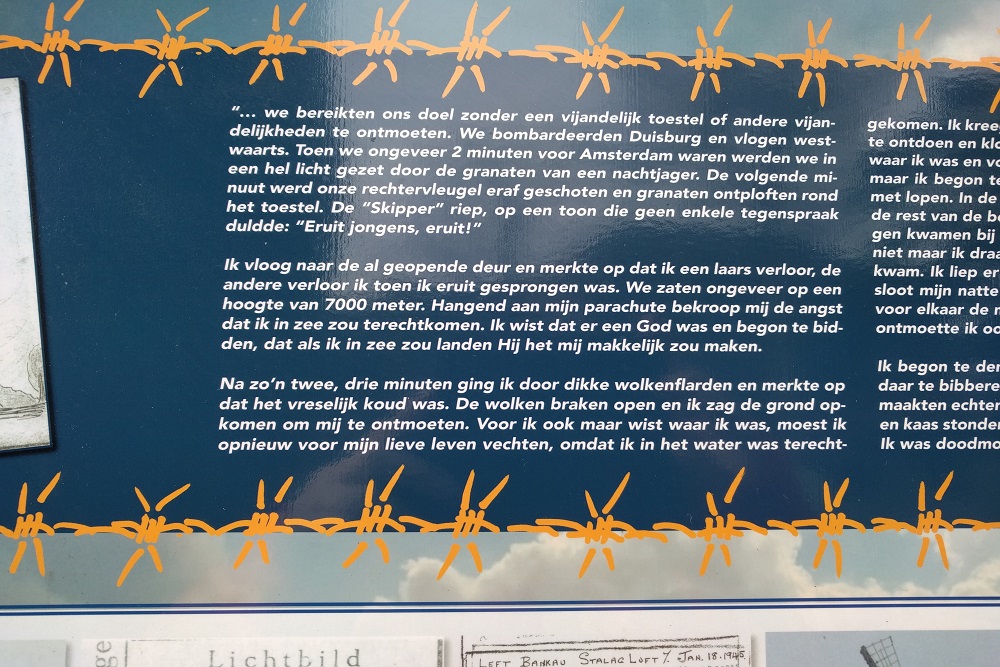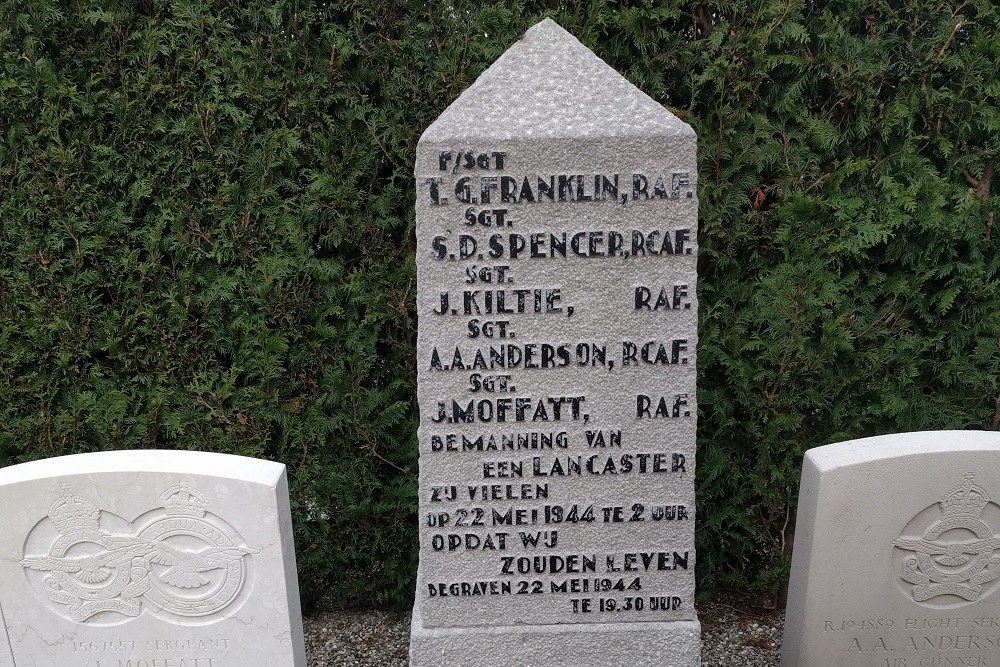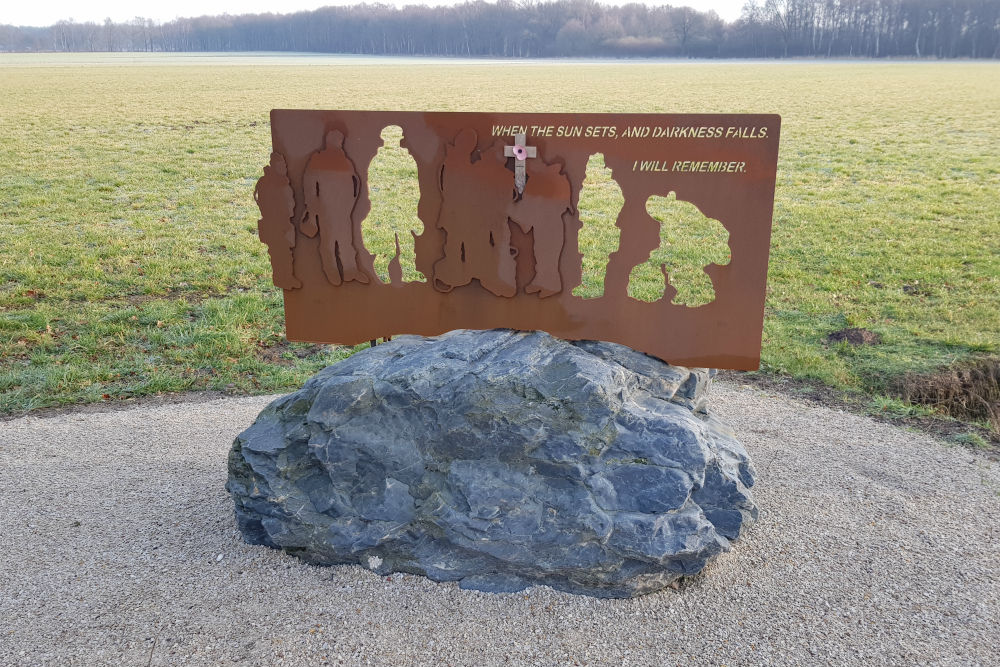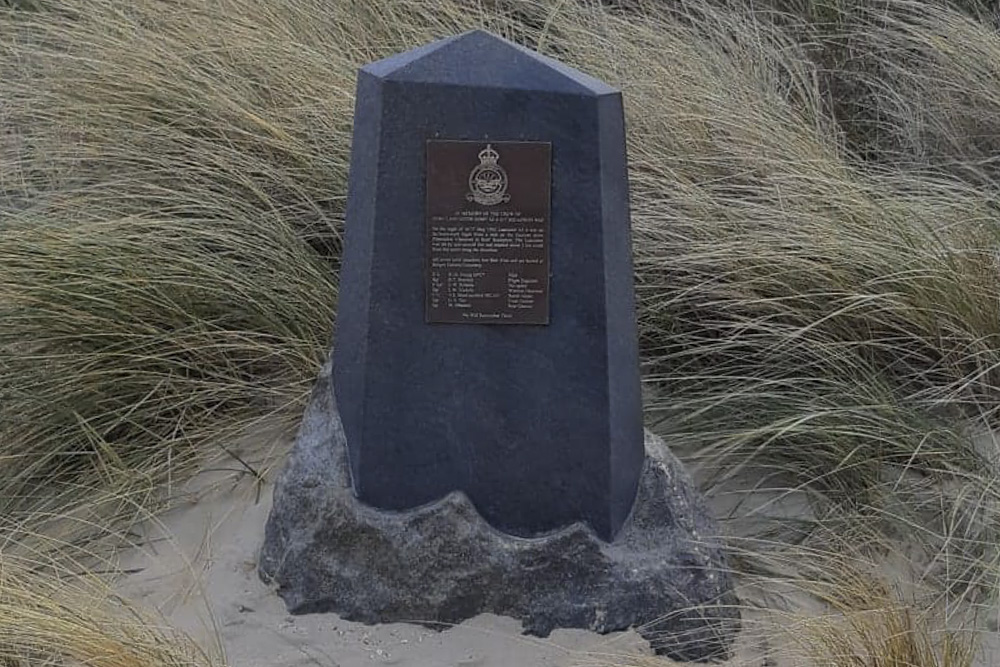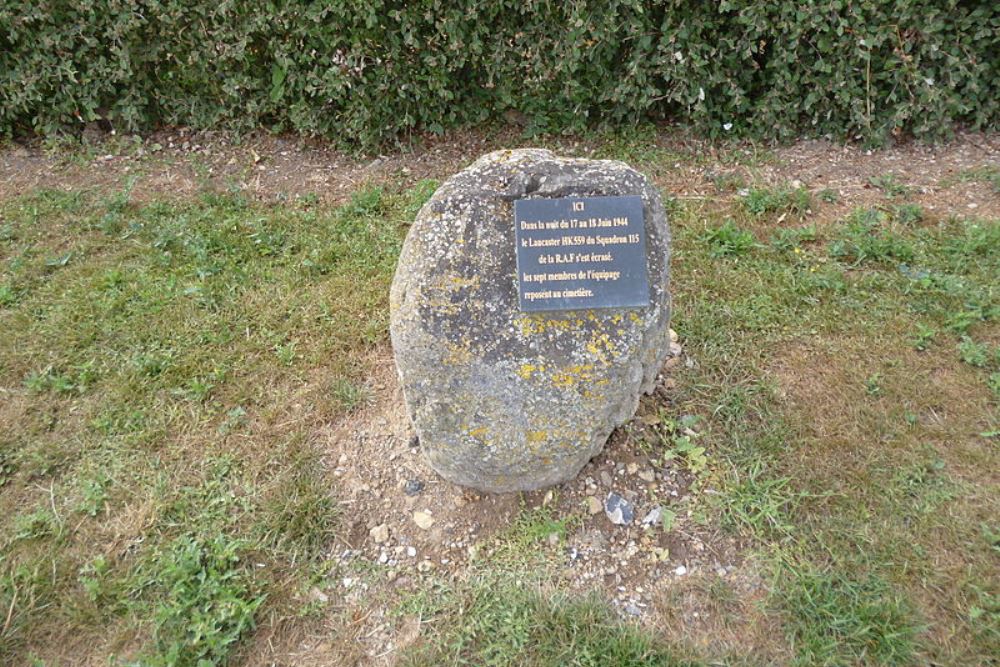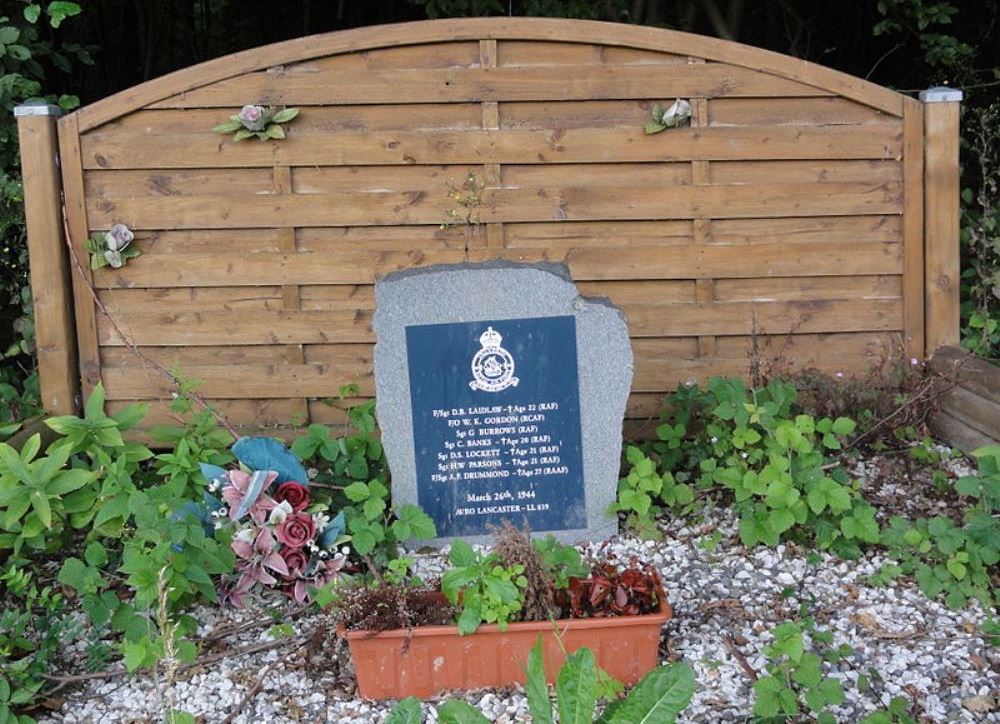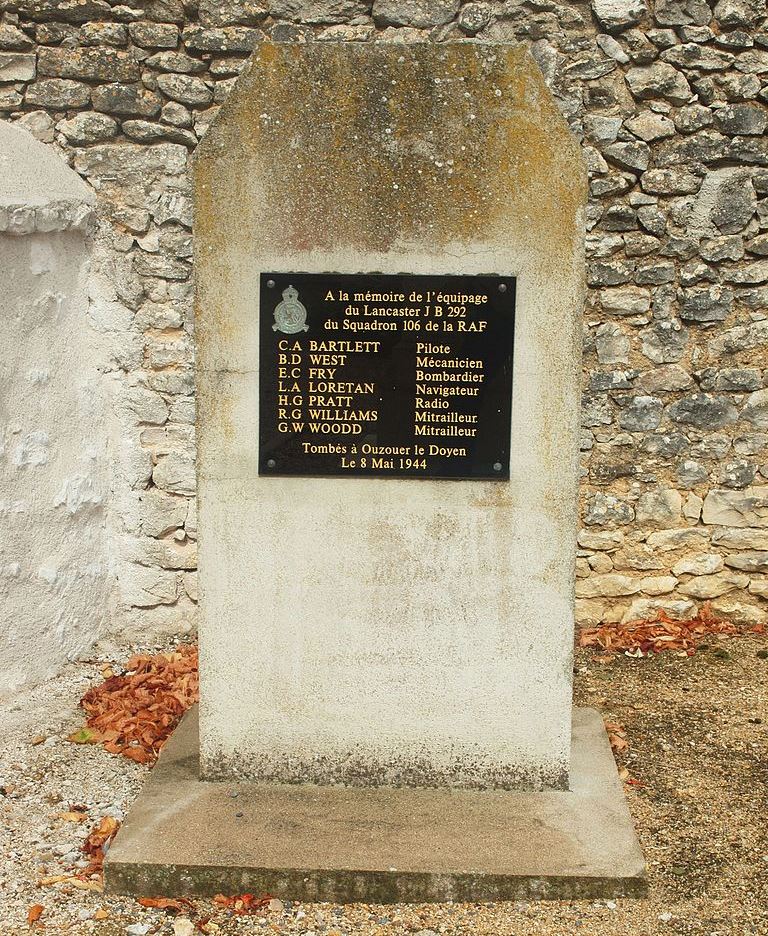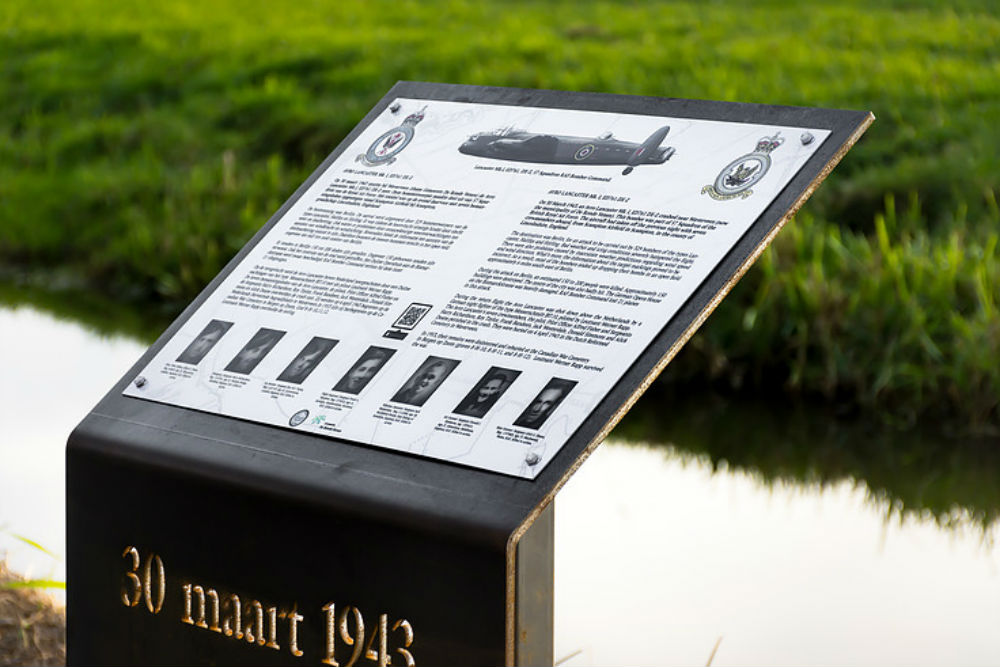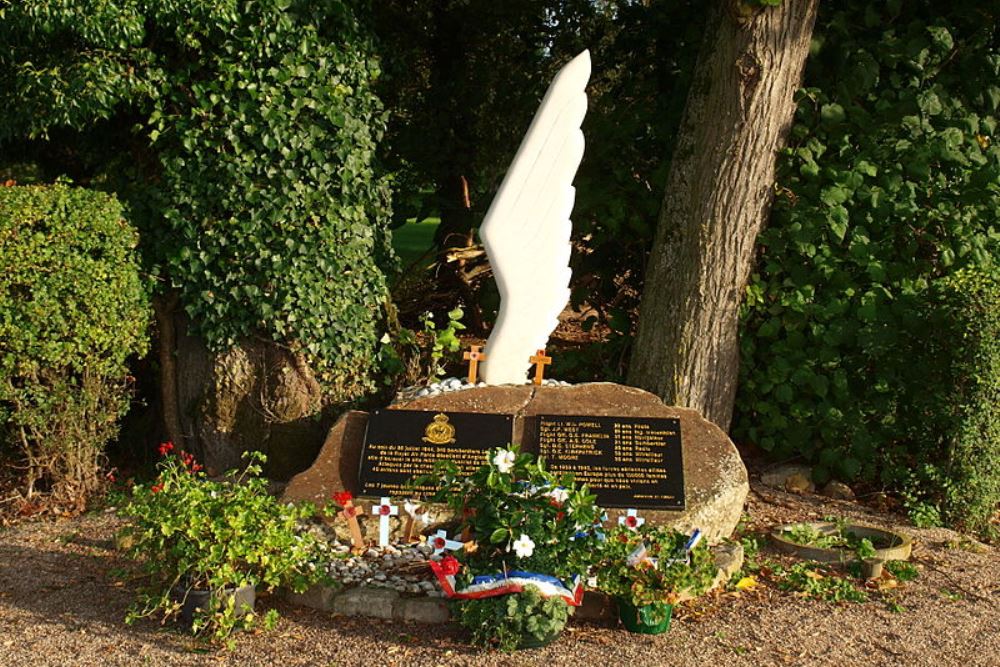Introduction
The four engine AVRO Lancaster probably was the most successful heavy bomber of all that have been in service with RAF Bomber Command. Initially designed as the twin engine AVRO Manchester, the improved design of the Lancaster became a success. Some 7,300 aircraft were built that served in 59 squadrons and dropped over 608,000 ton of bombs during more than 156,000 sorties.
Definitielijst
- Bomber Command
- RAF unit which controlled strategic and sometimes tactical bombing (as in Normandy)
- RAF
- Royal Air Force. British air force
From two to four engines
When the British Air Ministry issued specification P.13/36 for a twin-engine long range bomber, A.V. Roe Aircraft Co. or AVRO decided to enter the competition with a design designated Type 679. In February 1937, this design was selected along with the Halifax of Handley Page. In April 1937, AVRO received the order to produce two prototypes, L 7246 and L 7247[1].
The specification entailed a heavy bomber with a six man crew, two powered gun turrets: one in the a nose with two and one in the tail with four machineguns, a range of over 2,050 miles and a maximum speed of 276 mph at an altitude of 14,765 feet. Bombload would be 7,936 lbs. and the aircraft was to be propelled by Rolls Roye Vulture X engines[2]. Due to the slow development of and the serious problems with these engines, construction of the aircraft took a very long time. On July 25, 1939, the prototype made its maiden flight[3]. The aircraft, propelled by two Vulture engines of 1845 hp each, had been named AVRO Manchester in the meantime. The engines caused continuous problems though and the aircraft proved almost useless. As operational deployment in February 1941 had ended in disaster, towards 1942 all Manchesters had been withdrawn from service[4].After 202 planes had been built, a design was drafted for the Manchester Mk. II with two Bristol Centaurus engines and the Manchester Mk. III with four Rolls Royce Merlin X engines. This last design looked so promising that a Manchester Mk. I was converted to a prototype. The model was given the new type number 683 and later on a new name: the AVRO Lancaster. Prototype BT 308 made its maiden flight on January 9, 1941 and the aircraft performed magnificently[5]. After the span of the tailplane had been extended in May 1941, the definite Lancaster B.I/Mk. I was born. The first production Lancaster, L 7527 made its first flight in October 1941[6]. In December 1941, the first aircraft entered service with RAF No. 44 Squadron[7]. On March 3, 1942, on the first Lancaster mission, four aircraft dropped mines in German waters[8]
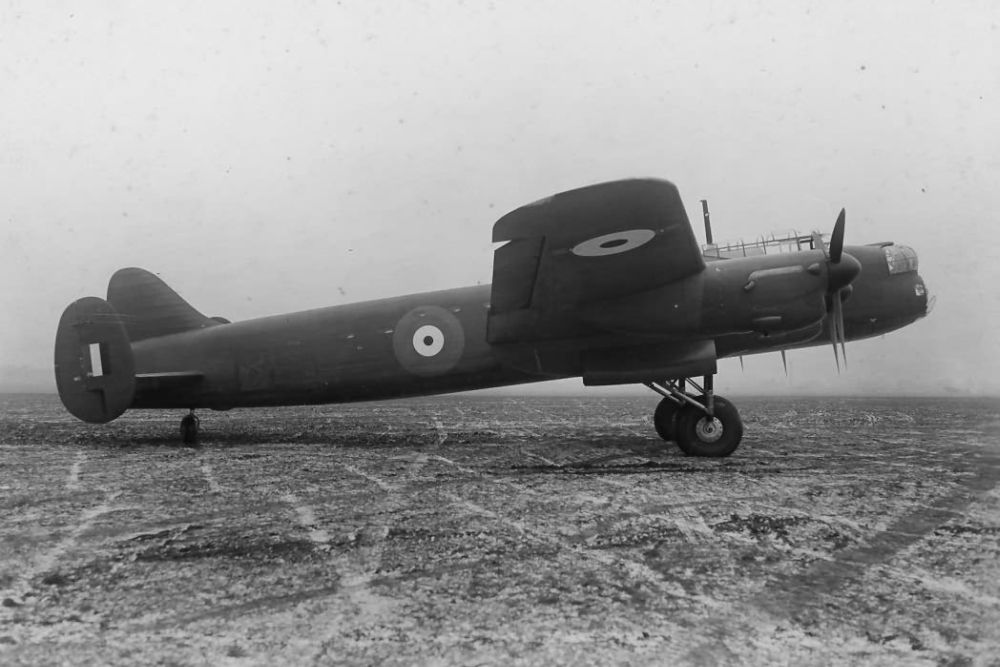
Avro Manchester III, BT 308, the first prototype of the Avro Lancaster. Source: Public Domain (unknown)
Later on, the Lancaster would be constructed in many versions in Great Britain and Canada. The number produced remains unknown but the majority of authors set it at 7,377[9]. In addition to the bomber, a transport aircraft was designed, based on the bomber, named the AVRO York of which 250 were produced. In 1942, a Mk. I was completely stripped of all military gear and sent to Canada where it was used to construct a passenger airplane. The Canadian Victory Aircraft company developed the AVRO Lancastrian to carry 10 passengers. RAF ordered 60 of which half was turned over to BOAC (British Overseas Airways Corporation)
A larger version of the Lancaster would be the Lincoln and after the war, the Lincoln would be developed further to a maritime reconnaissance aircraft, the AVRO Shackleton[10].
After the war, the Lancaster remained in service. They were used for photo reconnaissance, tanker and transport aircraft. As late as 1956, the RAF took its last Lancaster out of service. Canada, France, Egypt and Argentina have been using the Lancaster after the war.
Definitielijst
- RAF
- Royal Air Force. British air force
- Squadron
- A military unit in the Belgian navy usually six to eight small ships operating together under one command. The smallest military unit in the Dutch air force of about 350 men. In most countries is the designation of a military unit thesize of a company. It is either an independent unit, such as a battery, or part of a bigger Calvary unit. In the air force it is the designation of a unit of aircrafts.
Overview of versions
| Type | Task | Built |
| AVRO 679 | Design twin-engined AVRO Manchester | |
| AVRO 683 Manchester III | Design 4 engined Lancaster | |
| AVRO Lancaster Mk I | ||
| Lancaster B.I | Production series with Rolls Royce Merlin XX engines | |
| Lancaster B. I Special | Adapted to carry Tallboys and Grand Slams | 32 |
| Lancaster PR. I | Photo recon based on the B.I | |
| Lancaster B. I (FE) | Tropical version for the Far East | |
| Lancaster Mk II | ||
| Lancaster B. II | Bristol Hercules VI or XVI engines | 300 |
| Lancaster Mk III | ||
| Lancaster B. III | Rolls Royce Merlin XX built by Packard in the US | 3030 |
| Lancaster B. III Special | Adapted to carry Upkeep bombs | 23 |
| Lancaster ASR III/ASR 3 | Adapted for ASR missions | |
| Lancaster GR.3/MR.3 | Maritime reconnaissance | |
| Lancaster Mk IV/Lincoln Mk I | ||
| Lancaster B. IV | Enlarged version Merlin 85 inner, Merlin 68 outer. Became Lincoln B. I | |
| Lancaster Mk V/Lincoln Mk II | ||
| Lancaster B V | Enlarged version, Merlin 85 engines. Became Lincoln B. 2 | |
| Lancaster Mk VI | ||
| Lancaster B.VI | Rolls Royce Merlin 85/87 engines | |
| Lancaster Mk VII | ||
| Lancaster B. VII | Last production series, adapted upper turret | 230 |
| Lancaster B VII FE | Adapted for the Far East | |
| Lancaster B VII Western Union | Version for France | |
| Lancaster Mk X | ||
| Lancaster B X | B III built in Canada | 430 |
| Lancaster Mk XV/Lincoln Mk XV | ||
| Lancaster B XV | B IV built in Canada. Became Lincoln XV | 1 |
AVRO Lancaster B. I/Mk I
The first Lancaster Mk. I flew in October 1941 and No. 44 Squadron received its first three aircraft on Christmas Eve. The first operational flights followed in March 1942. The Mk. I was clearly based on the Manchester and was almost identical to the first prototype. The lower turret, copied from the Manchester was seldom used so in practice it was often removed.
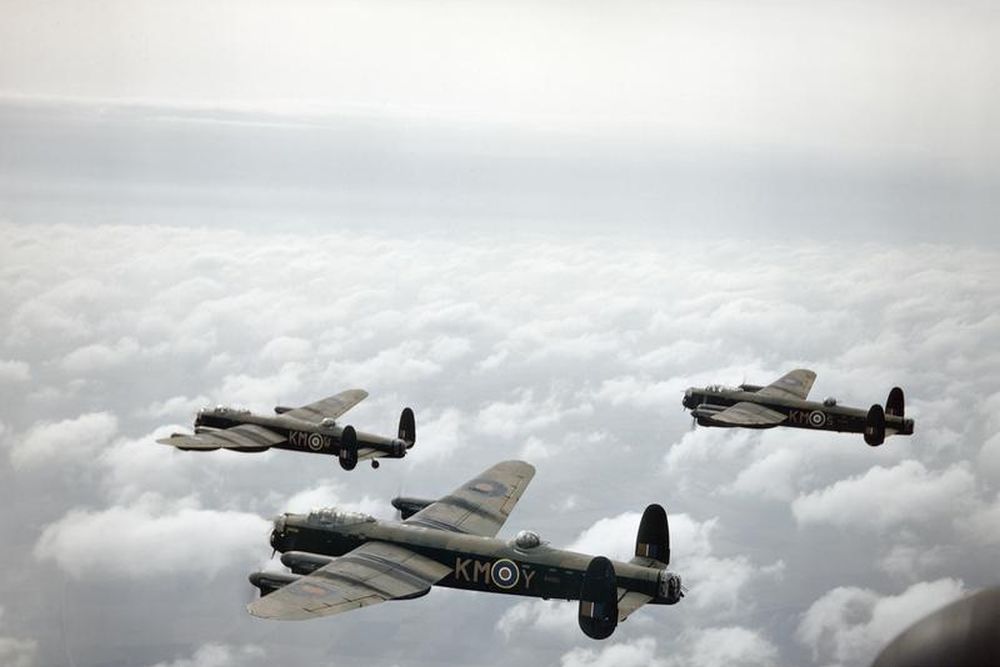
Mk I, No. 44 Squadron, f.l.t.r. W4125, `KM-W, Sergeant Colin Watt, RAAF; W4162,`KM-Y, Pilot Officer T G Hackney; en W4187, `KM-S, Pilot Officer J D V S Stephens. Source: Imperial War Museum TR 198
The bomber proved to be a great success during the bombings at night by Bomber Command and during the course of its production, improvements were often applied due to experiences in operation. For instance, the bomb bay was enlarged in order to accommodate a 8000 pound bomb. These planes with increased bombload were usually called Lancaster B. Mk. I but another designation of type wasn't applied initially[11]. This enlargement was repeated later on and after removal of the bomb doors, even the 22,000 pound Grand Slam could be loaded. The engines were gradually improved as well. Whereas the Rolls Royce Merlin XX was the standard initially, later on, the Merlin 22 and later again, the Merlin 24 became the standard, resulting of course in increased speed, range and .
The ultimate aircraft, capable of carrying the Grand Slam was designated Lancaster B. Mk. I (Special). In these aircraft, the nose and tail turret had been removed. Two specials - HK 541 and SW 244 - were tested with a large additional fuel tank for service in the Pacific[12]. They were equipped with improved H2S navigation radar and Merlin 24 engines. After August 1943, a total of 33 aircraft have been built which have been deployed in Europe only.
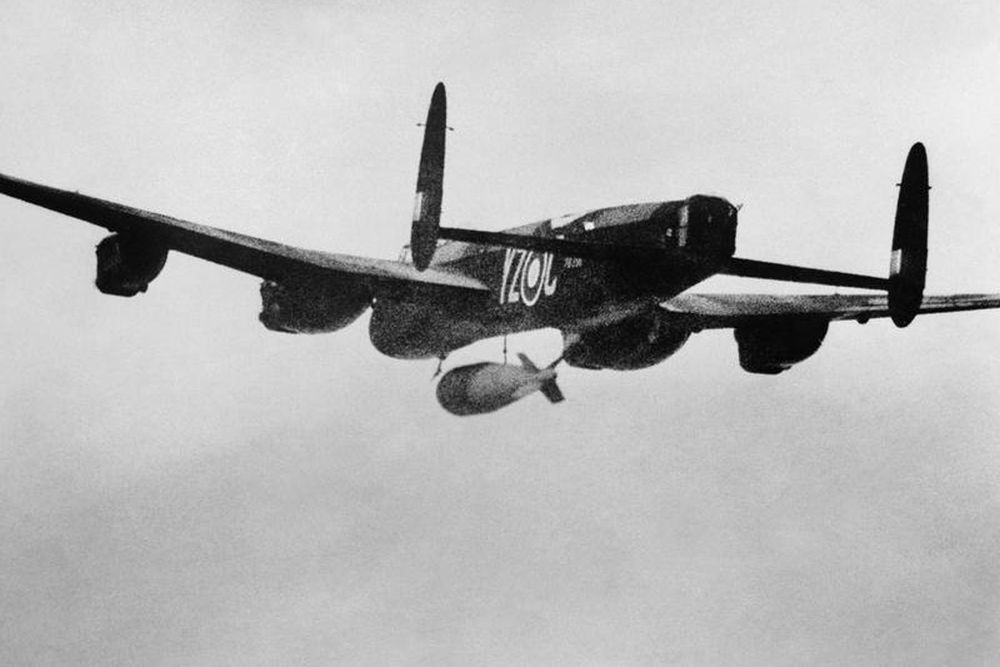
Avro Lancaster Mk I (Special), PB996 YZ-C No. 617 Squadron, Flying Officer P Martin, dropping a Grand Slam. Source: Imperial War Museum CH 15374
In the fall of 1944, the idea came up to deploy the Lancaster in the Far East as well. To this end, the plane was adapted by removing the upper turret and installing additional fuel tanks. The result was the Lancaster B. Mk. I (FE) which could be deployed from 1945 onwards. In contrast to the quadruple 7.7 machineguns of the B. I, the B. I (FE) was equipped with a Fraser Nash FN. 82 tail turret with twin 12.7mm machineguns[13]
A few aircraft, set up as photo reconnaissance craft, served in Nos. 82 and 541 Squadron. These planes were completely stripped of all defensive armament and a high resolution camera was fitted in the bomb bay. This AVRO Lancaster PR. 1 served in No. 683 (PR) Squadron which was disbanded as late as 1953.
Definitielijst
- Bomber Command
- RAF unit which controlled strategic and sometimes tactical bombing (as in Normandy)
- H2S
- Groundscanning radar on board of a bomber.
- radar
- English abbreviation meaning: Radio Detection And Ranging. System to detect the presence, distance, speed and direction of an object, such as ships and airplanes, using electromagnetic waves.
- Squadron
- A military unit in the Belgian navy usually six to eight small ships operating together under one command. The smallest military unit in the Dutch air force of about 350 men. In most countries is the designation of a military unit thesize of a company. It is either an independent unit, such as a battery, or part of a bigger Calvary unit. In the air force it is the designation of a unit of aircrafts.
Technical data AVRO Lancaster Mk I
| Type: | AVRO Lancaster B. Mk I[14] |
| Task: | Heavy bomber |
| Crew: | 7 |
| Wingspan | 101 feet |
| Wingsurface | 1,300 sq feet |
| Length: | 70 feet |
| Heigth: | 21 feet |
| Weight empty: | 36,828 lbs |
| Weight max: | 70,000 lbs |
| Engines: | 4 Rolls Royce Merlin XXVI |
| Cylinders per engine: | 12 |
| Power per engine: | 1,640 hp |
| Max.speed: | 287 mph |
| Range: | 2,529 miles with payload |
| Ceiling: | 24,500 feet |
| Armament: | 8 7.7 machineguns |
| Bomb load: | 14,000 lbs (Special 22,000) |
| Production: | approx 3,425 |
AVRO Lancaster B. II/Mk. II
At the end of 1941 there was a shortage of Rolls Royce Merlin engines due to the heavy demand, hence the Bristol Hercules VI of 1650 hp was selected. Of the two planned prototypes, only one was produced which made its maiden flight in November 1941. The performance was comparable to those of the Mk. I. No more than 300 of this type were built by Armstrong Whitworth. Gradual improvements were made here as well, resulting in the Lancaster B. II or Mk. II equipped with Bristol Hercule XVI engines. Also by using Merlins, built under license in the USA, delivery could keep up with demand and 300 B. II aircraft were built[15]
AVRO Lancaster B. III/Mk. III
By using Packard engines built in America, the B. III or Mk. III was produced, almost identical to the Mk. I. The first prototype was a converted Mk. I which made its maiden flight in August 1942. The first production units followed that same year. By enlarging the bomb bay, other versions of this type were developed, designated Lancaster B. Mk. III. Later on the lower turret was omitted as well. Furthermore in later versions, the four 7.7mm tail guns were replaced by two 12.7mm Browning machineguns.
In 1943, 23 aircraft of this type were selected to be converted to Dam Busters. Equipped with a catapult device, with which a cylindrical rotating bomb was launched. No. 617 Squadron used these aircraft to bomb the Eder, Schwelme, Möhne and Sorpe dams. This was an attempt to cripple the electricity supply to Germany's industrial heart, an undertaking that was certainly successful for a short time.
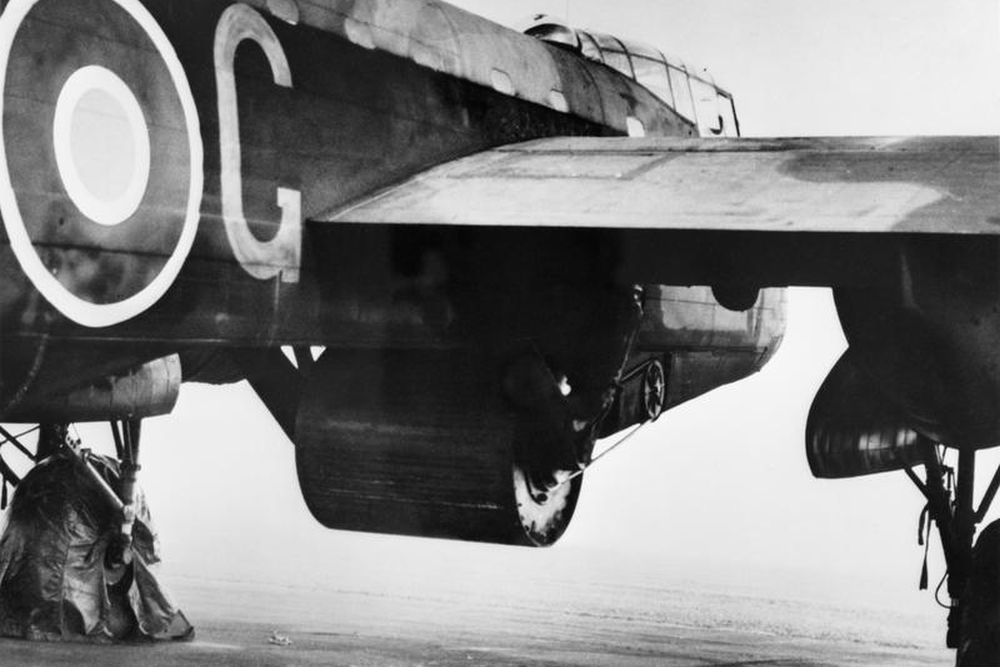
Avro Lancaster Mk III (Special), ED932/G AJ-G, Manston carrying an Upkeep bomb. Source: Imperial War Museum HU 69915
After the war, various Mk. III aircraft which had survived the war, were converted to ASR.III/ASR. 3 (Air Sea Rescue), GR. 3 (General Reconnaissance) of MR. 3 (Maritime Reconnaissance)[16]. The ASR planes were equipped with a life raft in the bomb bay which could be dropped at sea.
Definitielijst
- Browning
- American weapon’s designer. Famous guns are the .30’’ and .50’’ machine guns and the famous “High Power” 9 mm pistol.
- Dam Busters
- Nickname for the group of pilots of 617 Squadron who attacked and destroyed some of the dams in the Ruhr valley in the night of 16-17 May 1943. Although this difficult and daring and attack was successful the damage to the German (war) effort was limited. Besides that a large number of foreign forced labourers and allied POW were killed. Eight out of 19 Lancasters were shot down. However the moral and propaganda value were quite high.
- Squadron
- A military unit in the Belgian navy usually six to eight small ships operating together under one command. The smallest military unit in the Dutch air force of about 350 men. In most countries is the designation of a military unit thesize of a company. It is either an independent unit, such as a battery, or part of a bigger Calvary unit. In the air force it is the designation of a unit of aircrafts.
Technical data AVRO Lancaster Mk III
| Type: | Lancaster Mk III |
| Task: | Heavy bomber |
| Crew: | 7 |
| Wingspan | 102 feet |
| Wing surface | 1,300 sq feet |
| Length: | 69 feet |
| Heigth: | 20 feet |
| Weight empty: | 34,987 lbs |
| Weight max: | 62,986 lbs |
| Enginess: | 4 Rolls Royce Merrlin 28 or 38 |
| Cylinders per engine: | 12 |
| Power per engine: | 1,460 |
| Speed max: | 281 mph |
| Cruising speed: | 227 mph |
| Range: | 2,218 miles |
| Ceiling: | 21,161 feet |
| Armament: | 6 7.7mm machineguns |
| Bomb load: | 14,000 lbs |
| Production | 3039 |
Other versions
AVRO Lancaster B. IV/Mk. IV, B. V/Mk. V, B. XV/Mk. XV
The intended Lancasters Mk. IV, V and the Canadian XV were built after the war. These versions differed so much from the original model, they were produced under a different name, the AVRO Lincoln.
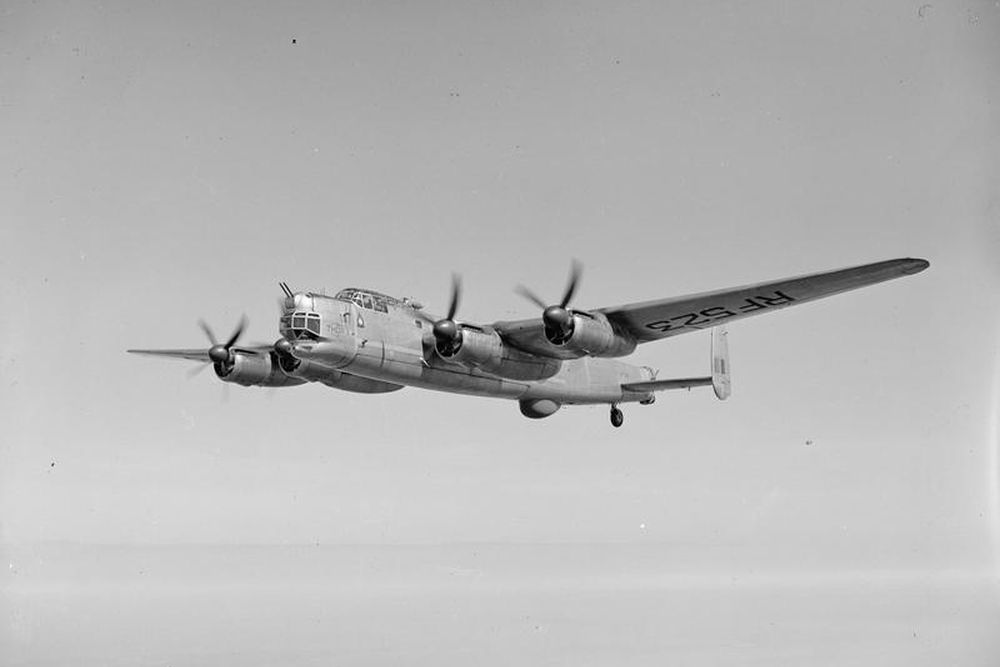
Avro Lincoln Thor II , Empire Air Armaments School, RAF Manby. Source: Imperial War Museum (MOW) R 2407
The Lancaster Mk. IV was built with a larger wingspan and a longer fuselage. The turret was a Boulton Paul with twin 12.7mm machineguns. Three prototypes (PW 925, PW 929 and PW 932) were built under Lancaster rule before the aircraft was renamed AVRO Lincoln B. 1
The Mk. V was comparable to the Mk. IV but was propelled by Merlin 85 engines. This aircraft would be designated AVRO Lincoln B. 2.
The Mk. XV was identical to the Mk. IV and V but was built in Canada as AVRO Lincoln B. XV.
AVRO Lancaster B. VI/Mk. VI
The next Lancaster version was the Mk. VI. Four Rolls Royce Merlin 85 engines of 1635 hp each were fitted in this model. It was a converted Mk. III, introduced in the spring of 1944. Only nine research aircraft were built of which four were tested in operations by Nos. 7 and 635 Squadron. The aircraft were equipped with a device to jam enemy radar and have been withdrawn in November 1944[17].
AVRO Lancaster B. VII/Mk. VII
This version was identical to the Lancaster B. Mk. VII and was intended for the Far East. Of these, 180 were built which arrived after the war. The only difference from the Mk. III was the dorsal turret, an American Glenn Martin which was mounted further to the front[18].
A Far East version of this type B. VII (FE) was also developed from the Mk. VII. In contrast to the B. VII, in the B. VII (FE) the quadruple turret was replaced by a Fraser Nash tail turret with twin 12.7mm machineguns[19].
The designations B. VII and B. IX or Mk. VIII and Mk. IX were reserved for possible future developments of the Lancaster. These were never used however[20].
AVRO Lancaster B. X/Mk. X
This was the designation for the Lancasters B. III built in Canada. The Victory Aircraft Co. constructed a total of 430 Lancasters B. Mk. X This type was fitted with a Glenn Martin dorsal turret with a 12.7mm Browning machinegun[21].
Definitielijst
- Browning
- American weapon’s designer. Famous guns are the .30’’ and .50’’ machine guns and the famous “High Power” 9 mm pistol.
- radar
- English abbreviation meaning: Radio Detection And Ranging. System to detect the presence, distance, speed and direction of an object, such as ships and airplanes, using electromagnetic waves.
- Squadron
- A military unit in the Belgian navy usually six to eight small ships operating together under one command. The smallest military unit in the Dutch air force of about 350 men. In most countries is the designation of a military unit thesize of a company. It is either an independent unit, such as a battery, or part of a bigger Calvary unit. In the air force it is the designation of a unit of aircrafts.
Epilogue
After the war, the RCAF converted the B. X to the Mk. 10 to serve many purposes, in fact a number of subtypes was created. For reconnaissance flights over arctic areas, three planes were laid out as Lancaster Mk. 10AR (Arctic Reconnaissance). Thirteen aircraft were fitted with additional windows for observation as Mk. 10BR (Bomber Reconnaissance). Two B. Xs were laid out as Mk. 10DC (Drone Controller) for launching and steering Ryan Frisbee drones from the air. Approximately 75 aircraft were converted to Mk. 10MR (Maritime Reconnaissance, later MP for Maritime Patrol) by removing the upper turret. Five planes were converted to Mk. 10N (Navigational Trainer). In order to test the Orenda jet engines, the Mk. 10O was produced. Eleven B. X planes were converted to Mk. 10P (Photo Reconnaissance). As replacements for the Mk. 10BR and Mk. 10MR, the aircraft were adapted and named Mk. 1 S&R (Search and Rescue). Finally, Mk. 10S was introduced as designation for standard bombers with Merlin 224 engines. These aircraft were mainly held in reserve for use in war situations.
Notes
- Marks, 2015, p. 7
- Marks, 2015, p. 6
- Marks, 2015, p. 7
- Jackson, 2013, p. 355
- Winchester, 2004, p. 27
- Goulding, 1966, p. 3
- Mantelli, 2017, p. 12
- Derry, 2014, p. 2
- Derry, 2014, p. 3
- Marks, 2015, p. 61-62
- Franks, 2000, p. 83-84
- Franks, 2000, p. 83
- Derry, 2014, p. 5
- Newdick, 2015
- Derry, 2014, p. 4
- Derry, 2014, p. 5
- Derry, 2014, p. 5
- Derry, 2014, p. 5
- Derry, 2014, p. 5
- Derry, 2014, p. 5
- Derry, 2014, p. 5
Information
- Article by:
- Wilco Vermeer
- Translated by:
- Arnold Palthe
- Published on:
- 31-07-2023
- Last edit on:
- 22-06-2024
- Feedback?
- Send it!
Related sights
Related books
Sources
- DAVID, D., The Complete Encyclopedia Of World Aircraft, Brown Packaging Books Ltd., London, 1997.
- DERRY, M. & ROBINSON, N., Avro Lancaster 1945-1965, Pen and Sword, 2014.
- FRANKS, R., The Avro Lancaster, Manchester and Lincoln, SAM Publications, 2000.
- GOULDING, B., The Avro Lancaster I, Profile Publications Ltd., 1966.
- GUNSTON, B., Jane's Fighting Aircraft of World War II, Military Press, 1998.
- JACKSON, A.J., Avro Aircraft since 1908, Putnam Aeronautical Books, London, 2013.
- MANTELLI, A. e.a., Avro Lancaster - Handley Page Halifax - Short S.29 Stirling, Edizioni R.E.I., 2017.
- MARKS, R., Avro Lancaster, Bloomsbury Publishing, 2015.
- NEWDICK, T., The World’s Greatest Military Aircraft, Amber Books Ltd, 2015.
- WILSON, S., Aircraft of WWII, Australian Aviation, 1999.
- WINCHESTER, J., Aircraft of World War II, Thunder Bay Press, 2004.
